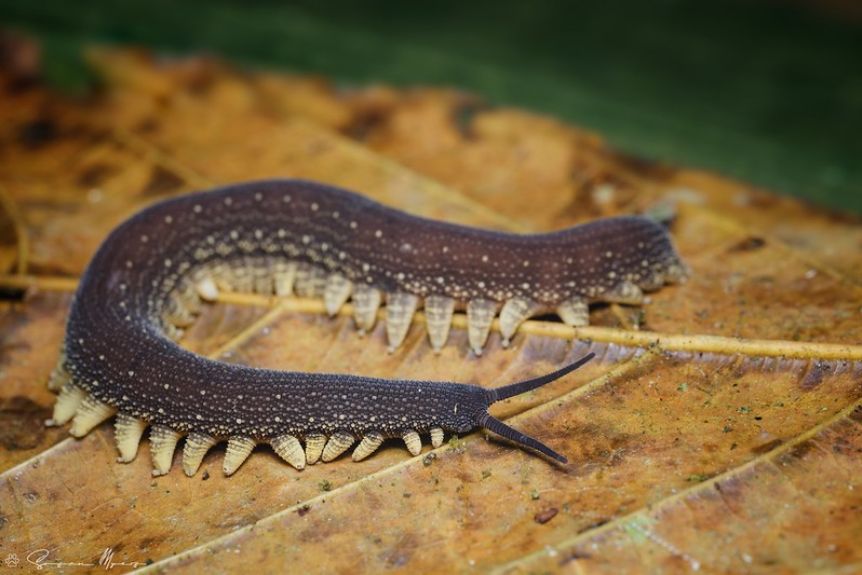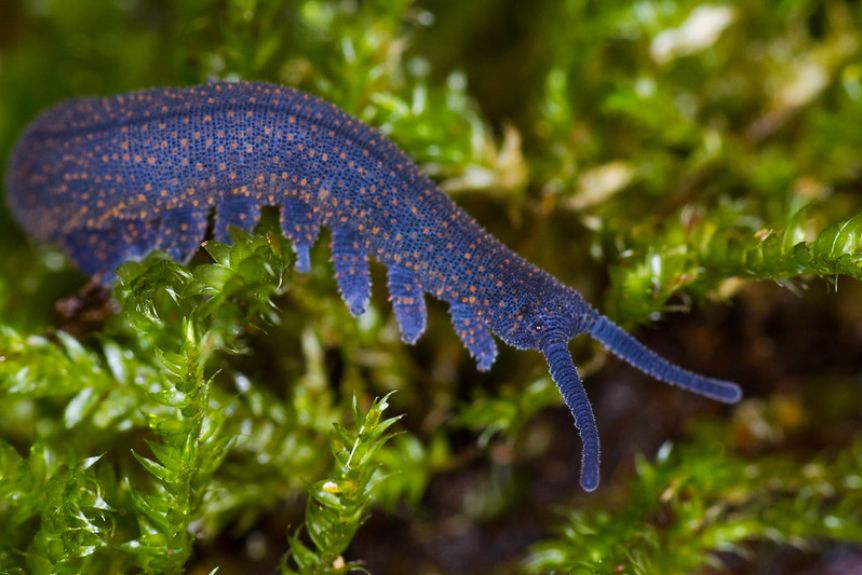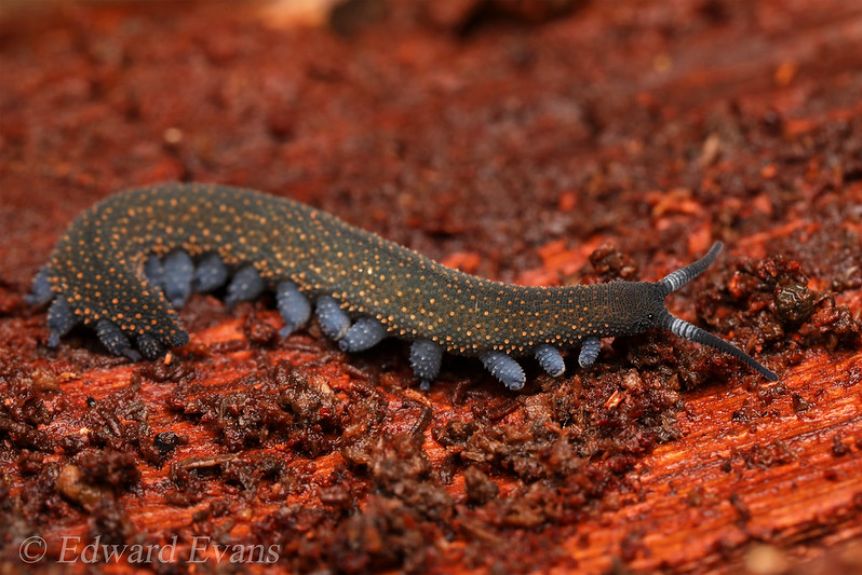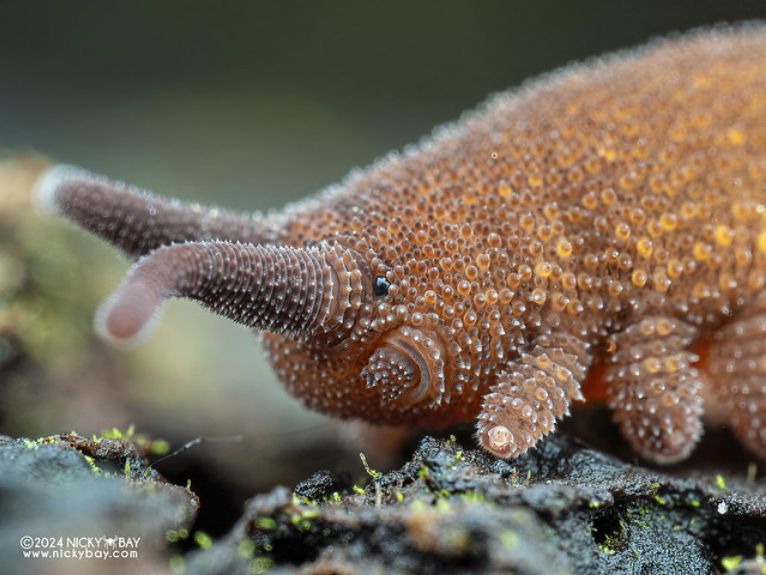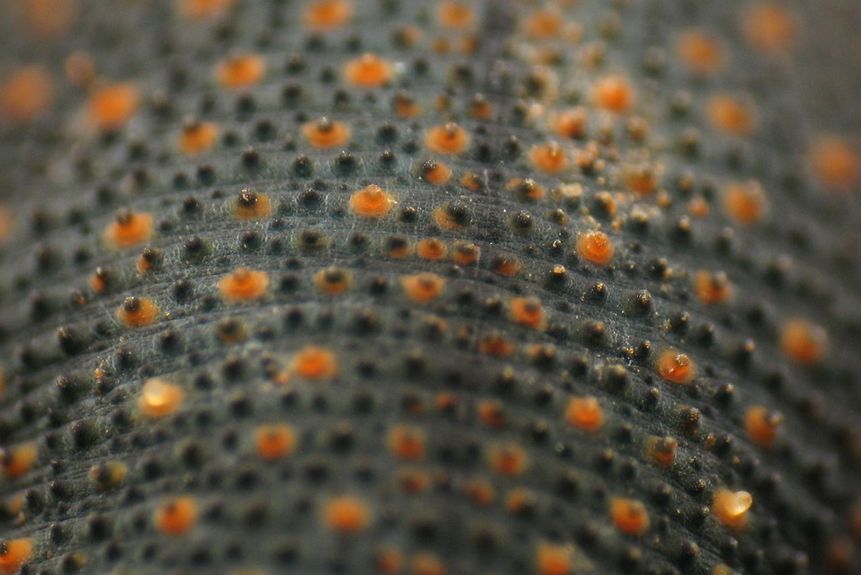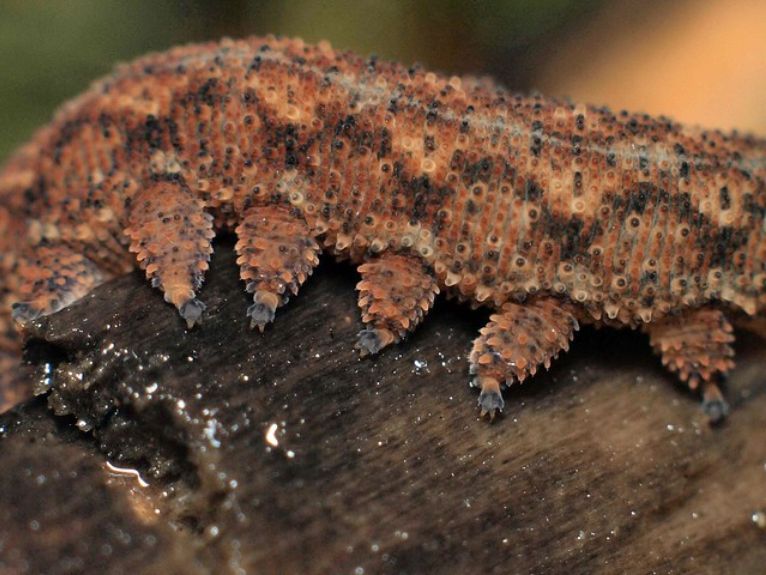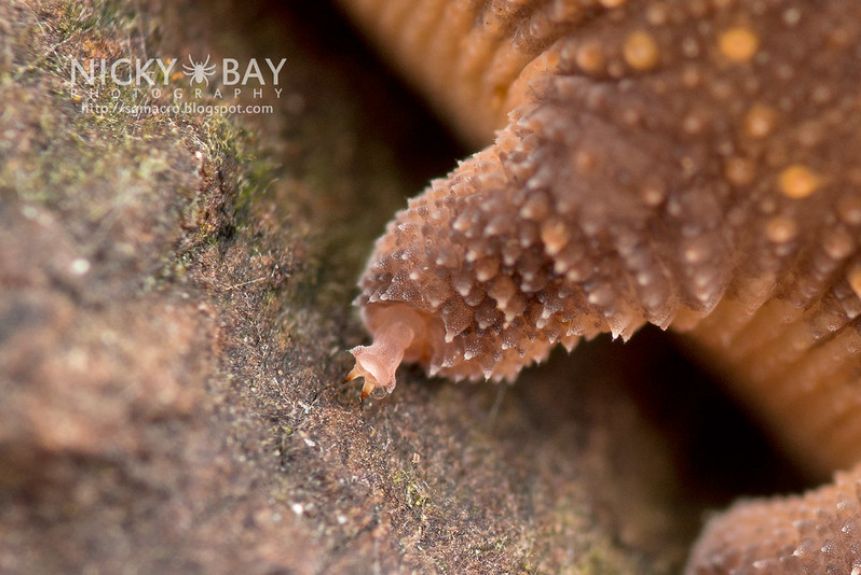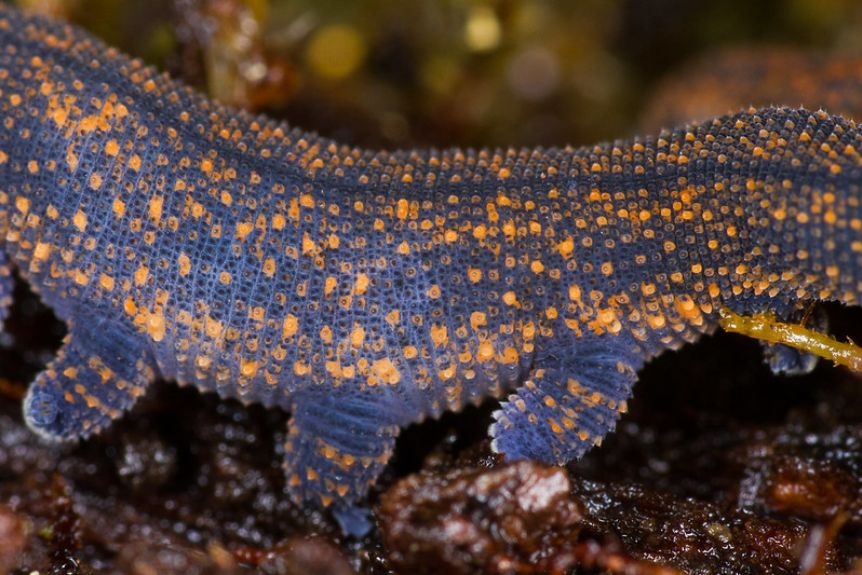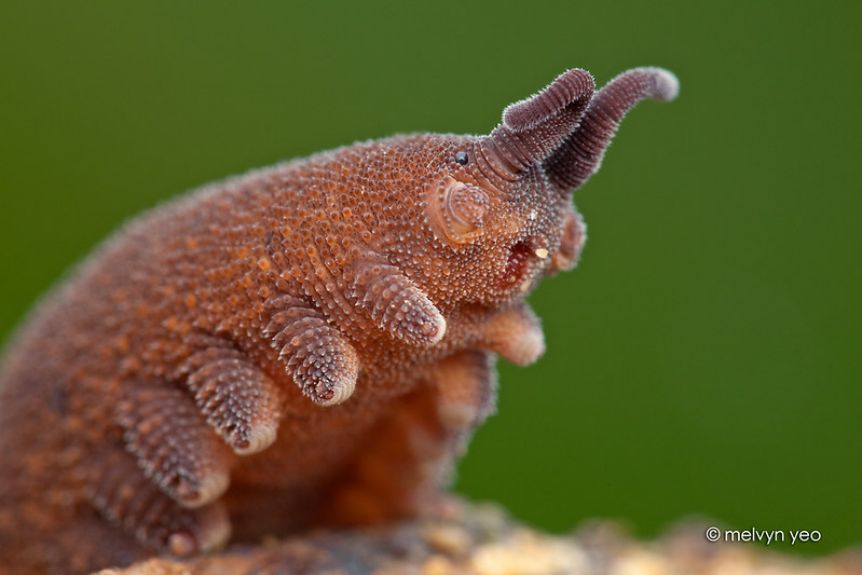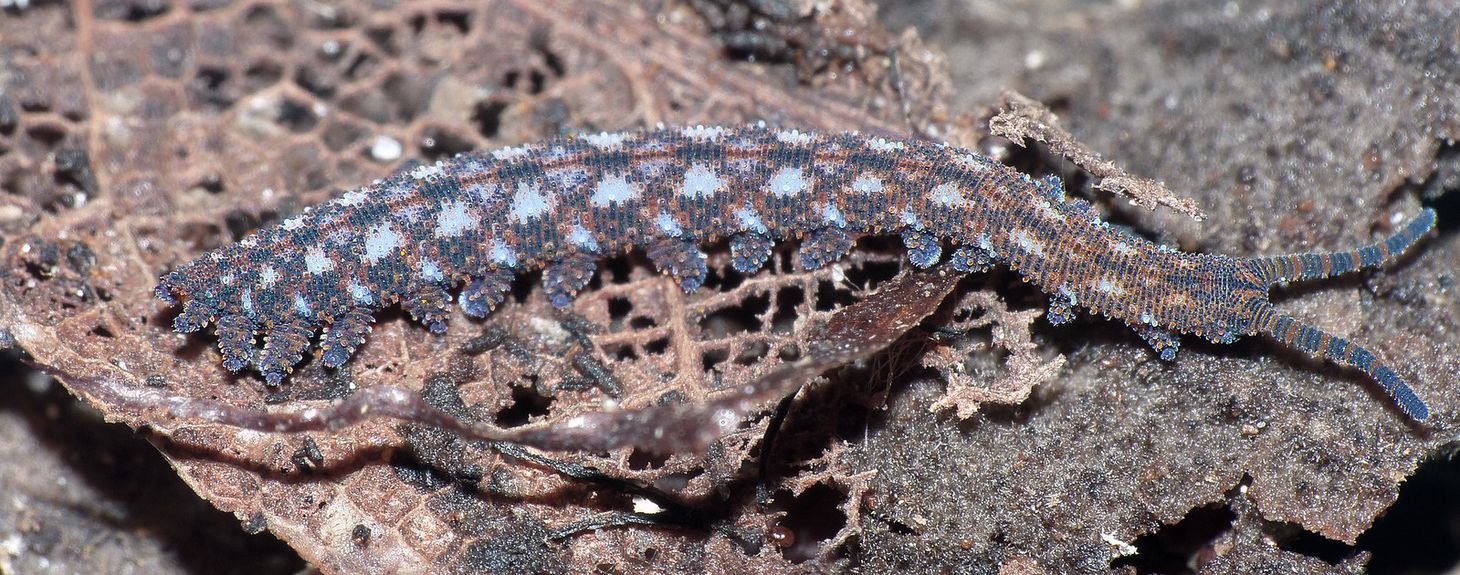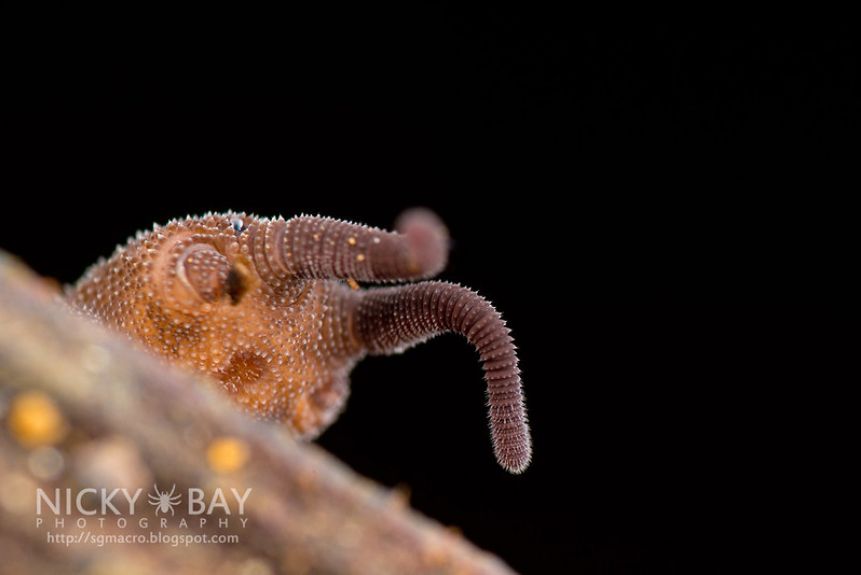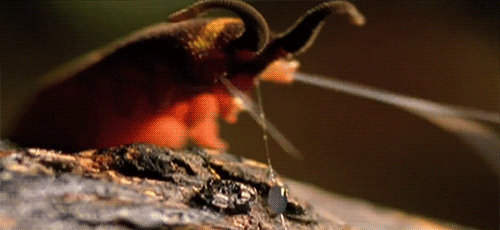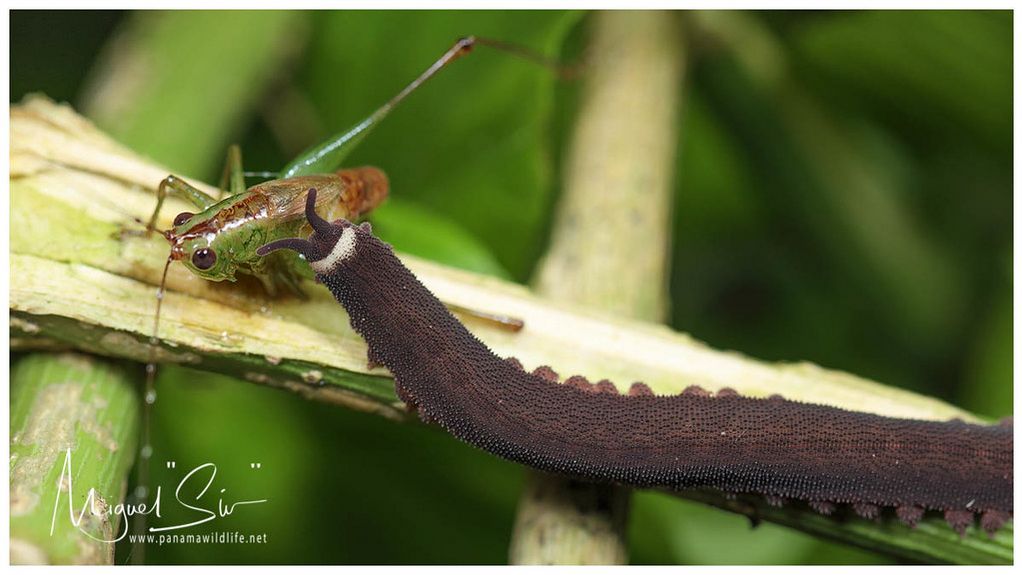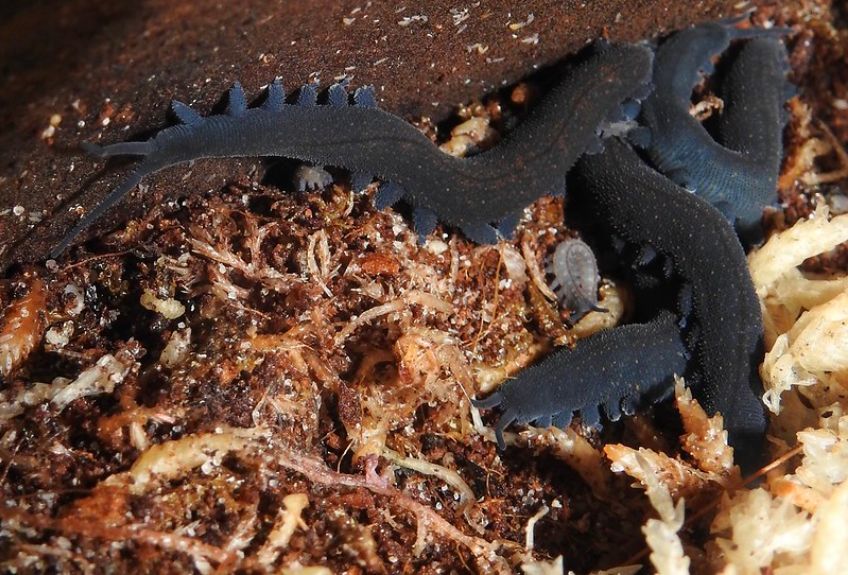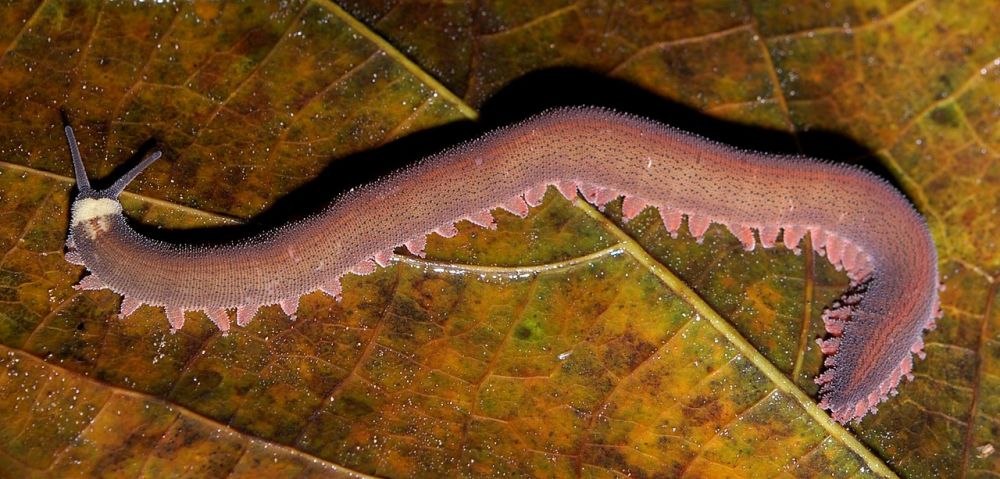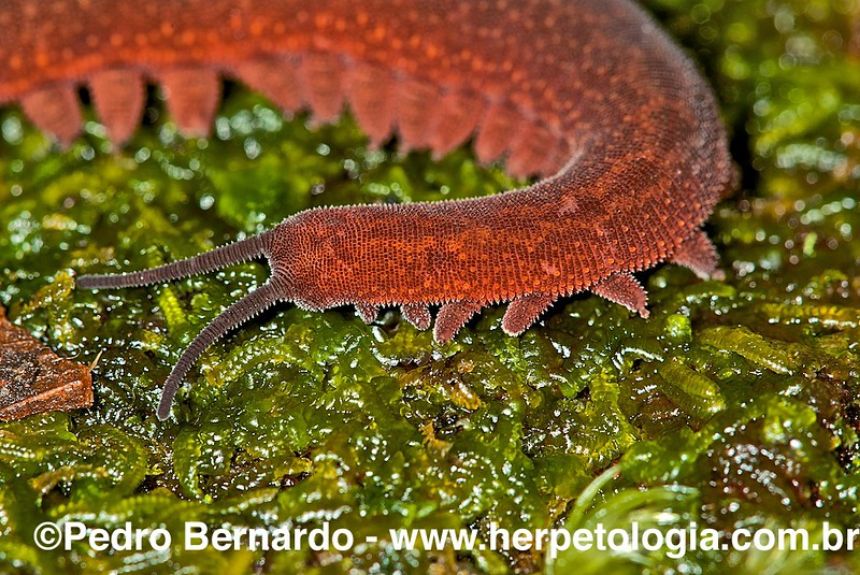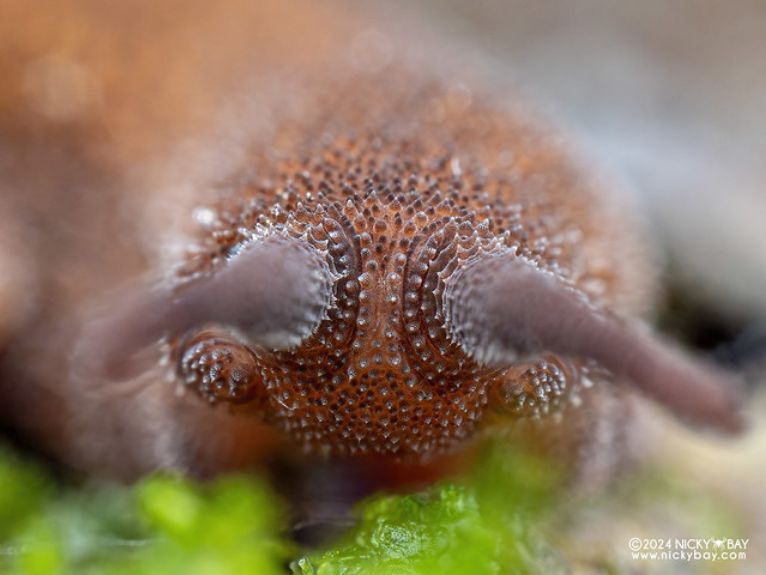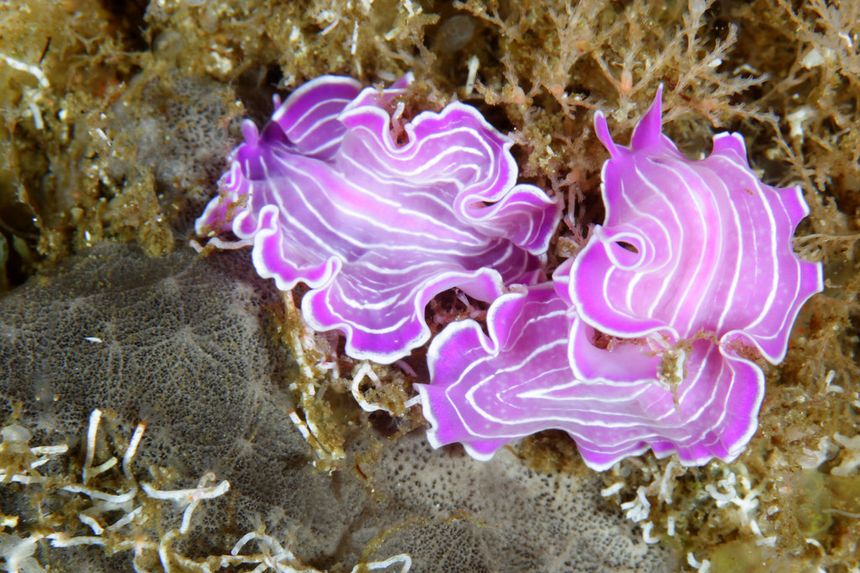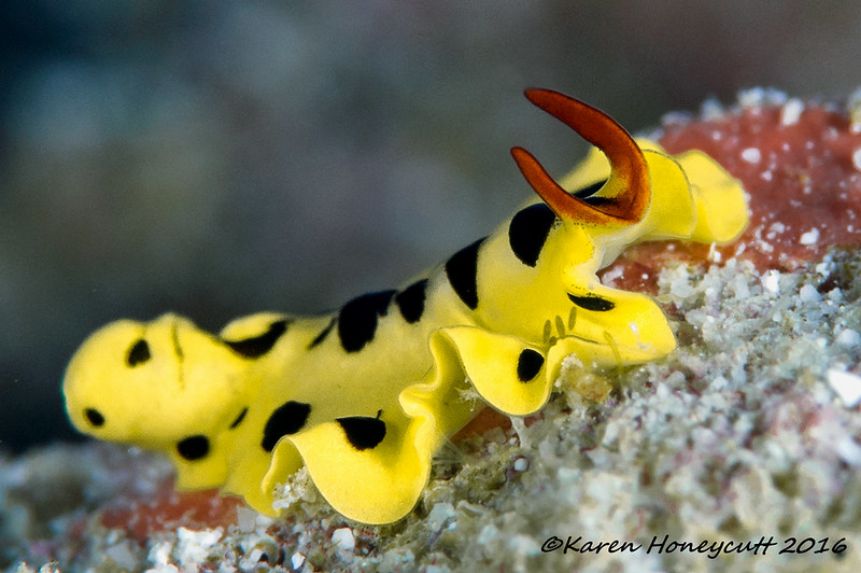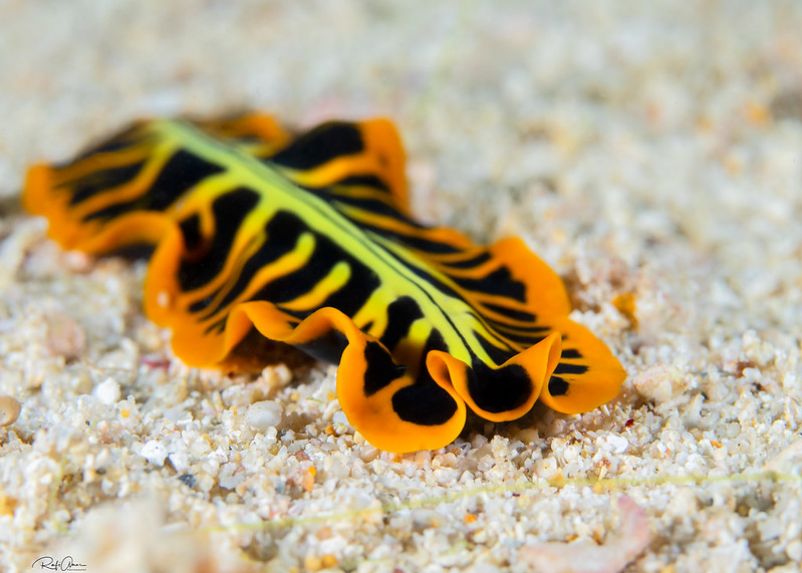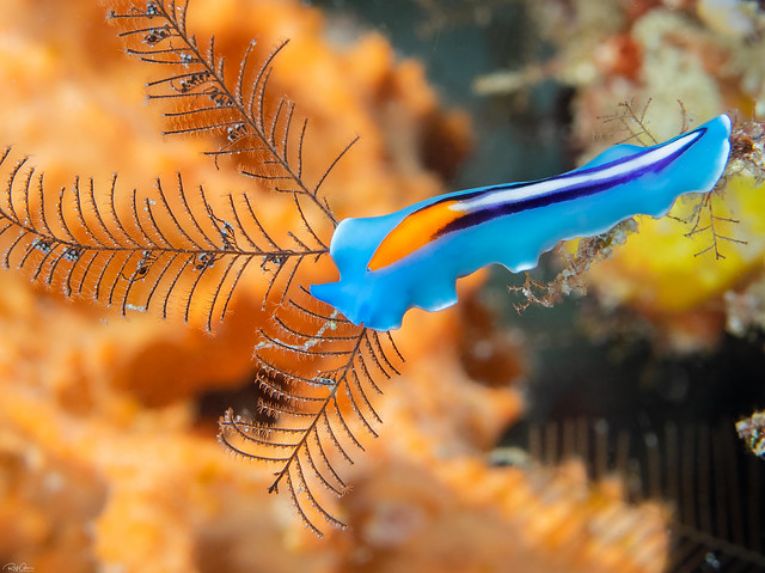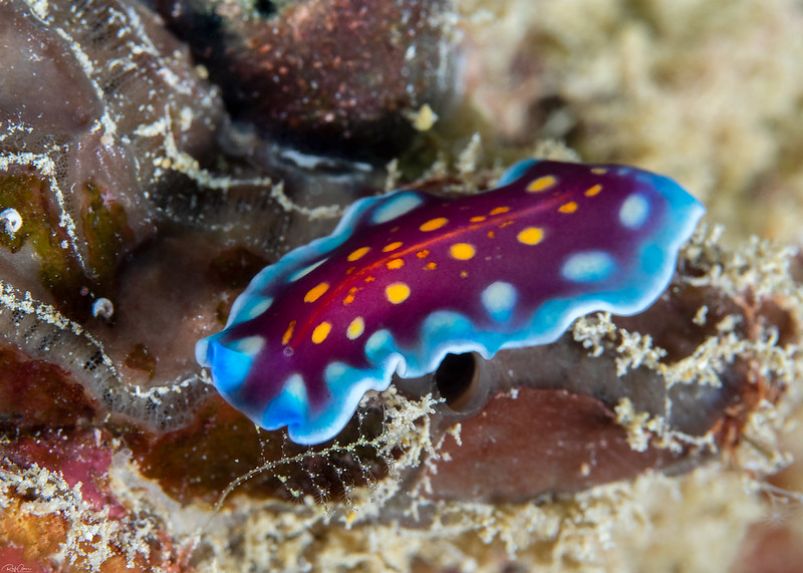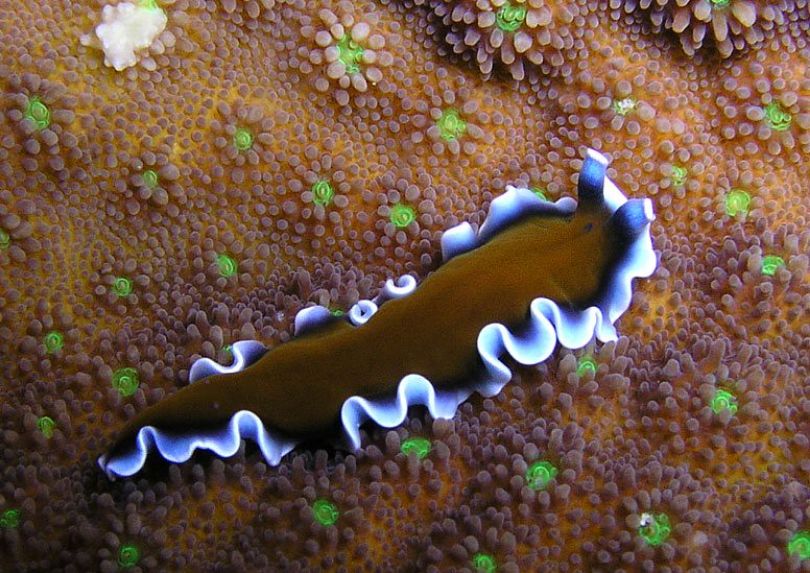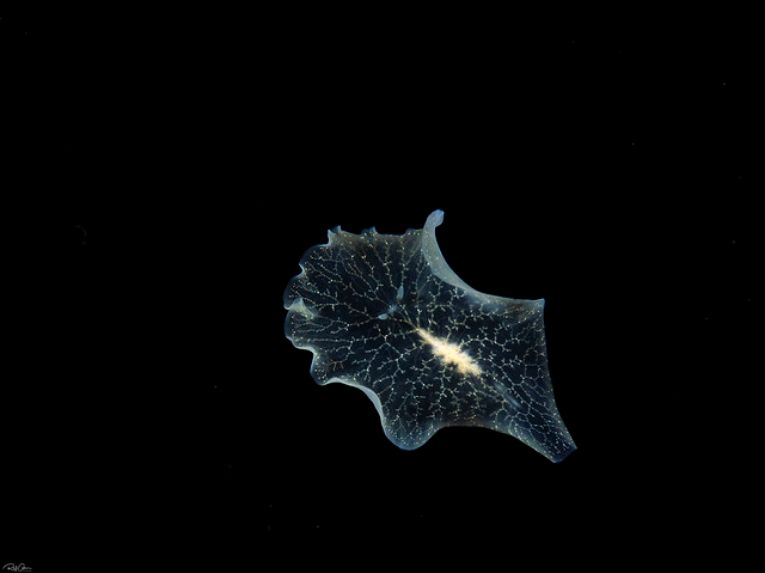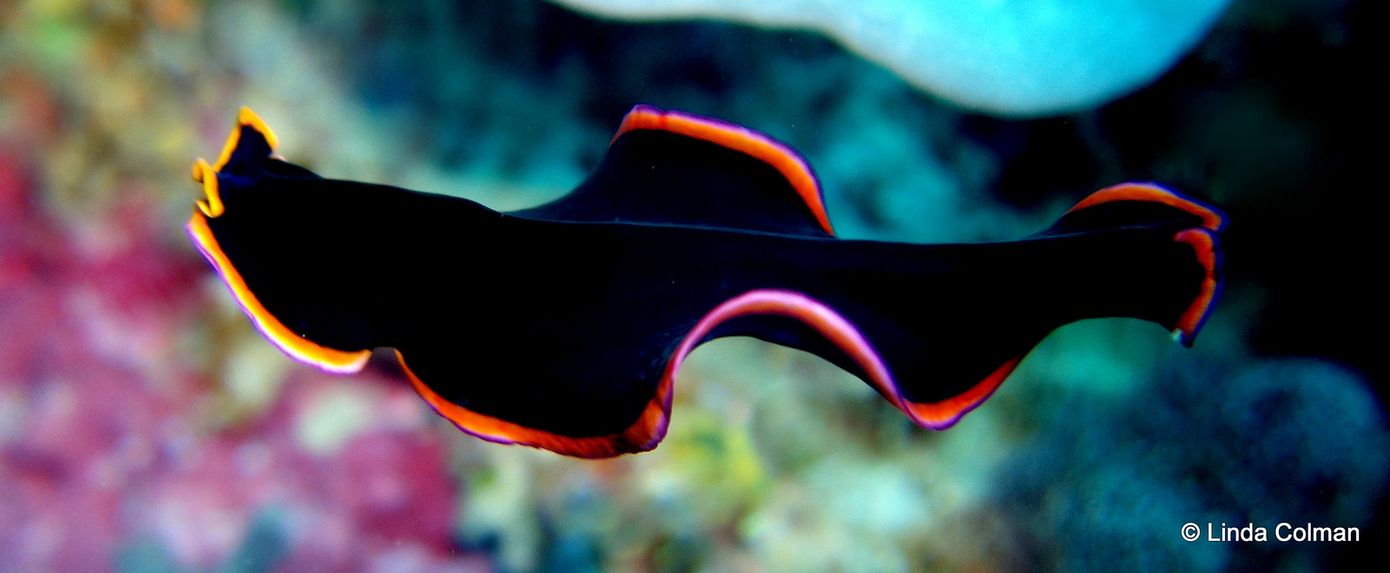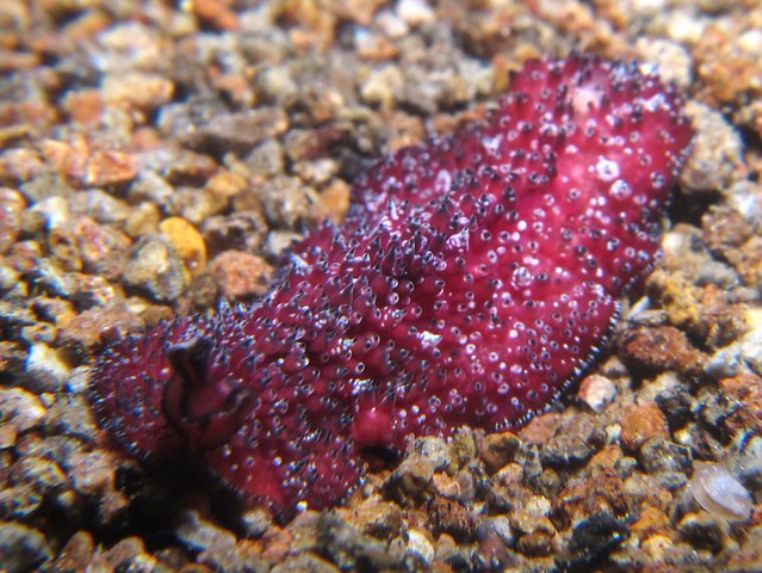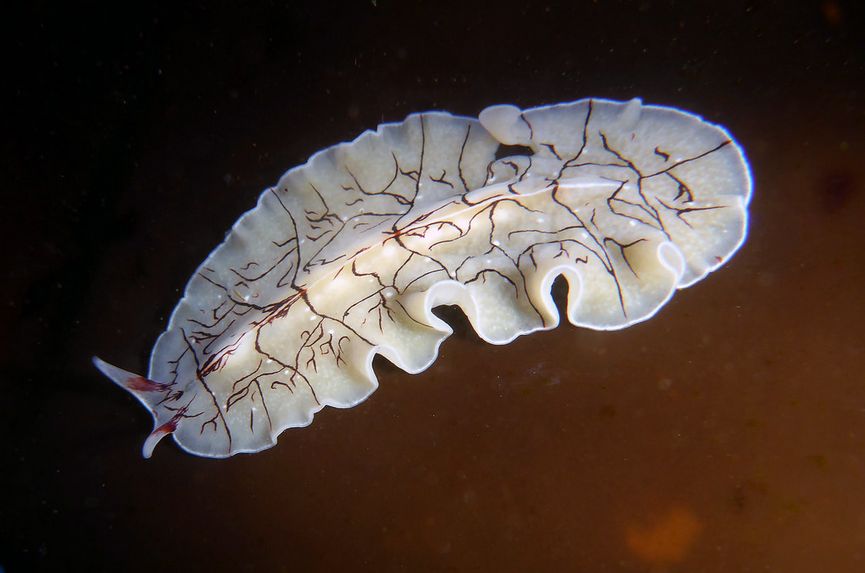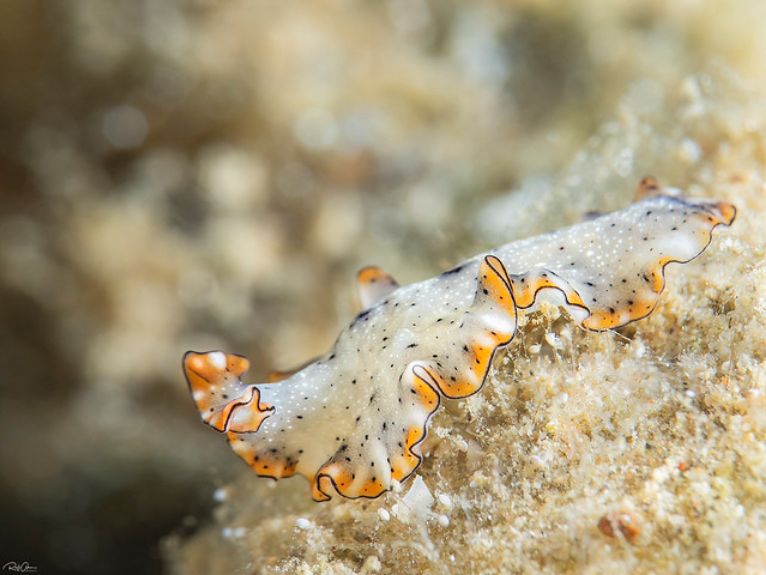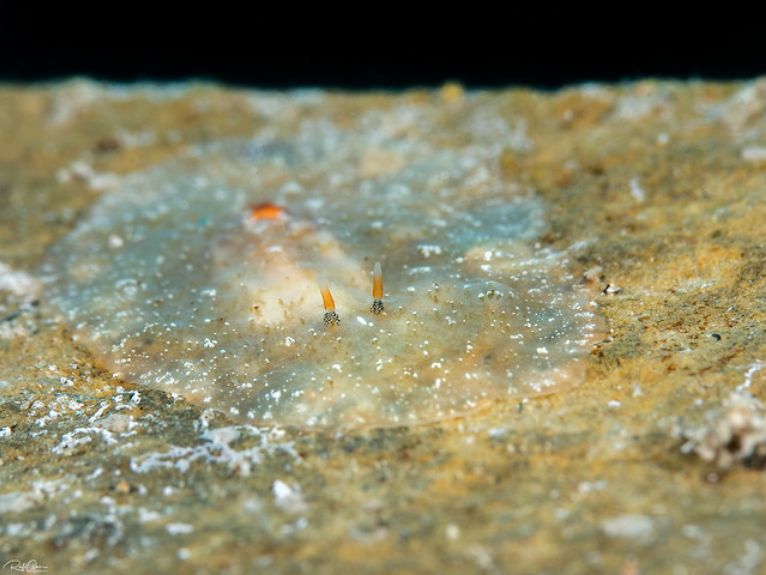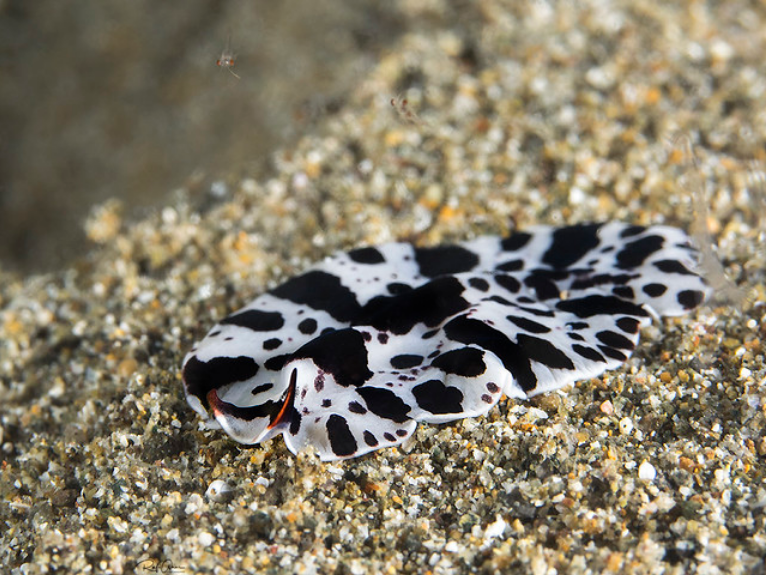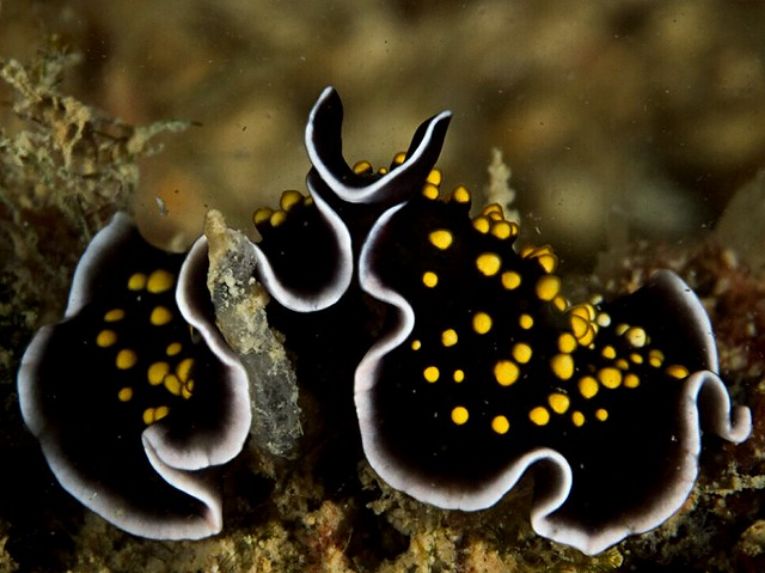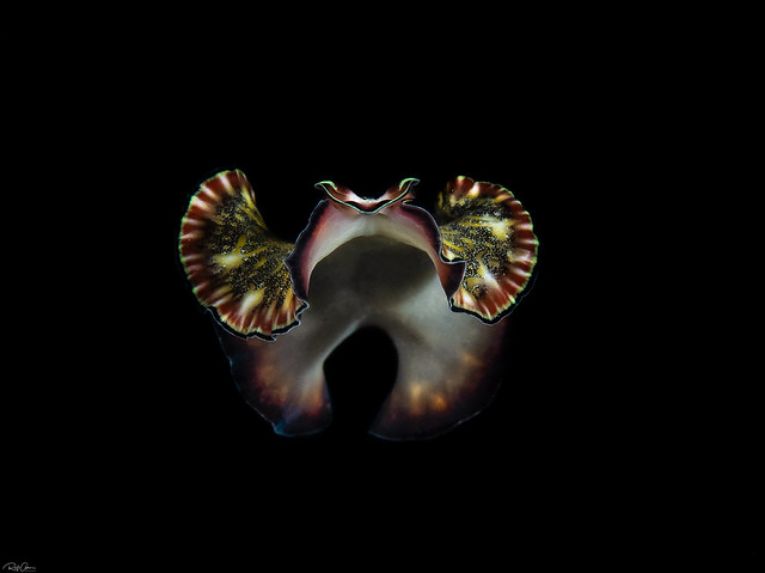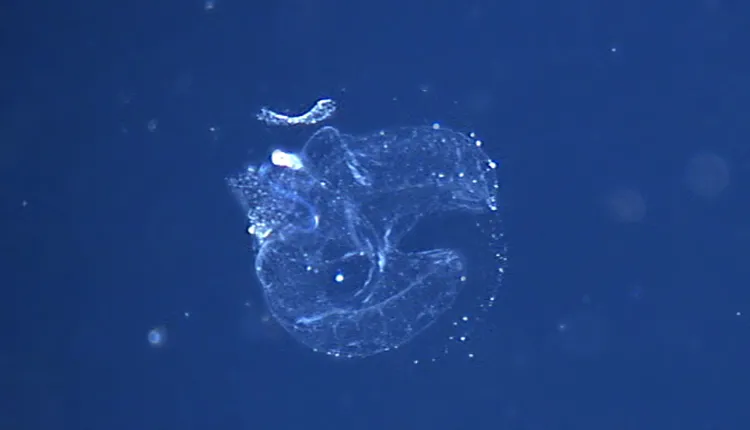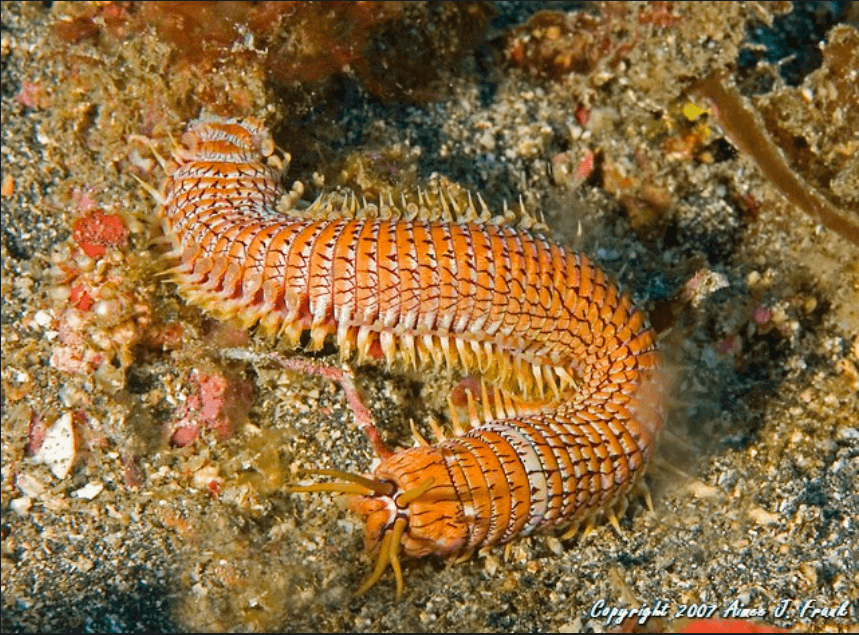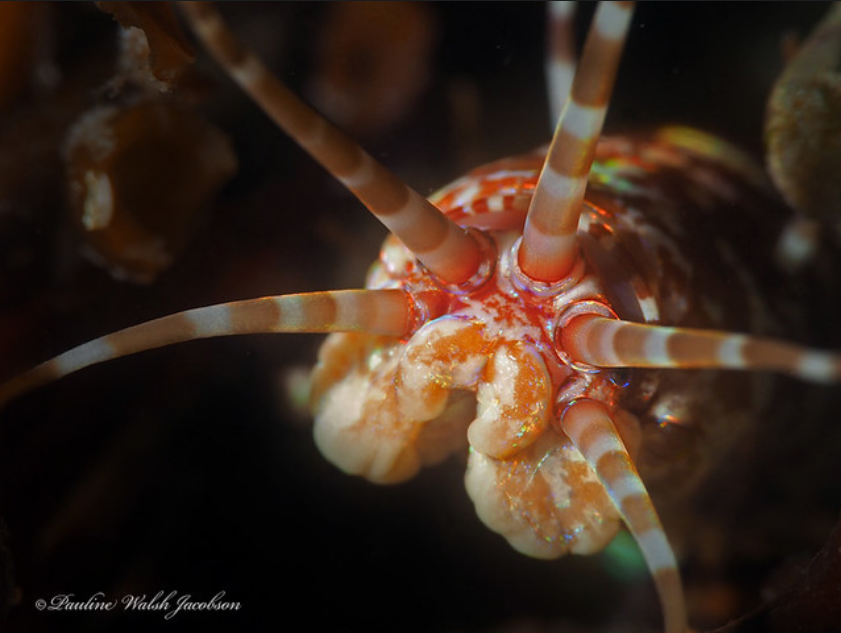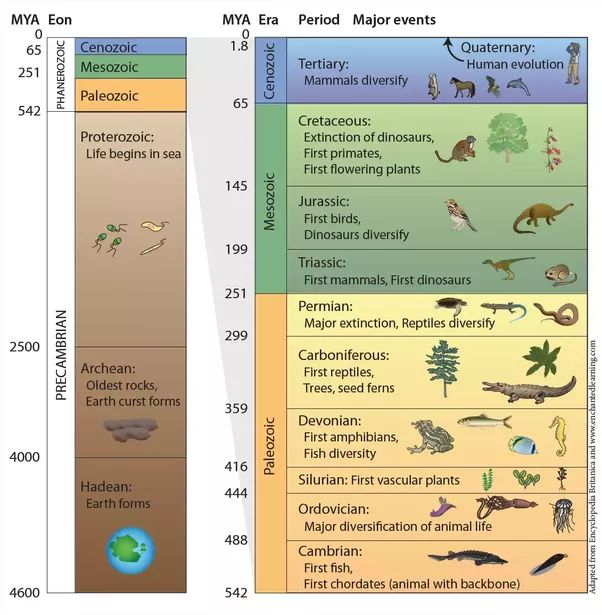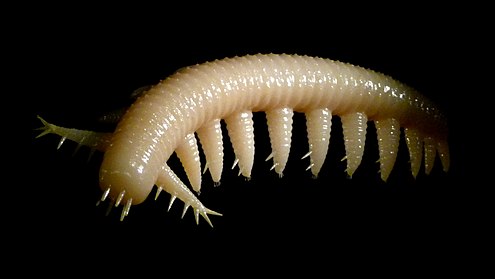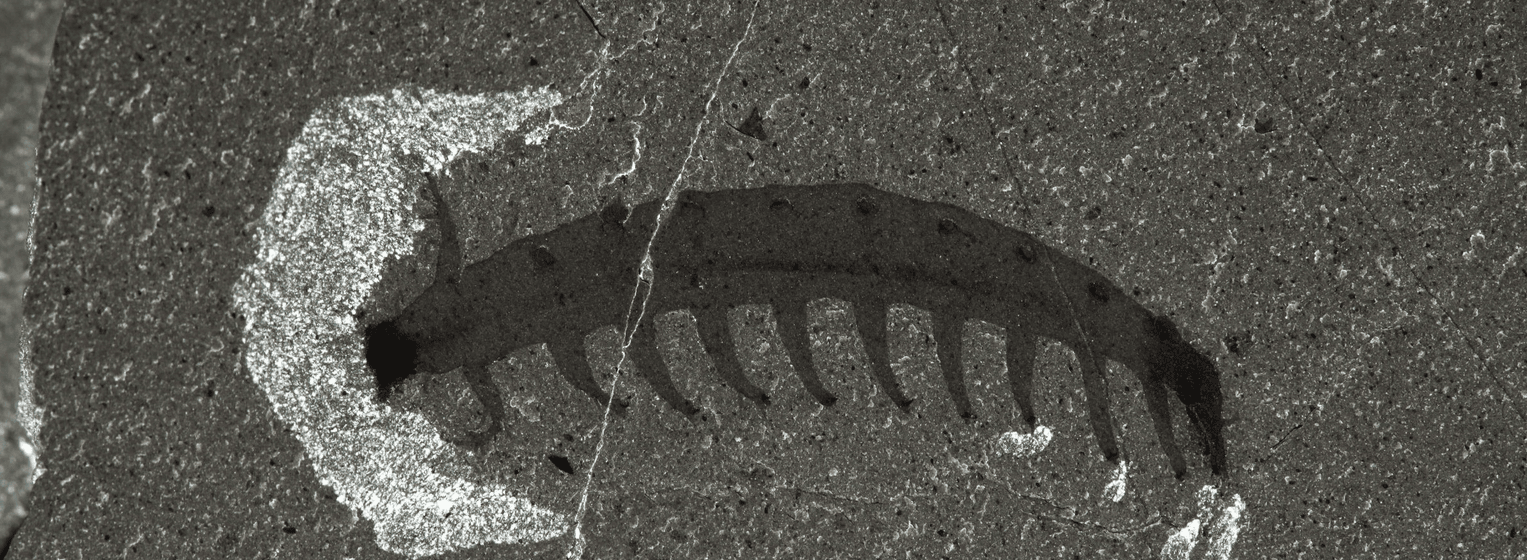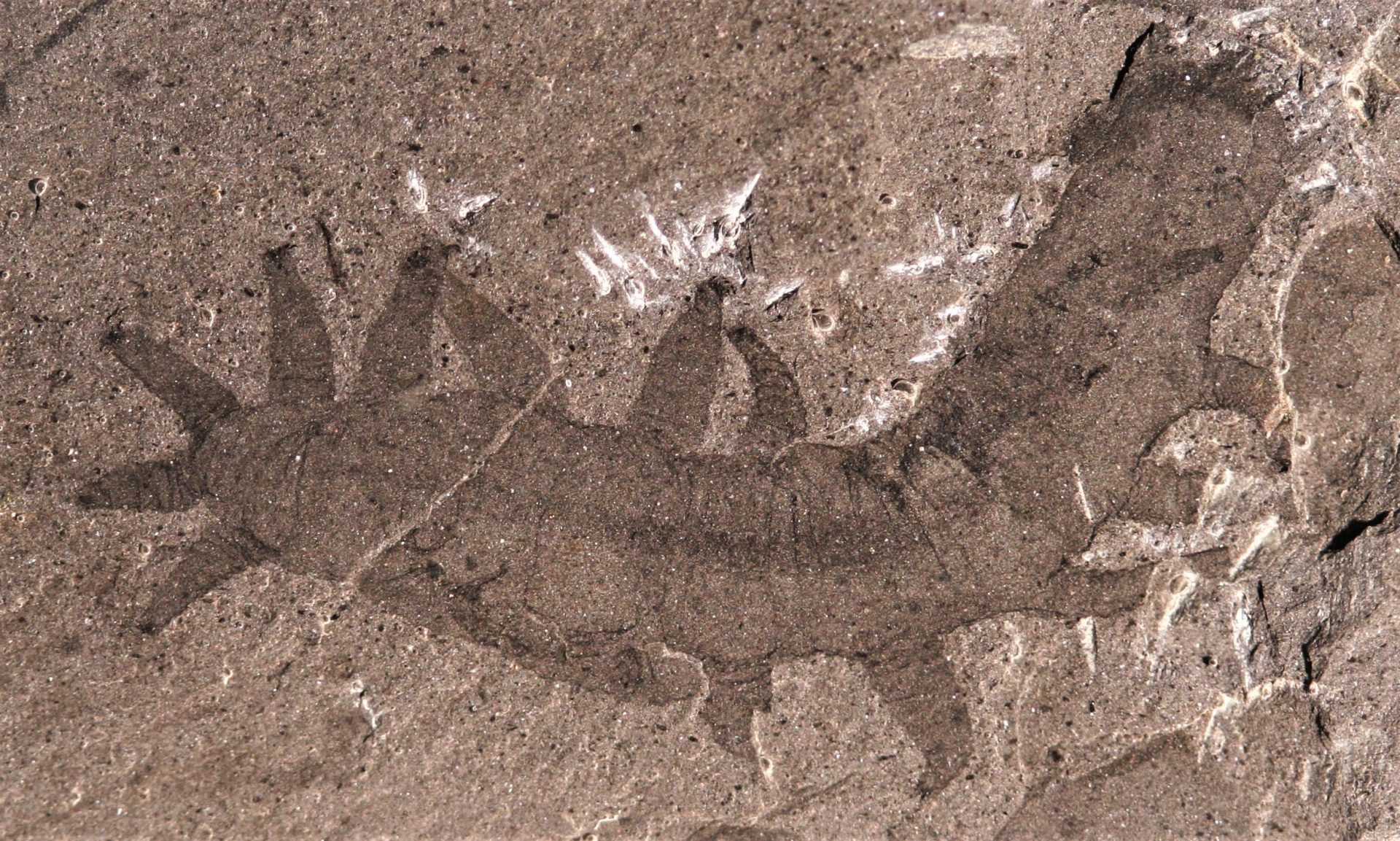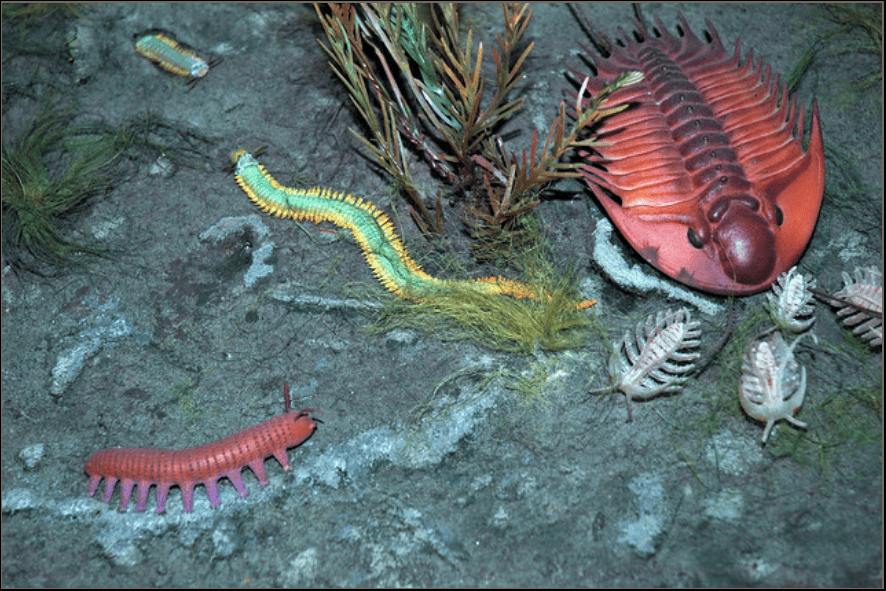Invertebrates
A community for general discussions about our friends that lack vertebrae
Found this weird ant on our table, it has a very big head. Does anyone know what type of ant this is? (Found in New Zealand). Im guesing because of its large mandibles its probably not a worker ant instead perhaps its a soldier.
Also I just learnt the different forms of an ant (queen, worker, soldier) are called castes.
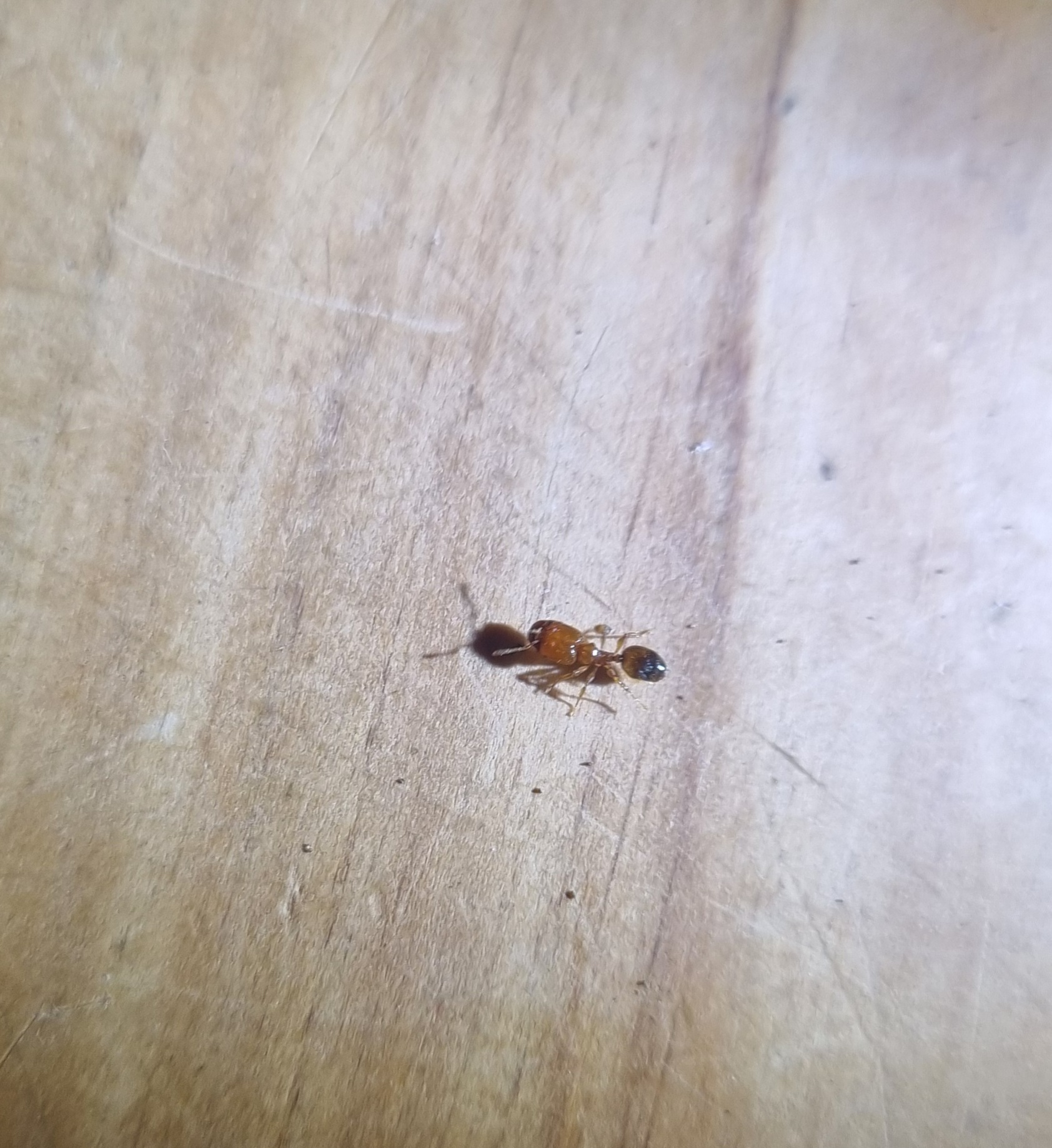
This creepy crawly was found living in a rarely used toilet in Brussels.
I was alarmed to find it. Is it a parasite? Hookworm, or roundworm?
Some history:
This is a rarely used part of the house. One day I discovered the toilet bowl was teeming with sewer drain fly larvae. Also creeped me out until I worked out what I was looking at. I’m not bothered about drain flies so I just left it alone. Returned to the toilet a couple months later and the trap was bone-dry. There was a hard blob of something.. mud, limescale, I don’t know. Not sure how it got there. It was the size of a golf ball so more mass than I would expect from limescale. I used a strong acid to descale the toilet. I made the toilet sparkling clean.
Then I used the trap to clean a dread-lock style mop because I could stuff it in there and squeeze out the the grime. And the mop could also reach deeper into the trap to clean the toilet better. Toilet water would become instantly black but easy to flush and repeat. After 10 or so iterations the water was still gray so I gave up.. maybe the mop should be bleached.. so I put the mop away. The mop was previously used to clean up cat urine (neighbors cat keeps entering my house, peeing on the livingroom floor and stairs, then bailing.. does not hang-out [why mark in a territory it does not intend to use?]). Anyway, I did not defecate in the toilet after cleaning it. Maybe urinated a couple times over the span of a couple months.
Then out of the pure blue I find this creepy crawly. Should I bring this thing to a doctor? I cannot work out how it got there or if it came from me. Perhaps equally important are the sand grains (50 or so?) around it.
theory 1: it entered the cistern from the Brussels water supply, perhaps as an egg. Hatched in the cistern. Brussels water contains sand which builds up at the screens of the tap airators and also in the cistern. A typical flush does not bring any noticable sand into the toilet bowl, but maybe if a worm were in the cistern it would have moved the sand around so that a pinch of sand would go in a flush, along with the worm.
theory 2: it came in from the Brussels water supply and ended up in the sewer pipes like most of the water does, grew in the sewer pipes and crawled up into the toilet trap from the sewer side. As it crawled, sand and scum from the sewer pipe stuck to it and washed off it when it entered the trap.
theory 3: it came out of me and ended up in the sewer pipes and crawled into the toilet. No!!! I hope not. But if so, it’s the lower floor toilet that I use, so the worm would have to do a straight up vertical climb 1 story high inside of PVC. Seems unlikely.
theory 4: I leave the window open most of the time and the toilet seat up, so a bird could have flown in and dropped something in the toilet.
They all seem unlikely.
These are quite common in Yucatan, Mexico.
The leatherleaf slugs belong to the family Veronicellidae. This particular one could be Sarasinula plebeia, but it is not so easy to definitively ID these.
I originally identified this species a few years ago from the description on this website, but since then they have added an update stating that my original source is also unsure on this one.
UPDATE: It seems that IDing certain slugs by pictures isn’t a good idea. In 2024 when pictures on this page were uploaded to iNaturalist, another user suggested a different species in the genus Leidyula, and then user “deneb16,” a mollusk specialist at UNAM, Mexico’s main university, added the comment that all Mexican species of the family this slug belongs to can’t be identified without dissecting their sexual organs. The family, she agrees, is the Leatherleaf Slug Family, the Veroncellidae.
So, I am not 100% of the species, but it is a leatherleaf slug.

Main image, by Eoperipatus sumatranus, Mok Youn Fai
Above, Peripatus sp, by Susan Myers
There are around 180 species of Velvet Worm
Above, A selection of velvet worm species from Australia. Original photographs by Jenny Norman, Noel Tait and Paul Sunnucks, from here
They live in moist, dark places in the tropics, as well as Australia and New Zealand
Above, Velvet worm (Peripatoides novaezealandiae), by Frupus
Velvet Worms have changed little in the last 500 million years with fossils of marine versions being found from Cambrian Era rocks (Burgess Shale, Canada 505 years ago, and the Chengjiang formation, China (520 million years ago))
Above, Euperipatoides sp, by Edward Evans
They have hydrostatic skeletons, comprised of muscle layers and the body wall. It's body cavity is filled with fluid, which is pressurised and keeps the body rigid!
Above, Peripatus sp, by Paul
They move by alternating the internal fluid pressure in its limbs as they extend and contract along its body!
Their skin is waterproof and is covered with papillae- tiny protrusions with bristles which are sensitive to touch and smell!
Above, Velvet worm (Eoperipatus sp.) by Nicky Bay
The papillae are composed of overlapping scales, which gives the Velvet Worm its velvety appearance!
Above, Skin of Euperipatoides rowelli, by Andras Keszei
Their feet are described as conical, baggy appendages. At the end of each foot is a hooked claw made of chitin, the Velvet Worms scientific name is Onychophora, meaning 'claw bearers'
Above, Onychophoran legs and claws, by alexselemba
Above, Onychophora, by Nicky Bay
They only use the claws on their feet when walking on uneven surfaces, they can retract these claws and use its foot cushion at the base of the claw
Depending on the species, a velvet worm can have between 13 and 43 pairs of feet. The feet are hollow, fluid-filled, and have no joints.
Above, Peripatoides novaezealandiae, by Frupus
Velvet Worm species can vary in length from 10mm long to ones in excess of 20cm
Above, velvet worm to scale, by Andras Keszei
They have a pair of sensory antennae on their heads, and small eyes. The mouth has a set of jaws, and is flanked by two papillae
Above, photo by melvyn yeo
They prefer to live in moist areas, hiding in the soil, or under rocks and rotting wood... and they like to come out at night and during wet weather
Above, Ooperipatellus species, by Simon Grove
They hunt at night for small invertebrates, and are ambush predators. They have a pair of glands on their heads near to the antennae which squirts out a sticky, quick hardening slime!
Above, Eoperipatus sumatranus? by Nicky Bay
Above, via Daily Dot
The slime ensnares their prey, allowing the Velvet Worm to inject a digestive saliva through its bite... this liquefies insides of its prey making it easier to eat! It will also eat any left over slime as it is energetically costly for it to produce
Above, by Miguel "Siu"
One species (Euperipatoides rowelli) is social! It lives in groups of up to 15 individuals, and has a strict social hierarchy with a dominant female!
Above, Velvet worms (Euperipatoides rowelli)- Captive individuals. A couple babies can be seen in this image, by Jackson Nugent
After a kill the dominant female feeds first, then the other females, the males, and finally the young... the hierarchy is strictly enforced and maintained via aggression (biting, chasing, kicking and crawling over subordinates!)
All Velvet Worms reproduce sexually except Epiperipatus imthurni which reproduces via parthenogenesis! No males have ever been found... only females!
Above photo (Epiperipatus imthurni), by Geoff Gallice
Sexual reproduction can be quite varied amongst the species of Velvet Worms.... some males will deposit their spermatophores directly into the female's genital opening. Other use a special structures on the head, whilst some use spikes, spines, or pits to either hold their sperm or transfer it to the female!
Above, Metaperipatus inae, by Art
Male Peripatopsis Velvet Worms will deposit their spermatophore on random areas of the females body. The sperm causes a small, localised breakdown of her skin, allowing the sperm to enter her body. It then migrates to her ovaries, and fertilisation takes place!
Birth can be as varied as reproduction. Some species lay eggs. Peripatopsis mothers retain eggs in their uteri and supply nourishment to their embryos, but without any placenta....Most velvet worms however, give birth to live young after a period of gestation their via a placenta. All young are born/hatch fully developed, and look like mini adults!
Above, Peripatus-sp, by Pedro Bernardo (Peripatus mothers supply nourishment to their embryos through a placenta)
Euperipatoides rowelli just "born" (not sure what the term is for oviviparous animals), still in the egg membrane it developed in inside it's mother. The egg is approximately 2mm in diameter
Above, Euperipatoides rowelli, Andras Keszei
Goodbye, Velvet Worm!
Above, Eoperipatus sp, by Nicky Bay
Info via wired and wikipedia here and here
As always my usual disclaimer.... I'm no expert, I just like learning and sharing information, any mistakes will be mine and I'll correct them if you leave a comment 👍
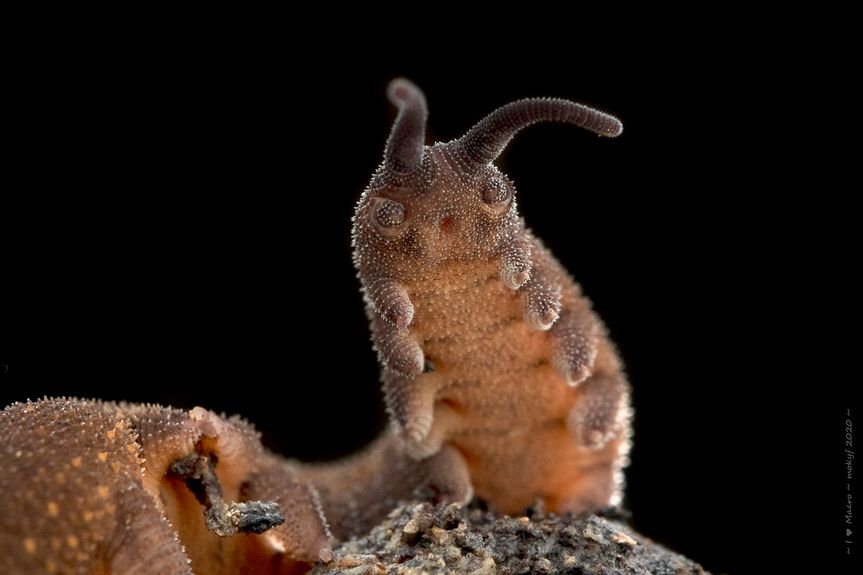
Main image, While Gotham sleeps........ by Michael Gerber
RED...
Above, Pseudoceros ferrugineus, by Benjamin Naden
PINK...
Above, Protheceraeus roseus, by João Pedro Silva
YELLOW...
Above, Eurylepta sp. by Karen Honeycutt
ORANGE...
Above, Pseudoceros sp. by Rafi Amar
BLUE...
Above, Racing Stripe Flatworm - Pseudoceros liparus, by Rafi Amar
PURPLE...
Above, Linda's Flatworm - Pseudoceros lindae, by Rafi Amar
BROWN...
Above, Photo by Nick Hobgood
TRANSPARENT...
Above, Paraplanocera sp. by Rafi Amar
SALAD...
Above, Cryptic Flatworm - Pseudobiceros kryptos, by Rafi Amar
GOTH...
Above, Photo by Bettydiver
NEON...
Above, Pseudoceros dimidiatus, by Richard Ling
STARRY...
Above, Thysanozoon nigropapillosum, by Patomarazul
TRIPPY...
Above, Persian Carpet Flatworm - Pseudobiceros bedfordi, by Rafi Amar
GLITTERY...
Above, Photo by eunice khoo
FRILLY...
Above, Glorious Flatworm - Pseudobiceros gloriosus, by Rafi Amar
STRIPEY...
Above, Pseudoceros zebra, by Marina Poddubetskaia
SPOTTY...
Above, Pseudoceros scintillatus, by ilan Lubitz
VEINY...
Above, Eurylepta californica, by Robin Gwen Agarwal
BRAINY...
Above, Maritigrella fuscopunctata, by Rafi Amar
SANDY...
Above, Pseudobiceros damawan, by Rafi Amar
CAKEY...
Above, Lizard Island Flatworm - Tytthosoceros lizardensis, by Rafi Amar
CAMOUFLAGEY...
Above, Flatworm - Paraplanocera sp. by Rafi Amar
HOLSTEIN-FRIESIANY...
Above, Eurylepta sp.1, by Rafi Amar
AMBUSH RUG...
Above, Photo by eunice khoo
GOODBYE, FLYING FLATWORM!
Above, Persian Carpet Flatworm - Pseudobiceros bedfordi, by Rafi Amar
edit- Forgot to do the thing that makes the image pop out when you click on it.....

Main image, Oleander Hawk Moth Caterpillar (Daphnis nerii, Sphingidae), by itchydogimages
Startled? Alarmed? Did I hear you mutter "WTF?" under your breath?
Then evolution wins again. Imagine if you were confronted by the same sight if you were a bird or a praying mantis or a snake for that matter. Eyespots (markings that resemble vertebrate eyes) have evolved many times in Lepidopterans (butterflies and moths). The fact that this adaptation has arisen independently so often in this group indicates the general effectiveness of this anti-predator defence. itchydogimages
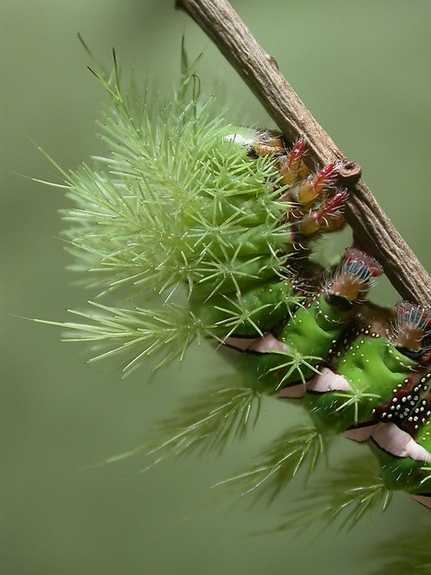
Above, Walking forest, by Gabriela F. Ruellan
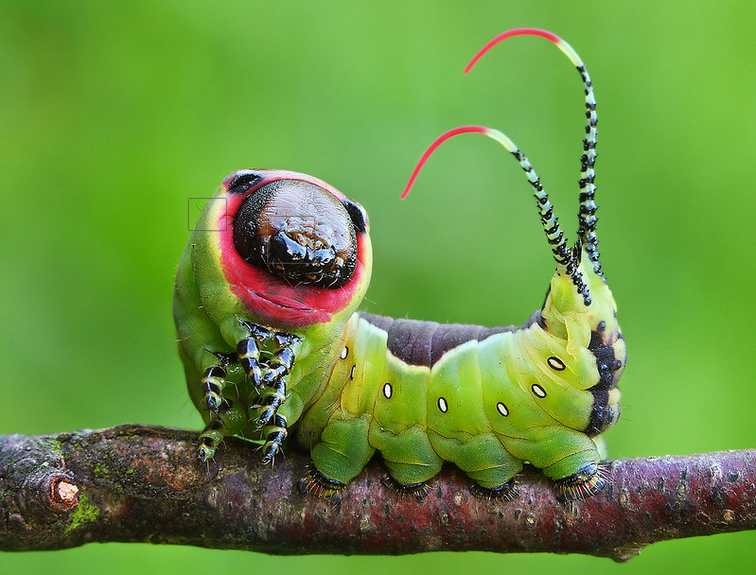
Above, Moth Caterpillar - Cerura vinula, by Lukas Jonaitis
I took this photo last summer. This caterpillar is one of the most beautifull caterpillars in Lithuania. I think it is very photogenic caterpillar because of its green colour and red tails which are visible only when caterpillar is scared. He has very nice face. :) Lukas Jonaitis
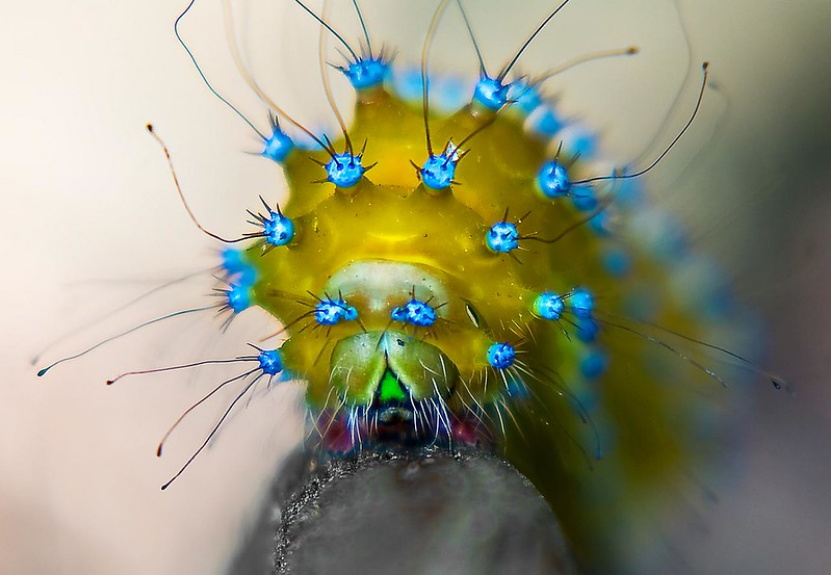
Above, Saturnia Pyri, by Jano De Cesare
This is a beautiful larva of a Saturnia Pyri, a butterfly which is around 16cm in maximum dimension at its mature state. Jano De Cesare
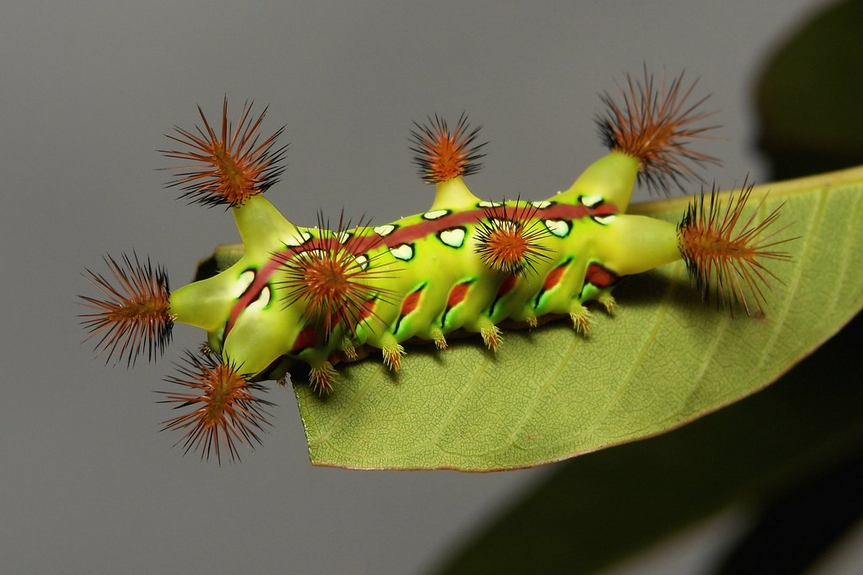
Above, Stinging Nettle Slug Caterpillar (Cup Moth, Setora baibarana, Limacodidae) "The Jester" by itchydogimages
First-in-line to the throne of the brilliant Yunnan lineage of Limacodid caterpillars, together with its alternate colour form, "The Clown", "The Jester's" livery is almost fluorescent. itchydogimages
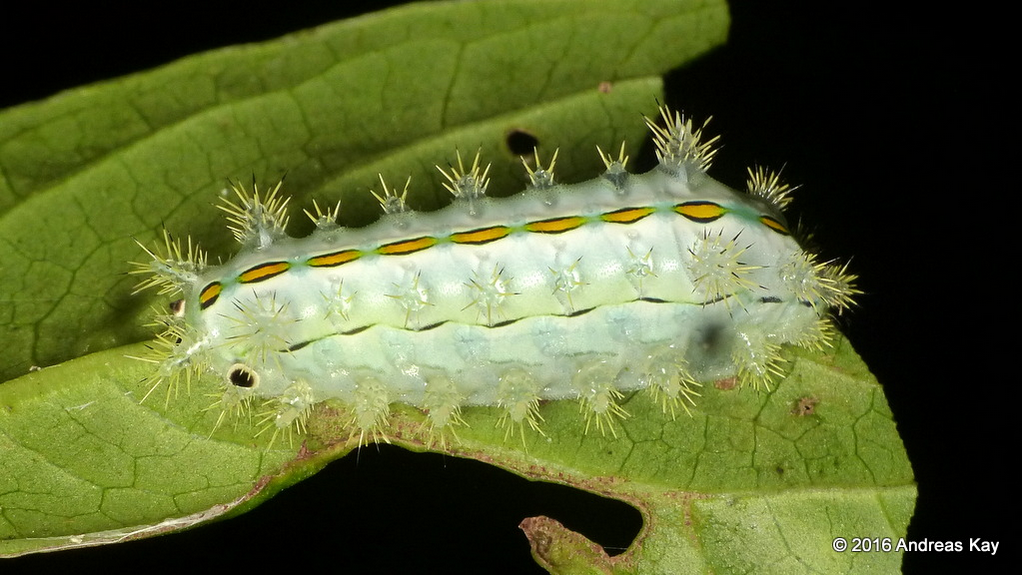
Above, Stinging Nettle Slug Caterpillar, Limacodidae, by Andreas Kay

Above, 3rd Instar Cecropia, by Barb Sendelbach
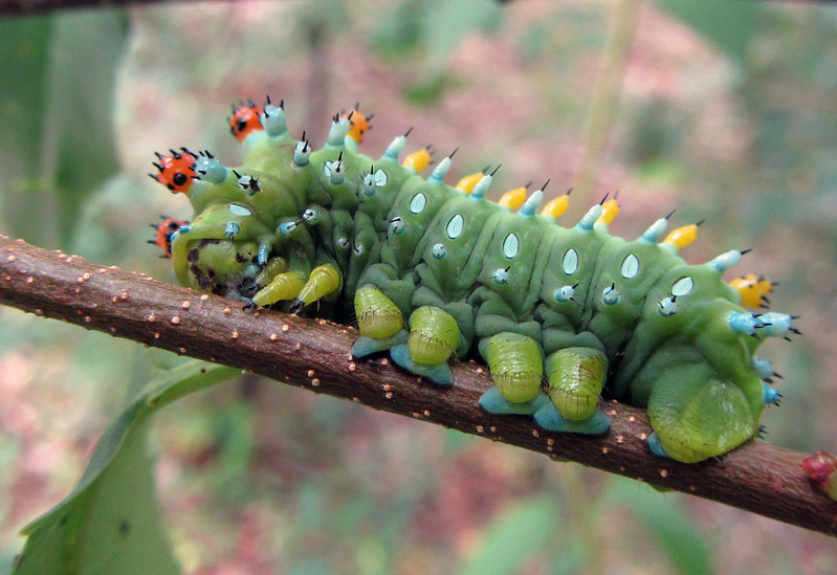
Above, Big Foot (Cecropia), by MaggieDu
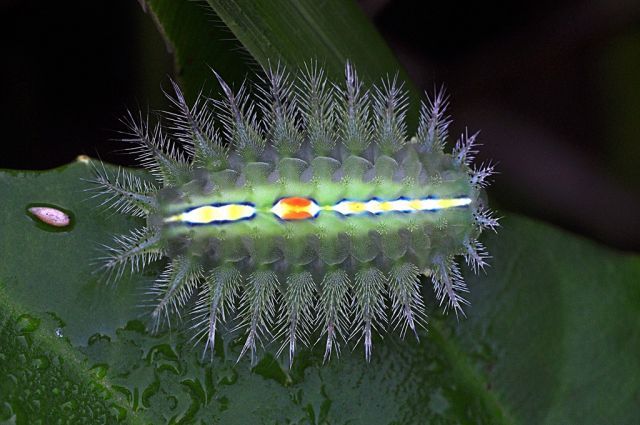
Above, Photo by Frank Starmer
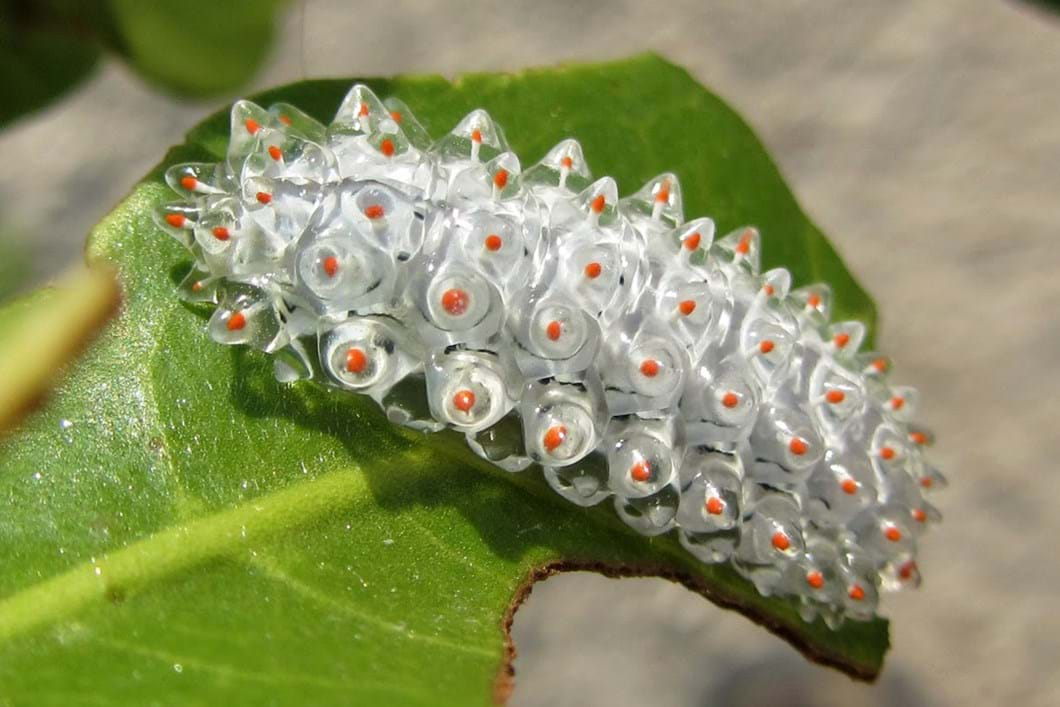
Above, Dalceridae moth caterpillar, by Gerardo Aizpuru
Dubbed the 'jewel caterpillar', this lovely, translucent larva belongs to a family of moths known as Dalceridae. Although scientists are still unsure about the exact function of the caterpillar's translucent, gooey attributes, the leading theory is that the slimy stickiness helps to deter predators. According to Scientific American, the jelly-like 'cones' that cover the body break off easily (sort of like a lizard's tail), helping the caterpillar slip out of a predator's clutches. source
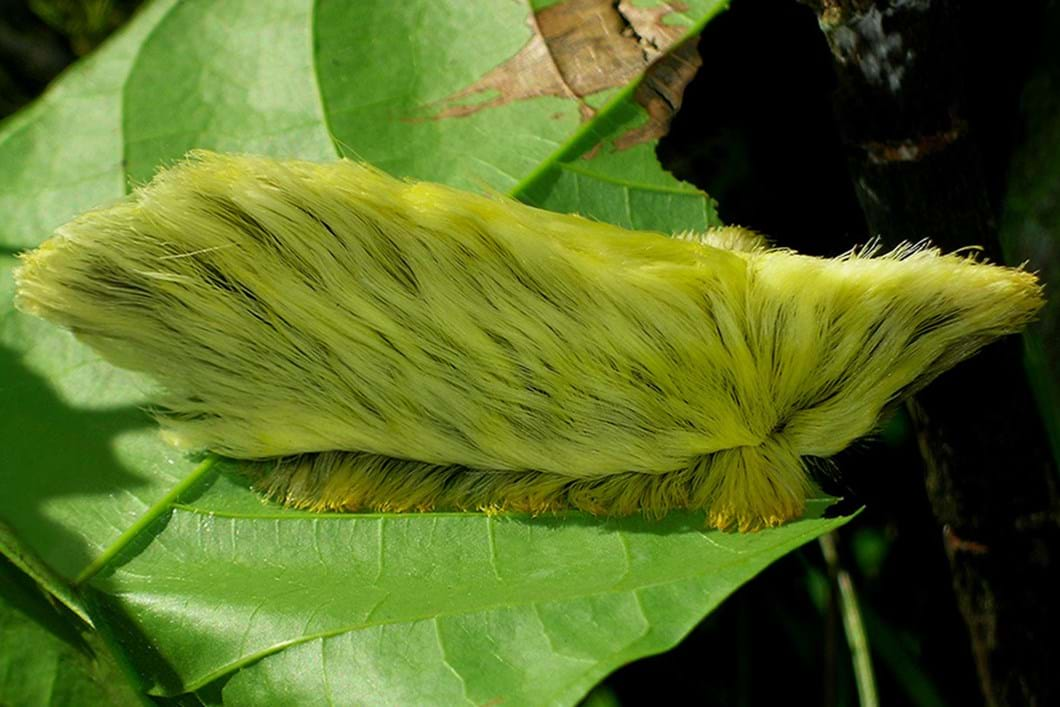
Above, Flannel moth caterpillar, by Drriss & Marrionn found here
It may look like Donald Trump's misplaced toupee (it's actually been dubbed the 'Donald Trump caterpillar'), but this flannel moth larva is actually not covered with hair at all. Those silky-looking threads are actually venomous spines that can cause intense, burning pain when touched, making the caterpillar one of the most venomous in the US. source

European Paper Wasp - Polistes dominula, by Heath McDonald
Whilst looking for the Bee Flies I came across a solitary male Paper Wasp on a dead leaf, it wasn’t the best angle, whilst moving the camera gear it started to be aware of me and moved to this position which looked even more awkward side one but from the front, gave a great position for a portrait, managed a few shots before it started moving again so left it alone at that point.
Best viewed very large
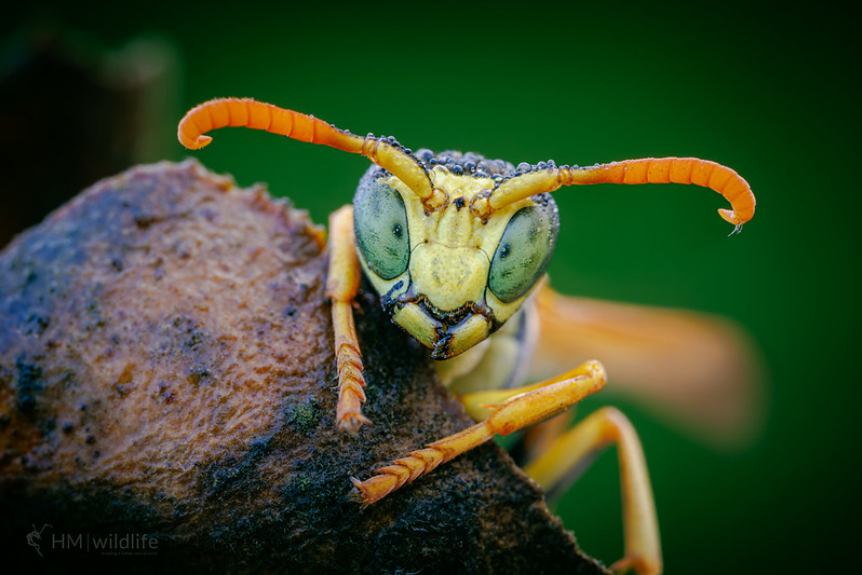
Main Image of....
....three species of tunicates ("sea squirts") - Polycarpa aurata is purple and orange, Atriolum robustum is green, and the blue is from the genus Rhopalaea. (Nick Hobgood)
There are around 3000 species of Sea Squirts aka Tunicates!
Above, Corella parallelogramma by Mark N Thomas
They are found in salt water throughout the world!
They are our closest invertebrate relatives!
Above, Photo by Chas Anderson
They are called Sea Squirts because if they are touched or alarmed the muscle will suddenly contract forcing the water inside to shoot out!
Sea Squirt larvae look like frog tadpoles!
Above-
A deep-water larvacean (aka “sea tadpole”) inside its mucous “house,” which concentrates food from the water prior to reaching the animal’s mouth. (Hidden Ocean 2005, NOAA)
As larvae they swim around in the ocean current, and when they find a food rich environment they use sucker to attach to a rock, dead coral, boat dock, or mollusk shell!
Above, Photo by prilfish
Then they begin metamorphosis!
Above-
Tunicate larvae resemble tadpoles (developing frogs). (Van Name, 1945)
Their notochord begins to shrink and is absorbed into the body, the tunic forms as the transformation continues and finally it becomes an adult Sea Squirt!
As an adult it will now feed on tiny particles found in the water, primarily bacteria!
Above, Blue Bell Sea Squirt (or Tunicate) - Perophora namei by Jim Greenfield
There are two types of sea squirts- solitary and colonial!
Both have 2 siphons. The Oral Siphon receives the nutrient content in the water, and the Atrial siphon excretes the waste!
Colonies are formed when a newly settled larvae changes into an adult. It then splits or 'buds' producing new individuals!
Above, Clavelina sp. by Jim Greenfield
Colonies can range from a few centimetres to several metres depending on food supply and predation!
Colonial Sea Squirts share a common tunic and sometimes and also sometimes share the atrial siphon!
They have a digestive system similar to ours, complete with an esophagus, stomach, intestines and a rectum!
Sea Squirts act as ocean purifiers, as they consume bacteria. They can also absorb zinc and vanadium, indicating heavy metal presence within their ecosystem!
Above [An obligatory Nudibranch!], Striped sea slug snacks while strolling on a sea squirt by Nick Hobgood
All photos and info found here, except where indicated!
And as always my usual disclaimer- I'm not an expert in anything, I just enjoying finding and sharing interesting things.... Any mistakes are mine and I'll correct them if you let me know in the comments 👍
edit re-uploaded main image as it wasn't showing
edit 2 changed 'ancestors' to 'relatives' in the title

Lovely story from The Guardian
It was September 2014. I’d just started working front of house in a fancy hotel in Edinburgh. I spent most of my shifts with a paper napkin pressed to my nostril, as I had been getting lots of nosebleeds. I would soon find out why.
A few weeks earlier, I’d been travelling in Vietnam. I had rented a moped and had the time of my life driving around. I soon crashed but luckily was wearing a helmet, so only got a small bump on my head.
A few days afterwards, I started to intermittently spot blood from my right nostril. I assumed it was from the crash and didn’t think too much of it. I was 24 and too busy partying to take anything like that seriously. I danced the nights away while ignoring the persistent blockage in my nose.
Reality came flooding back after returning to cold Glasgow. Nothing had changed with my nose, so I went to the GP. The doctor told me that it didn’t sound like anything to worry about. I was advised to use Vaseline on the area to keep the nostril lubricated and was sent on my way.
A week later, I moved to Edinburgh for my job. That’s when I started to feel frustrated with my constantly stuffy nose. I wasn’t in pain, but sleeping was difficult. I would blow my nose to try to clear the blockage, but it would only lead to nosebleeds. Things started to get particularly weird when I was having showers. Through all the humidity, I could feel a thick, slimy thing moving down my nose.
I had a day off work; it had been a month since I returned from abroad. My friend Jenny was coming from Glasgow to meet me for dinner. I was in the shower when I felt the all-too-familiar feeling, but this time I glimpsed something hanging out of my nostril. I jumped out and raced to the mirror, frantically wiping off the steam. I saw a clot hanging out – then recoiled in horror when I saw ridges running along a thick black body.
I rushed out of the house to see my friend, screaming, “It’s a full-on worm!” Jenny knew about the problems I’d been having with my nose, but she didn’t believe me at first. I stuck my nose in the air so that she could see for herself. Her mouth hung wide as she gaped and said: “Yep, there really is a worm in there.”
At first, it was the most hysterical thing that had ever happened to us. We couldn’t stop laughing. Because it had been in there for so long, I felt very blase about the whole thing. We rang the NHS helpline. The call adviser was crying tears of laughter over the phone, as it was the most bizarre thing she’d heard.
We went to A&E. Doctors were bewildered and didn’t take me too seriously at first. But once the nurse looked up my nose, she gasped. I was placed on a gurney as they stretched my nostril open with forceps. The doctors spent 30 minutes using different tools to try to prise the leech away. Leeches release an anaesthetic when they bite so they can stay on a body for longer, which is why I couldn’t feel the pain before – but it was agony when the doctors tried to pull it out. When they finally succeeded, I felt a wave of cold air shooting through the blocked nostril. It was like being in a nightmare, seeing the leech held up high, squirming. It was longer than my finger.
I’d swum a lot on holiday, so we guessed that it most likely came from there rather than having anything to do with the motorcycle accident. The leech was put in a jar and sent to a specialist hospital in London for further testing – they were worried that it may have passed on further diseases to me. Suddenly, something that was so funny seemed much more serious.
Luckily, all of my tests came back clear, and I had no side-effects. I was given the leech back in a pot and told to dispose of it. The leech was rock hard because it had so much of my blood inside. It made me squirm just looking at it.
Now, a decade later, the story of the leech and me has become a go-to anecdote whenever I meet someone new. I even had someone message me on LinkedIn recently asking about it. So while the leech was attached to me in a very physical sense, I guess we’re still attached metaphorically. But I’m very glad it’s out.
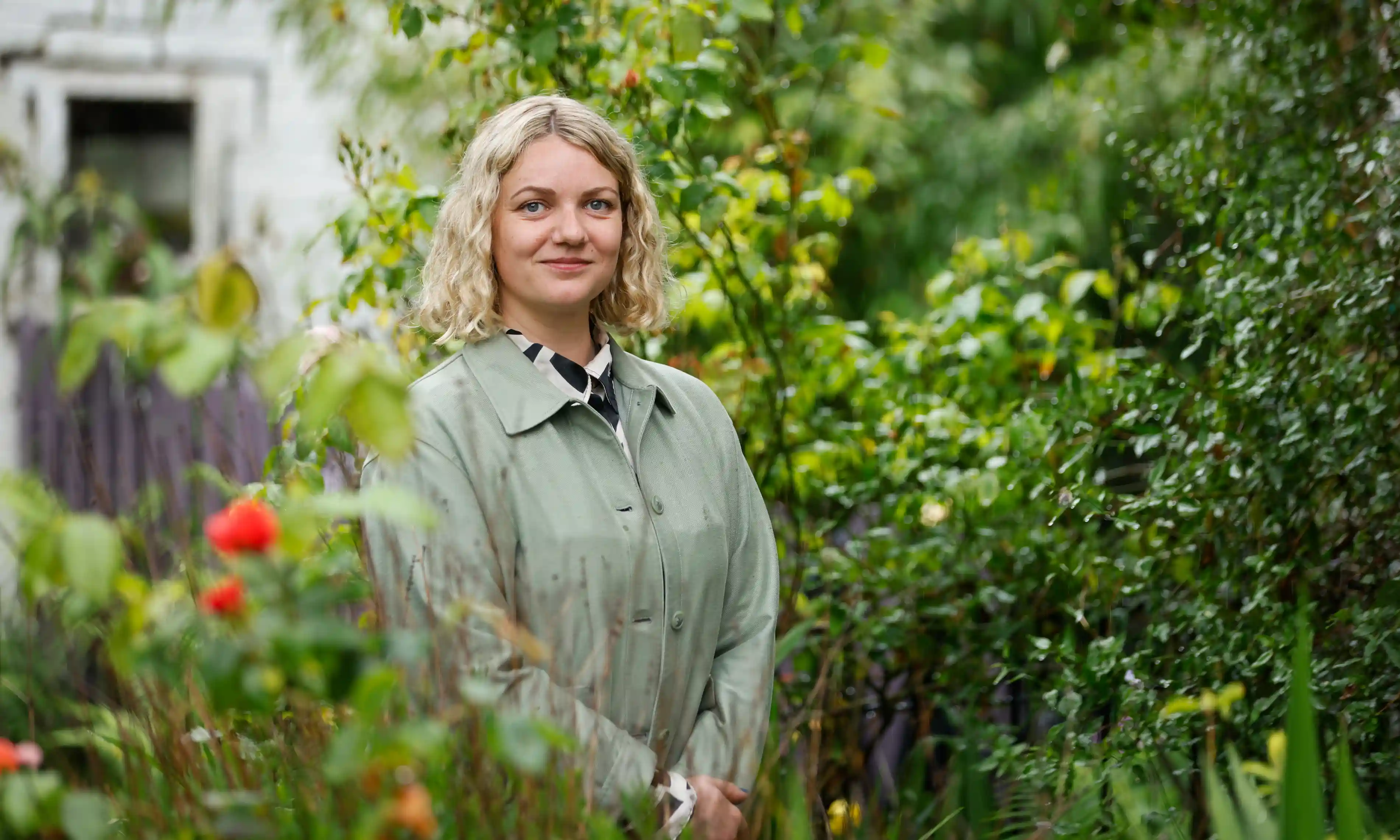
Main photo by Ocean Networks Canada
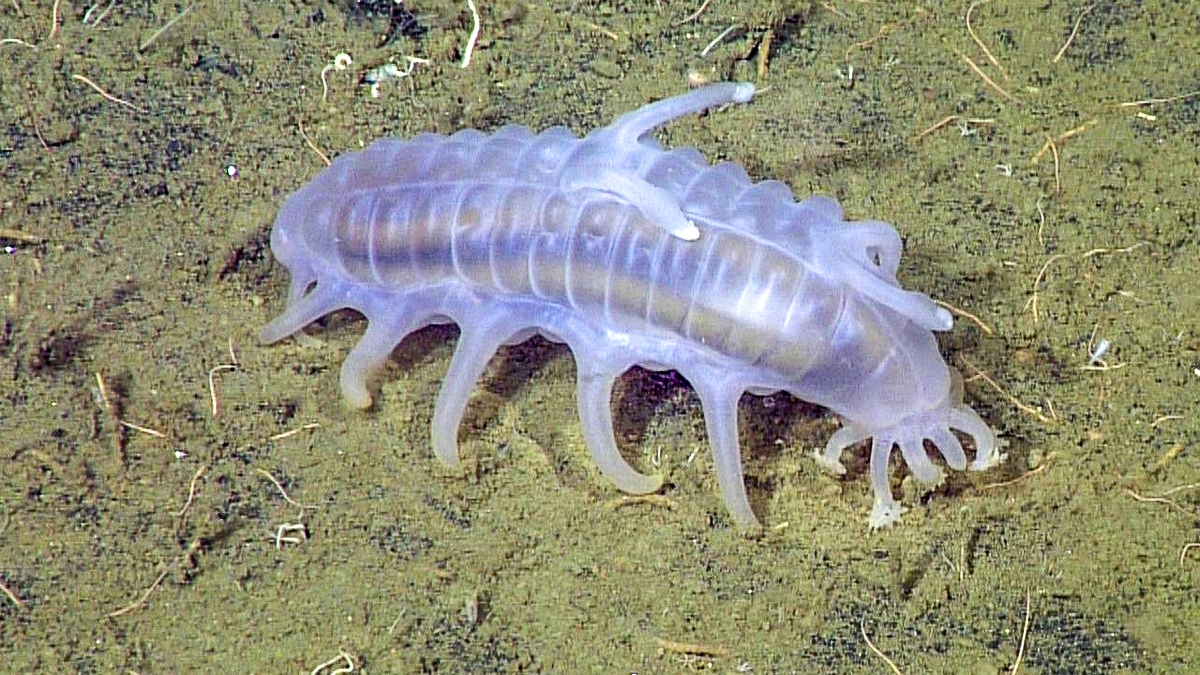
Above photo via MBARI
Sea Pigs (Scotoplanes) are a type of Sea Cucumber
They live in the deep sea, specifically on the abyssal plain up to depths of 5000m
They can grow up to 4-6 inches
They have 6 pairs of enlarged tubal 'feet', and use water cavities in their bodies to inflate and deflate them in order to move around, as well as ten buccal tentacles lining their oral cavity
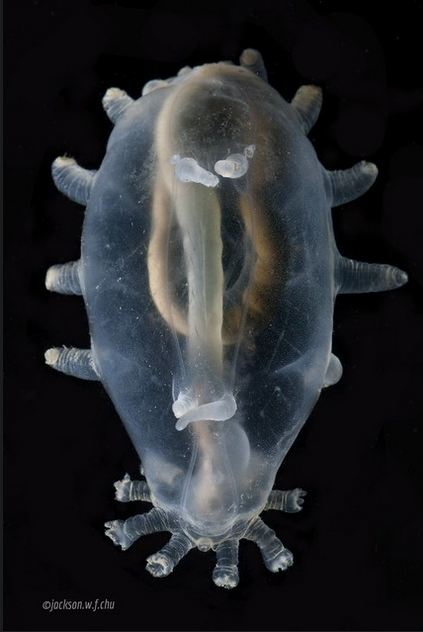
Above photo via Ocean Networks Canada
They live on the sea floor feeding on delicious foods such as decaying animals, poo and mucus!
If they are disturbed they can swim! In fact some Sea Pigs spend most of their lives swimming around in the water column using their frontal and anal lobes to propel themselves around!
They will gather in large numbers around whale corpses to feed and perhaps find a mate

Above, a congregation of Sea Pigs feeding on a whale carcass via MBARI
Their reproductive system is unique, the males only have one testis, and the females one ovary!
Also their skin contains a toxin called holothurin which is poisonous to predators...
They have a poorly defined respiratory system, and have to breathe through their anus!
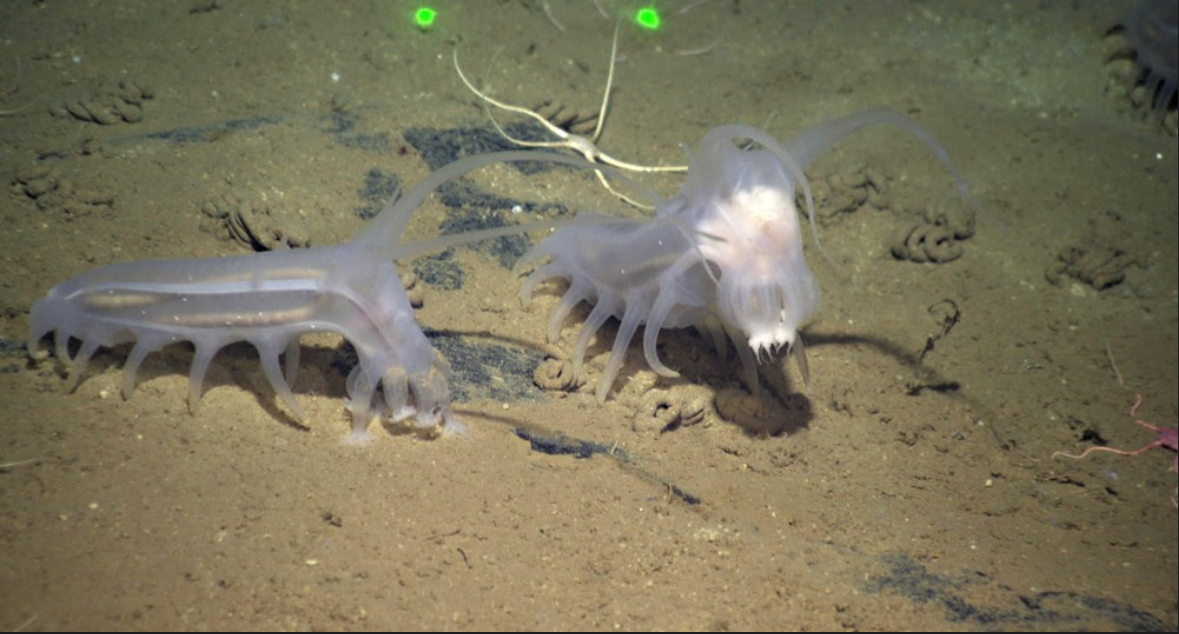
Above photo by Oceans Network Canada via Treehugger
As they have evolved at deep sea depths they would swell and burst if brought to the surface
They are hosts to several parasitic invertebrates, including snails and small crustaceans
But wait! What's this...?
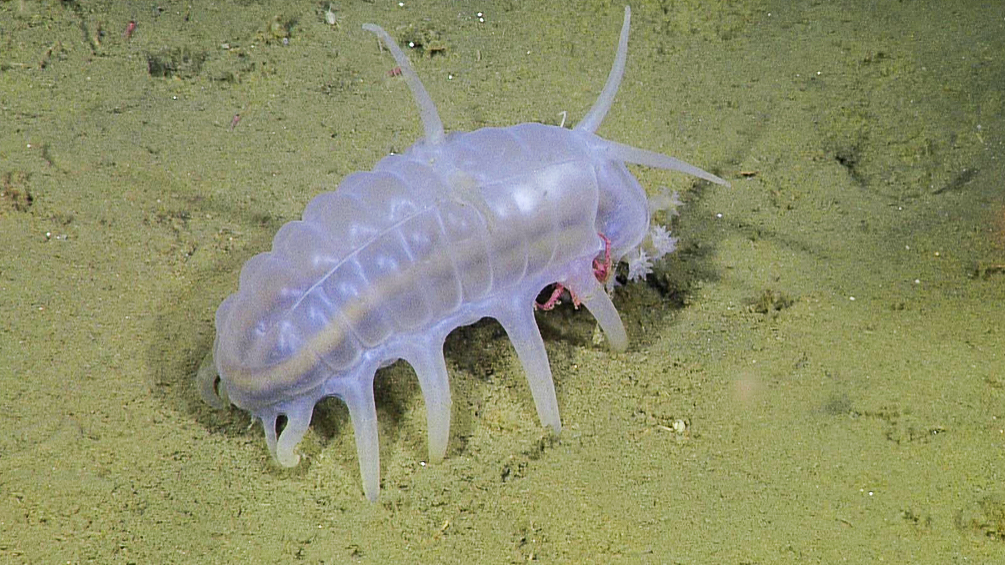
Above Above photo via MBARI
What's that red thing hiding under the Sea Pig?
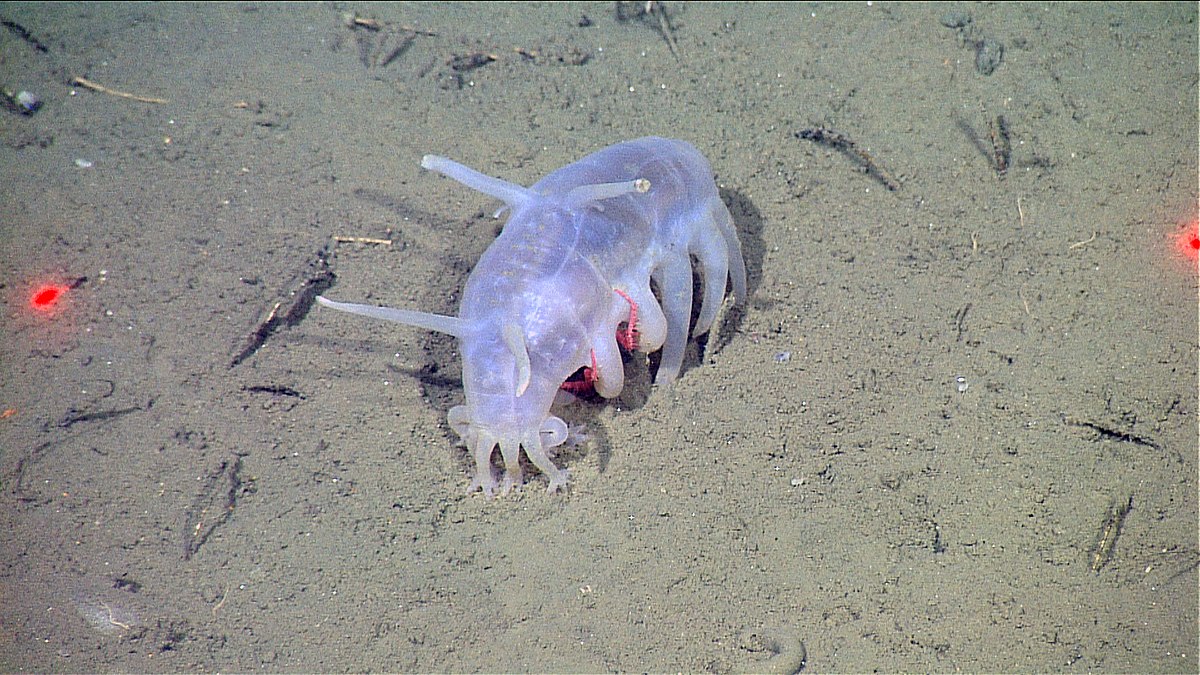
Above photo via wikipedia
It's a King Crab!

Above photo via MBARI
Peek-a-boo!
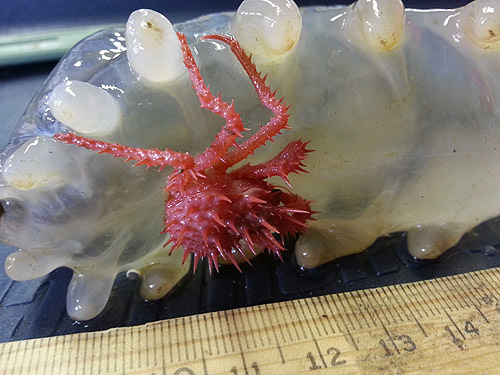
Above photo by Josi Taylor via MBARI
Why do King Crabs ride on Sea Pigs?
Usually King Crabs like to hide in rocks and seaweed from predators, but it is thought that these King Crabs were carried by the ocean current while they were small larvae and ended up in the deep sea....an area devoid of such hiding places!
“It’s like looking for a port in the storm,” said James Barry, ecologist and lead author of the study at the Monterey Bay Aquarium Research Institute (MBARI) in Moss landing. Sea cucumbers are the ports or the biggest buildings to hide next to in an otherwise empty area.” Scientific American
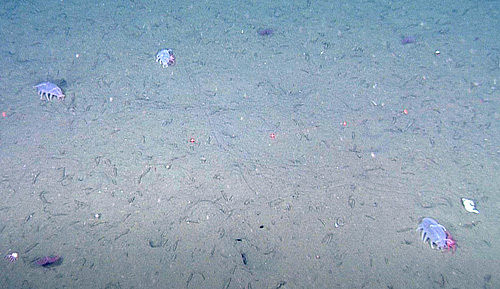
Above, ' This photograph of the muddy seafloor offshore of Monterey Bay shows three Scotoplanes sea cucumbers, at least two of which are host to juvenile king crabs.' MBARI
Barry and his team found a total of 600 juvenile crabs, 96 percent of which were either clinging onto sea cucumbers or hanging around right next to them. Sometimes the crabs were upside down holding onto the belly of the sea pig and other times they were crawling on its side. In some cases, the researchers found more than one crab on a sea cucumber. Of the nearly 2,600 sea cucumbers videotaped, 22 percent had at least one juvenile crab clinging to them
Goodbye Sea Pig, and your King Crab jockey!
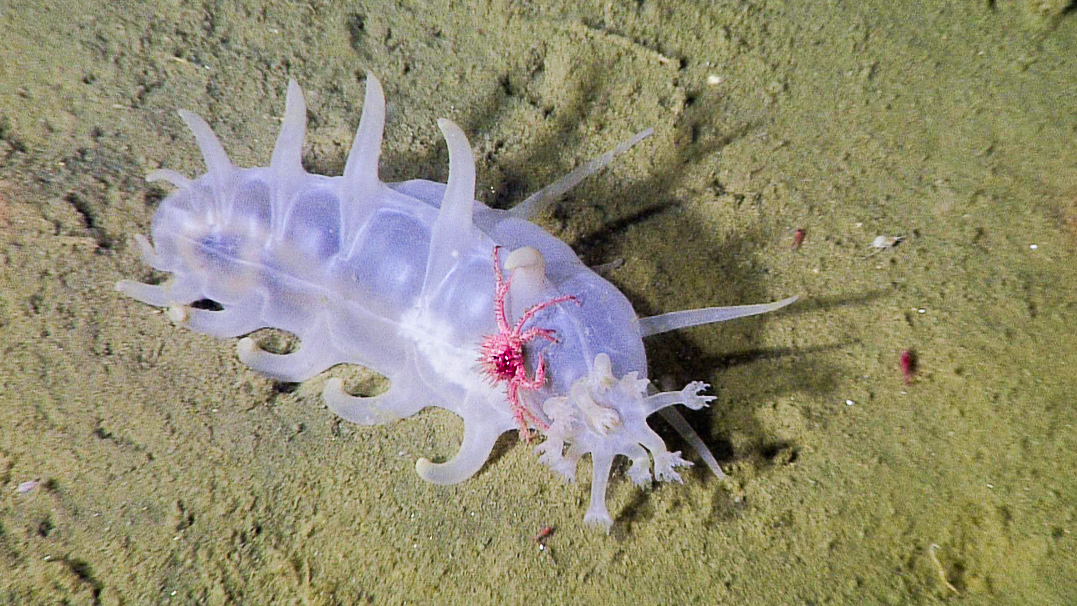
Above photo via MBARI
edit- I completely forgot to add my sources.....wikipedia and MBARI, unless specified
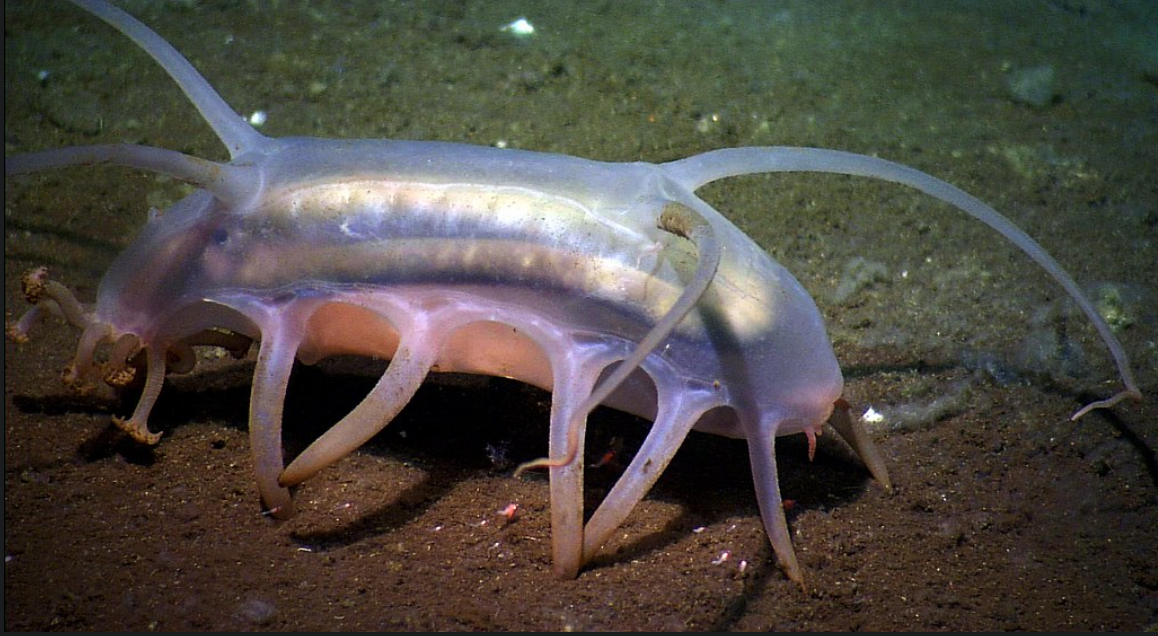
Main photo by Dusan Beno
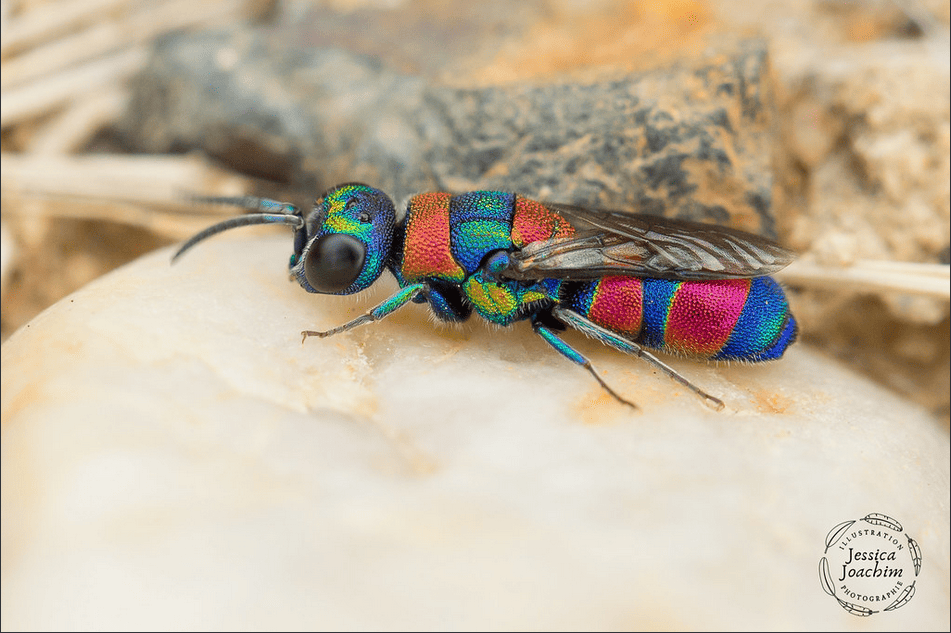
Above, 'Chrysis semicincta' by Jessica JOACHIM

Above, 'Cotinis Mutabilis, also known as the Figeater Beetle' by Cotinis Mutabilis

Above photo by philux66

Above, 'Green Tortoise Beetle, Cassida viridis' by Duncan Cooke
Length; 7 - 10mm.
Distribution; Widespread in England and Wales, although sparse in the north and rarer in Scotland.
Habitat; Grassland, Heathland & Moorland, Farmland, Wetlands, Woodland & Gardens.
Found; April to October.
The Green Tortoise Beetle is one of a group of several closely related beetles. Host plants include White Dead-nettle, Hemp Nettles, Hedge Woundwort, Gypsywort and Water Mint and is often found in gardens. When disturbed, the adults behave just like tortoises, retracting their antennae and feet, and pulling their 'shell' tight down around them as they grip tightly on to the leaf they are.
The Green tortoise beetle is round, flattened and lime green. Tortoise beetles are easy to identify as a group, but there are several closely related species that are very difficult to tell apart. the Green Tortoise Beetle is entirely green and generally lacks the markings of other species. Cassida viridis is similar to Cassida rubiginosa but can be distinguished by the rounded rear corners of the pronotum which are sharp in C. rubiginosa. It is also usually more apple green in colour.
Adults spend a few weeks feeding on host foliage and possibly also pollen before mating in April and May and ovipositing from May to July. Between 1 and 10 eggs laid in firm-walled and distinctive egg cases which are stuck to stems or under lower leaves and covered with frass and leaf fragments. They hatch within 6 to 10 days and the larvae initially feed below the leaves, moving to the upper surface as they grow, they pass through 5 instars and develop rapidly. They are fully grown within 4 to 6 weeks.
Pupation occurs from June to September. The fully grown larvae move to stems and petioles and become attached by a secretion before they pupate. This stage is also brief, generally lasting about a week, and new generation adults emerge from July to October.

Above 'Green vegetable or Shield bug' by Bernard Spragg. NZ
Nezara viridula, commonly known as the southern green stink bug, southern green shield bug or green vegetable bug, is a plant-feeding stink bug. Believed to have originated in Ethiopia, it can now be found around the world.
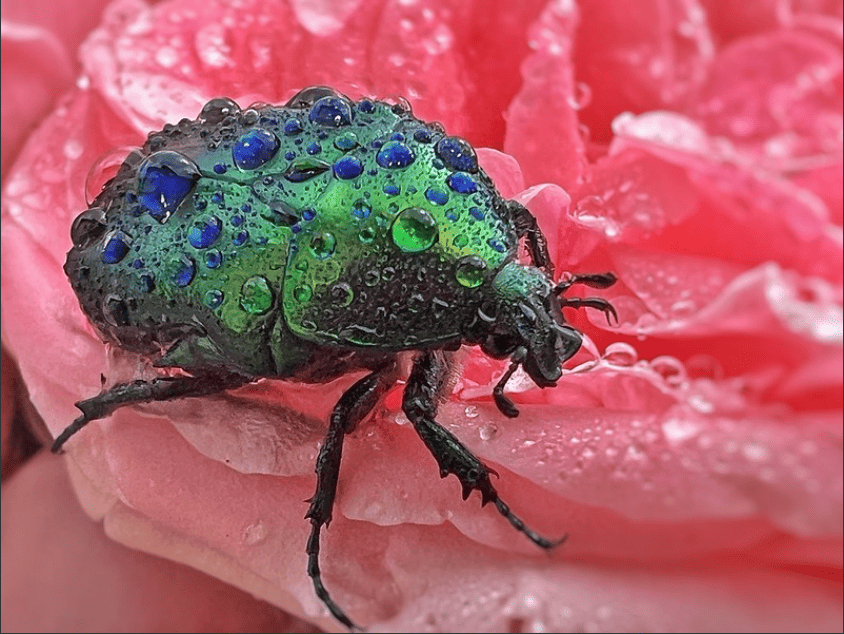
Above, 'Golden Beetle' by Ivan Anisimov
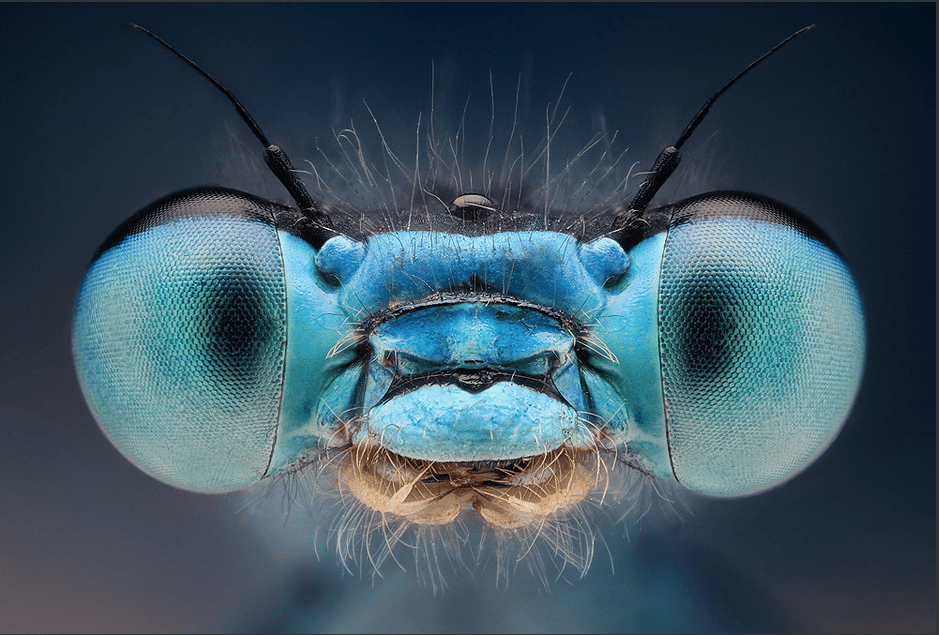
-Leeches are found all across the world, except Antarctica, so far around 700 species of leech have been described. Approximately 100 are marine, 480 freshwater and the remainder are terrestrial different species…. All of these are divided into 2 major infraclasses
Euhirudinea: the 'true' leeches – marine, freshwater and terrestrial – which have suckers at both ends and lack chaetae (bristles)
Acanthobdellida: a small northern hemisphere infraclass ectoparasitic on salmoniid fish, which lack an anterior sucker and retain chaetae.
The Euhirudinea is further divided into two orders:
Rhynchobdellida: jawless marine and freshwater leeches with a protrusible proboscis and true vascular system
Arynchobdellida: jawed and jawless freshwater and terrestrial leeches with a non-protrusible muscular pharynx and a haemo-coelomic system. source

Above image from here
-Leeches are segmented parasitic or predatory worms, and are closely related to earthworms
-They have suckers at both ends of their bodies and use them to travel around by ‘looping’ or ‘crawling.’ Some species can also swim like an eel

Above image by Chiswick Chap via wikipedia
-All leeches are hermaphrodites, although they prefer to find a mate to exchange sperm packets with…..
-They can live in both fresh and salt water, and there are some which are terrestrial, living on the ground or on low growing plants waiting for a meal to brush past
-Some species can even survive extremely dry conditions by burrowing into the soil where they can stay without any water. Their bodies contract, becoming dry and rigid, but within 10 minutes of water contact they emerge, ready to go!
-The most famous type of leech is probably the European medicinal leech (Hirudo medicinalis), which was used extensively in the past (the first recorded case being Ancient Egypt 3500 years ago). Its populations in the wild have dropped significantly due to over exploitation for the medical industry
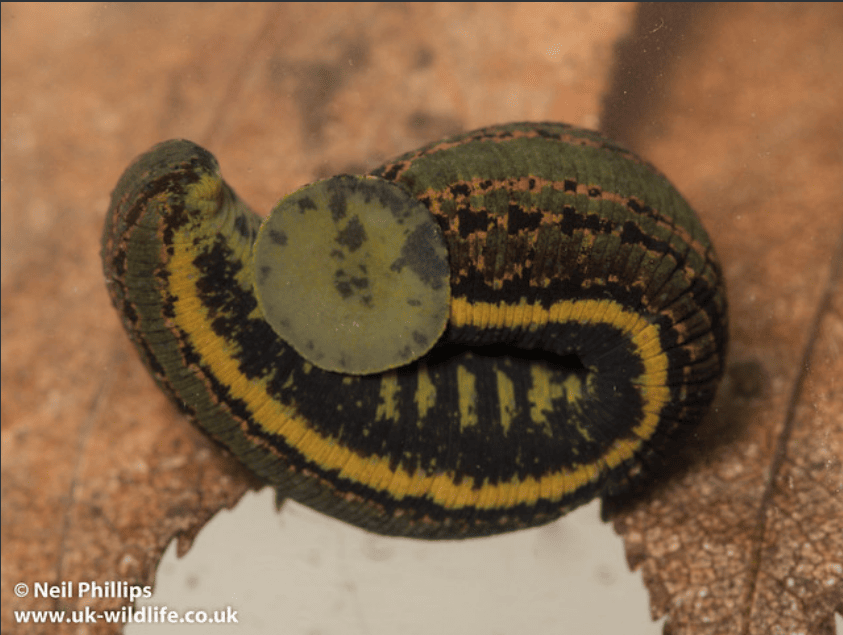
Photo by Neil Phillips
-Manchester Royal Infirmary used 50,000 leeches in one year in 1831, but use of the medicinal leech started to decline during the late 19th century. However, since the 1970’s they have made a comeback due to their use in micro surgery. Their anti coagulant saliva allows blood to keep flowing, and wounds to stay open during reattachment and reconstructive surgery!
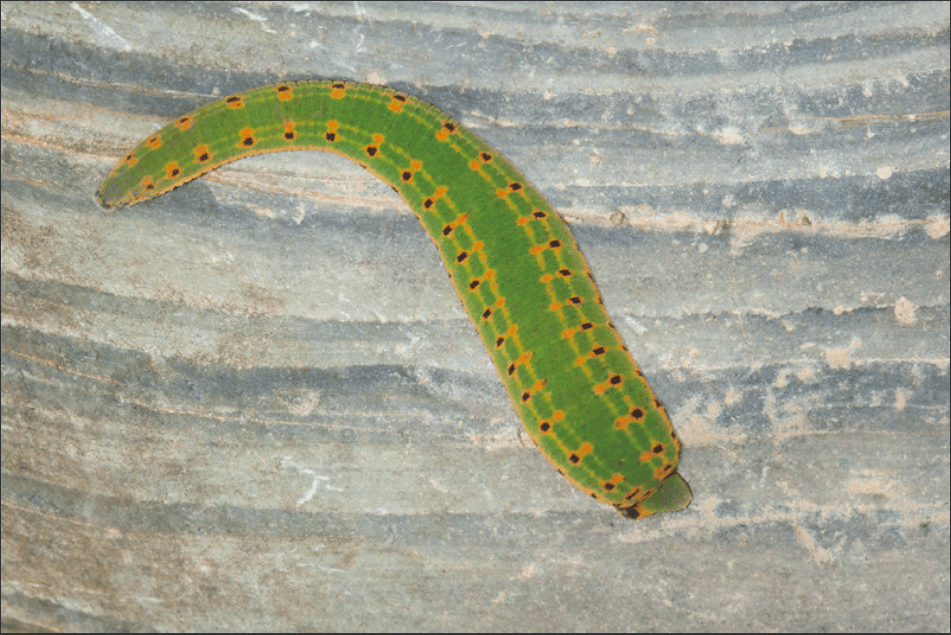
Photo by Armando Caldas
-Hirudo medicinalis are ‘jawed’ leeches (Gnathobdellida). They have 3 jaws resembling rotary saws which have around 100 sharp edges used to incise the host which leaves a Y shape wound on the skin. They are so tiny their bite is virtually painless. Blood suckers are only one type of leech though...
-Other species of jawed leeches can have between 1 and 3 jaws. Detrivorous species use their jaws for chewing and swallowing soft food particles, whilst the carnivores use them to cut a hole in the body walls of invertebrate prey (molluscs, worms, insect larvae), in order to suck out the soft innards.
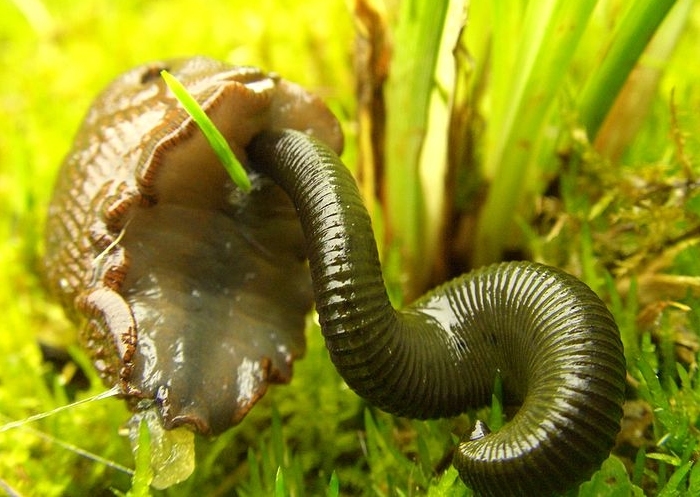
Photo by Manuel Krueger-Krusche
-The largest fresh water leech in the world is Haementeria ghilianii, (the Amazon giant leech) which can grow up to 450mm long and 100mm wide. One end of the leech contains its head, and the other the proboscis, which is 10cm long and like a hypodermic needle. It is capable of feeding on humans, rabbits, cattle and horses and a report from 1899 claims it could feed in such numbers that it could kill cattle and birds
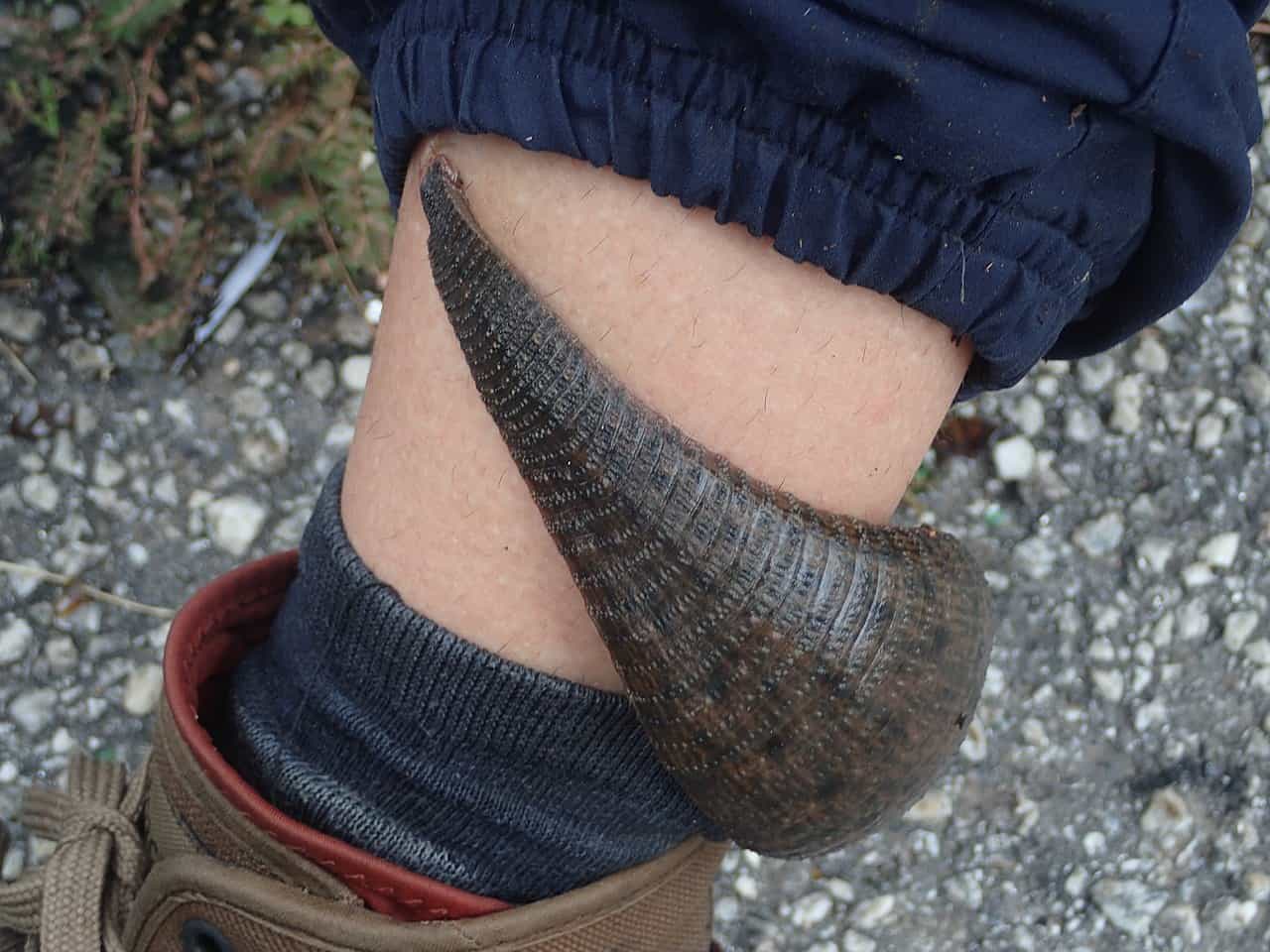
Photo by Anonyme973
-Its male reproductive parts can weigh 3-5 grams, and the female parts weigh in at 10 grams, they are capable of producing egg clutches ranging from 60 to 500 eggs
-It was thought to be extinct in 1893, however during the 1970s Dr Roy Sawyer discovered 2 specimens in a pond in French Guiana. One of these was transferred to the UC Berkeley where it was part of a ‘breeding’ program. Named ‘Grandma Moses’ it managed to produce 750 offspring over 3 years, and helped to bring the Amazon Giant Leech back from the brink of extinction
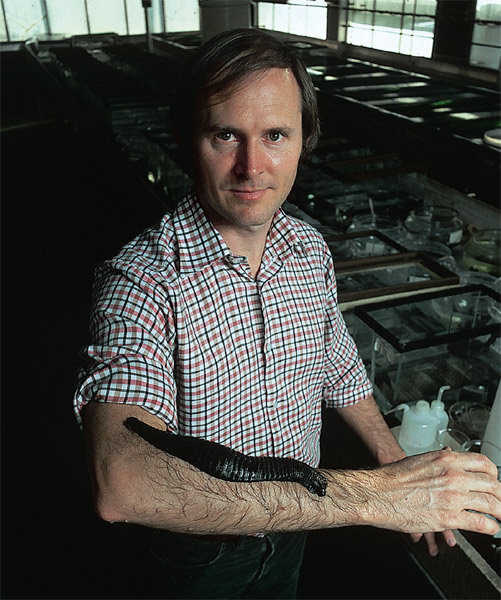
Dr. Roy Sawyer and friend photographed by Timothy Branning
-When it died, ‘Grandma Moses’ was given to the Smithsonian National Invertebrate Collection where it still resides preserved in alcohol!
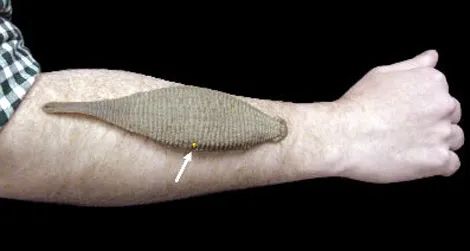
-A small minority of leech species have no jaws or teeth (these are the worm leeches or Pharyngobdellida). Instead they swallow their prey, usually small invertebrates, whole!
-The Kinabalu giant red leech (Mimobdella buettikoferi) is probably one of the longest leeches, growing over 50cm.
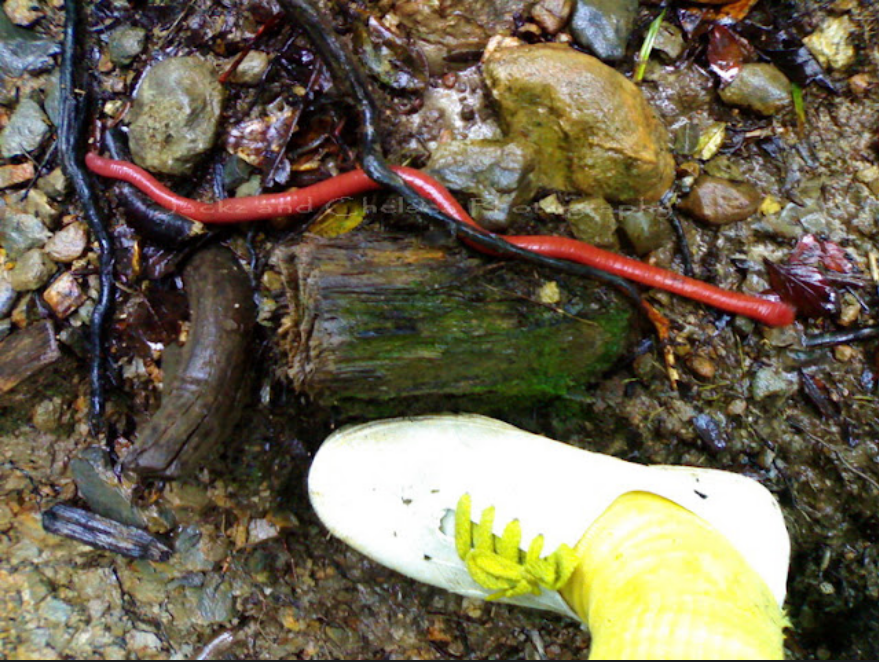
Above photo from here
-It lives only on Mt Kinabalu, Borneo and feeds on an equal giant prey, the Kinabalu giant earthworm (Pheretima darnleiensis)
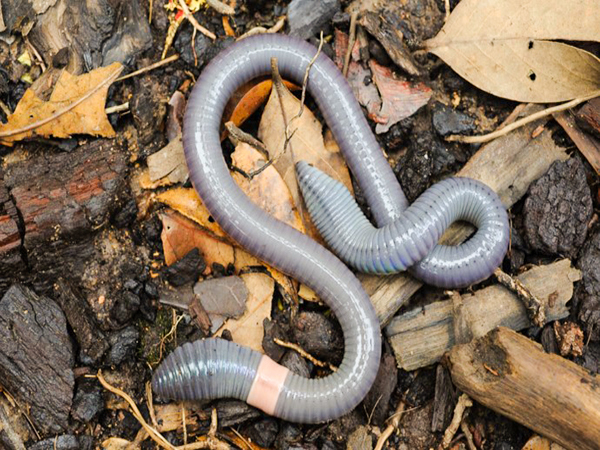
Kinabalu giant earthworm, Photo by Chien Lee

Kinabalu giant earthworm, Photo by Ivan Kwan
-It lives among the leaf litter and soil, and both leech and worm are usually seen during or after a downpour….
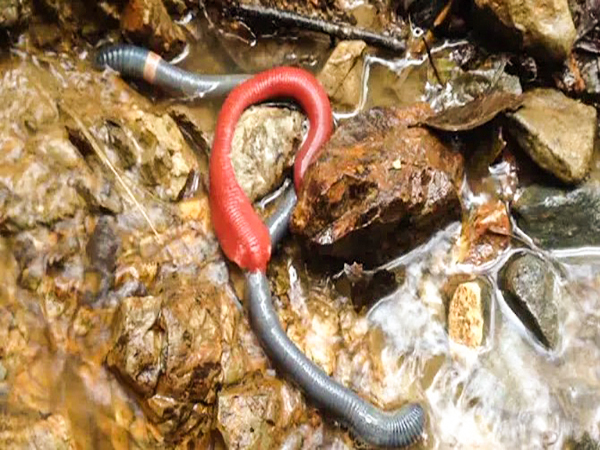
Found here
A hungry leech is very responsive to light and mechanical stimuli. It tends to change position frequently, and explore by head movement and body waving. It also assumes an alert posture, extending to full length and remaining motionless. This is thought to maximise the function of the sensory structures in the skin. source
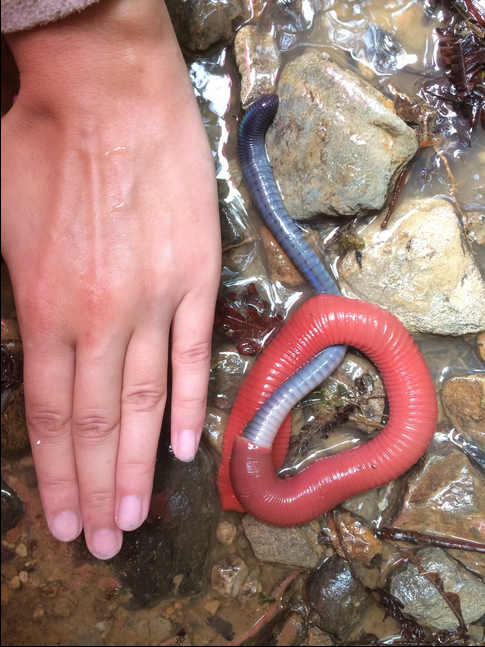
Photo from here
-When it finds a worm it begins to grope towards an end, then it begins to suck…..
Here is a delightful film of just that!
Also on youtube
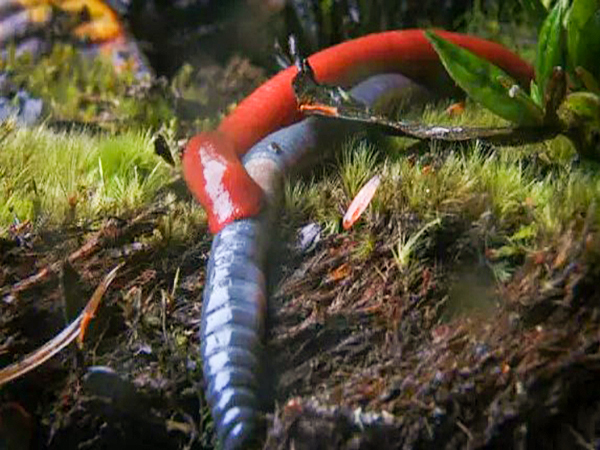
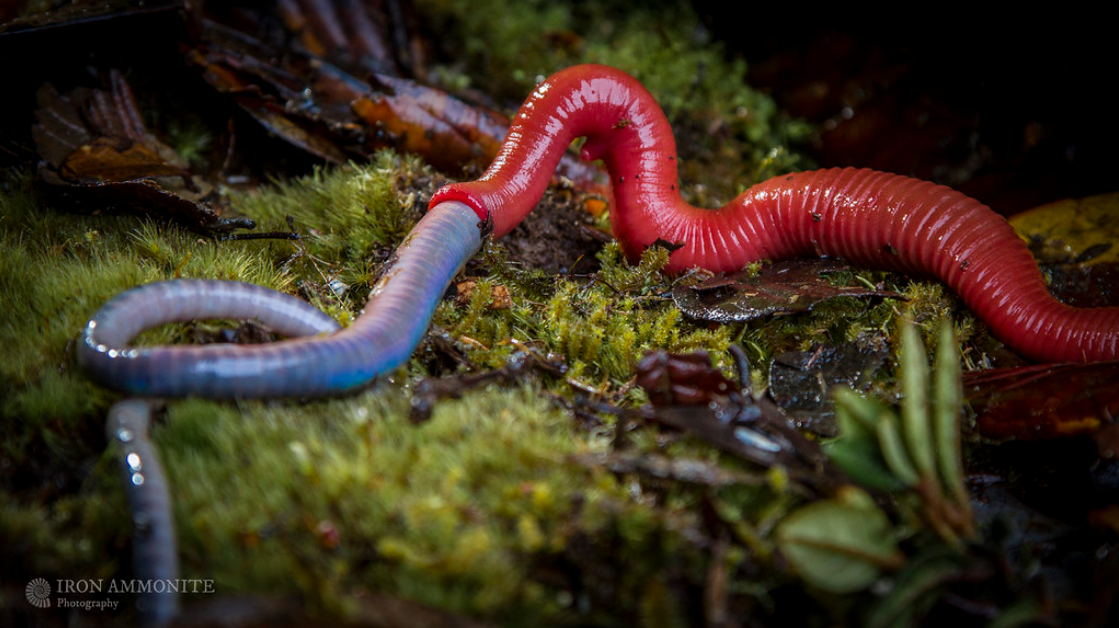
Above photos by Paul Williams
-Almost all leeches have at least one pair of tiny eyes, however some can have up to 16, these are arranged in patterns although their vision may only be able to detect light and dark.

Photo by Paul
-Glossiphoniid leeches demonstrate exceptional parental care for their offspring, which is the most highly developed for the annelids (the worm species). They produce a membranous bag in which they keep their eggs, this is carried on the underside of their bodies. When the young hatch they attach onto their parents belly (but not with a feeding bite) and the parent carries them to their first meal!

Above photo by Maralee Joos

Above photo by Duncan Cooke

Above photo by Duncan Cooke
Helobdella, which have a world-wide distribution, display the most highly developed parental care system: they not only protect but also feed the young they carry. This results in the young being much larger when they leave the parent and, presumably, in higher subsequent survival. source

Above photo by Dick Todd
-Leeches are quite hardy, some can survive in low oxygen environments, others at low ocean depth such as….
Bathybdella sawyeri occurs at 2447–2623 m depth at the Galápagos Rift and the Southeast Pacific Rise and Galatheabdella bruuni has been found at depths of 3880–4400 m in the Tasman Sea (Richardson and Meyer, 1973; Burreson, 1981; Burreson and Segonzac, 2006). However, the leech that occurs at the greatest depth is Johanssonia extrema described by Utevsky et al. (2019) that was collected at a depth of 8728.8 m in the Kuril-Kamchatka Trench. Occurring at that depth, J. extrema withstands pressure that is over 870 times greater than that at sea level. source
-Some species have evolved to live within the extreme dark of caves, others to withstand the extreme cold of arctic waters, one lives in waters of high alkalinity with the addition of arsenic at levels >110mg/L
Members of Praobdellidae are characterized by feeding primarily from mucous membranes [mouth, throat, nasal passages, and under the eyelids] particularly of mammals, but also from the skin of amphibians. This behavior is considered equally unnerving by both academic and public audiences. source
-A backpacker returning from Vietnam discovered she had also brought home a leech passenger that was attached inside her nostril "At one point, I could feel him up at my eyebrow," she said. It was removed at Liverpool Hospital, before it could reach her brain…. She than kept the leech named ‘Mr Curly’ as a pet…. delightful!
-One other leech has evolved to live in another type of orifice...a hippos anus!
…...Placobdelloides jaegerskioeldi inhabits one of the most extreme environments of all of the leeches that invade orifices, the rectum of the hippopotamus (Oosthuizen and Davies, 1994). Adult P. jaegerskioeldi have papilla-bearing tubercules that are postulated to provide traction against the anal-wall of the hippopotamus (Oosthuizen and Davies, 1994). This species is also one of the few glossiphoniid leeches that can actively swim and swims (even upstream) to its hippopotamus host (Oosthuizen and Davies, 1994). source
As always, I’m not and expert I just like finding and sharing fun things I find on the internet. Any mistakes or errors, let me know in the comments and I’ll edit my post!
All information via wikipedia-
Except these-
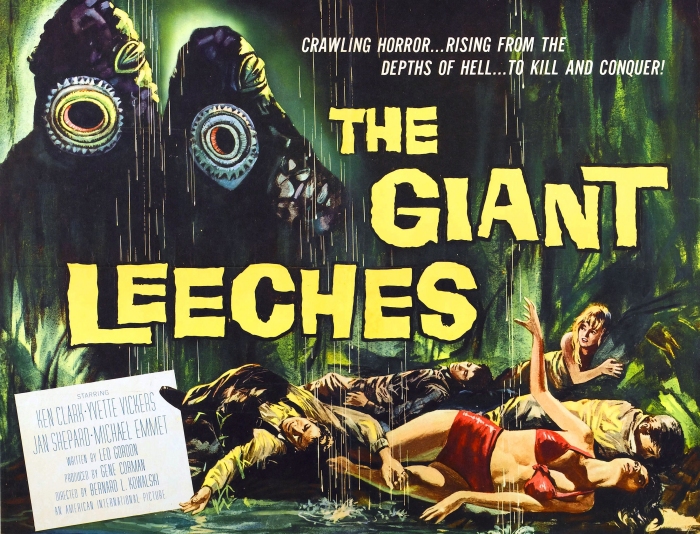
Title photo by David Guillemet
I've only just discovered that this exists...
Orangutan crab (Achaeus japonicus)
.....it has relatively long arms, which are thickly covered with fine hairs, red or reddish brown in colour, and often laden with small bits of debris for further camouflage....
....frequently, but not always, found in association with the bubble coral wikipedia
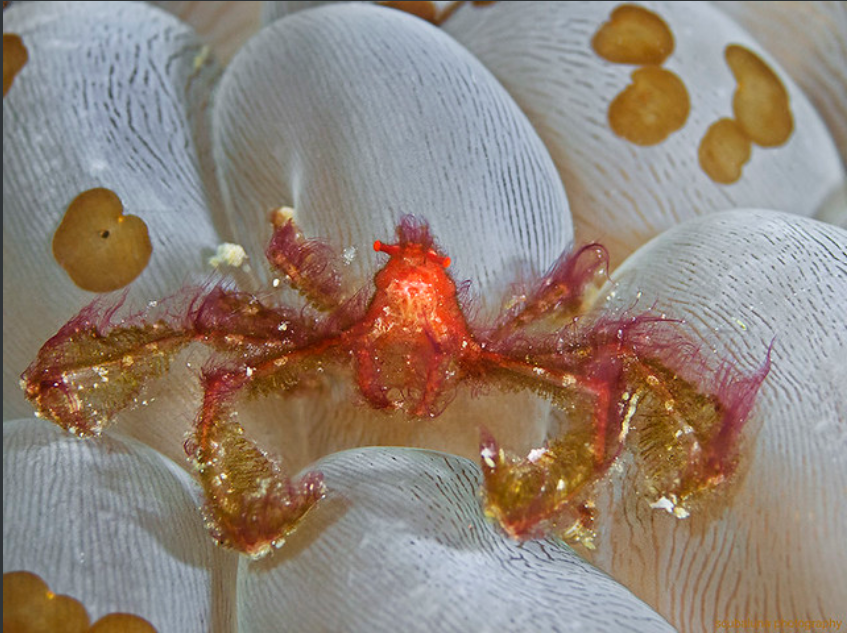
Above photo by scubaluna
-They're found in the Indo-Pacific region, have a naturally shaggy pelt, and like to decorate themselves with debris, small plants, sedentary animals, shells and gravel to enhance their natural camouflage!
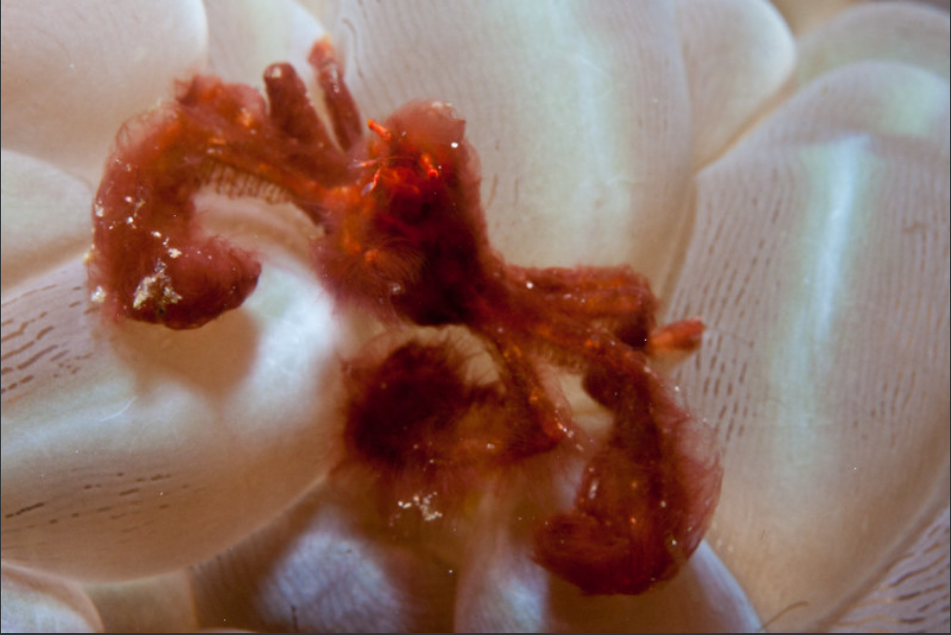
Above photo by Bruce Versteegh
-During the day like to hang out in Bubble Coral, which swells its bubble-like structures to maximise its intake of light....
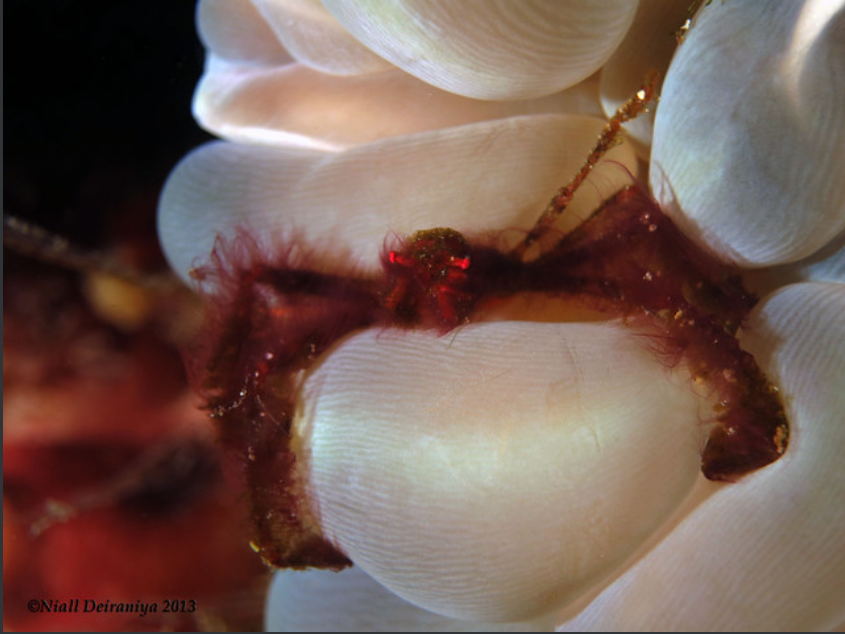
Above photo by Niall Deiraniya
-At night the coral 'deflates' and the Orangutan crab wanders off in search of food
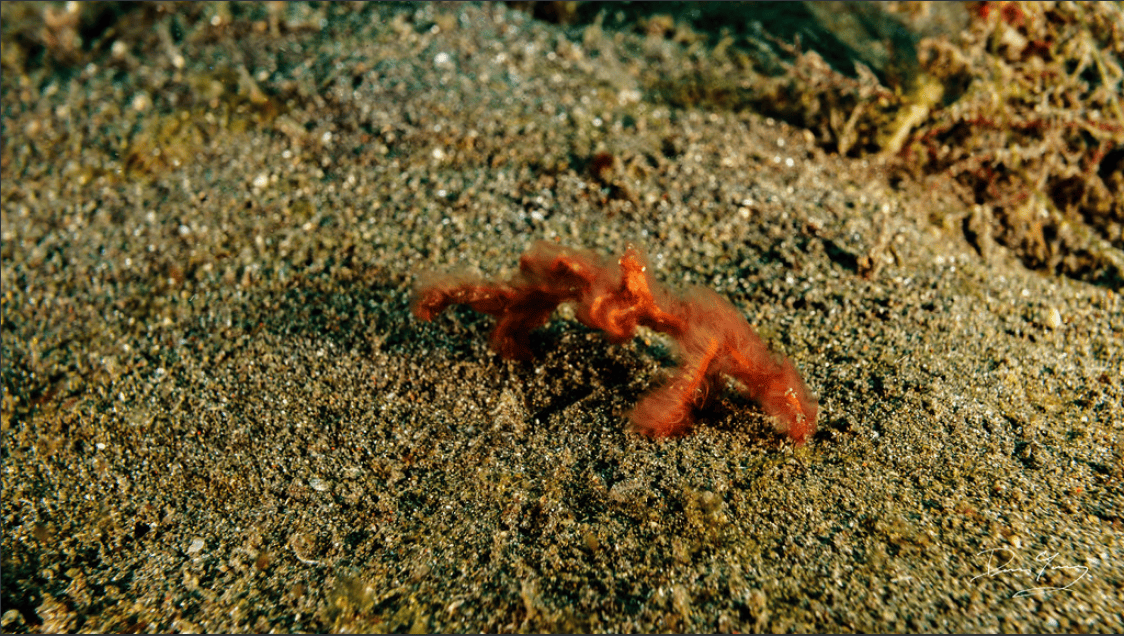
Above photo by Dennis Young
The last 2 photos made me piss myself laughing....it looks like a fuzzy little muppet!
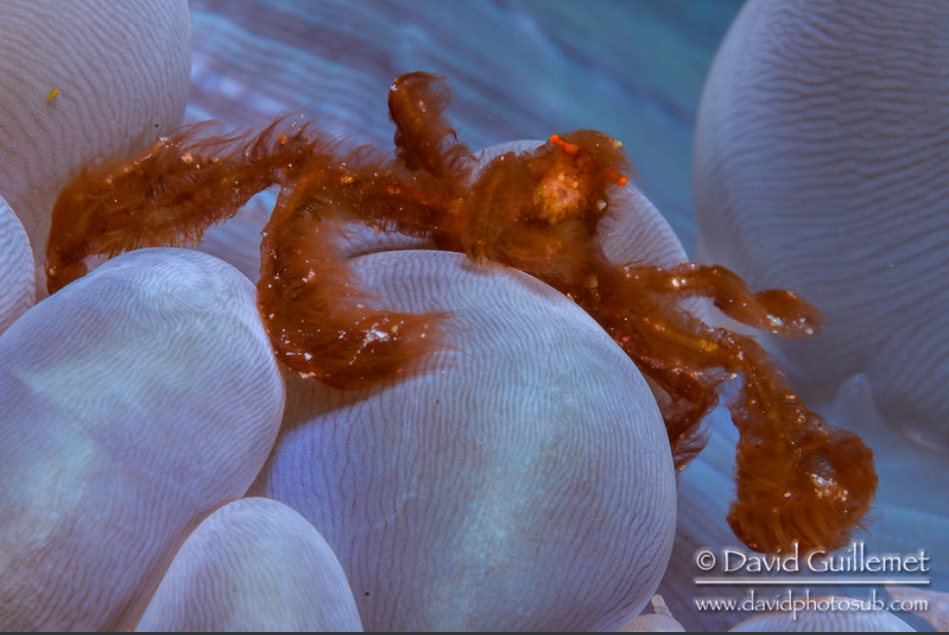
Title photo by Distinctly Average
Woodlice are crustaceans, and get their name from being found in wood, and 'louse' (a parasitic insect) however, they are neither insects or parasites!
There are over 3500 species of woodlouse, and are found throughout the world except Antarctica

Above photo by Nico Ardans
Their ubiquity has resulted in many (up to 250) different local names for them including...
- Boat-builder (Newfoundland, Canada)
- Butcher boy or butchy boy (Australia, mostly around Melbourne)
- Carpenter or cafner (Newfoundland and Labrador, Canada)
- Cheeselog (Reading, England)
- Cheesy bobs (Guildford, England)
- Cheesy bug (North West Kent, Gravesend, England)
- Chiggy pig (Devon, England)
- Chisel pig
- Chucky pig (Devon, Gloucestershire, Herefordshire, England)
- Doodlebug (also used for the larva of an antlion and for the cockchafer)
- Gramersow (Cornwall, United Kingdom)
- Hog-louse
- Millipedus
- Mochyn coed ('tree pig'), pryf lludw ('ash bug'), granny grey in Wales
- Pill bug (usually applied only to the genus Armadillidium)
- Potato bug
- Roll up bug
- Roly-poly
- Slater (Scotland, Ulster, New Zealand and Australia)
- Sow bug
- Woodbunter
- Wood bug (British Columbia, Canada)
- Wood pig (mochyn coed, Welsh) source

Above photo by mark faux
They have dark grey or black shells, with armour like exoskeletons made of 7 plates. Each plate has ~~2 pairs~~ one pair of legs attached, making 14 legs in total. They grow between 0.7mm to 18mm, and can live up to 2-3 years!

Above photo by davholla2002
Their main defensive behaviour is to roll up into a ball, and they can also release an odourous chemical to deter predators. They will also 'ball up' in order to prevent dehydration, and moisture loss during dry periods!

Above photo by Jim McLean
They are living fossils! Their aquatic ancestors lived in the oceans during the Silurian and Devonian periods. Later on, probably during the Carboniferous, they had evolved to live on land

Above photo by Sam
During this aquatic to terrestrial transition they had to evolve a brood pouch (marsupium) to prevent their eggs and young from drying out (Their ancestors would have released eggs directly into the water).
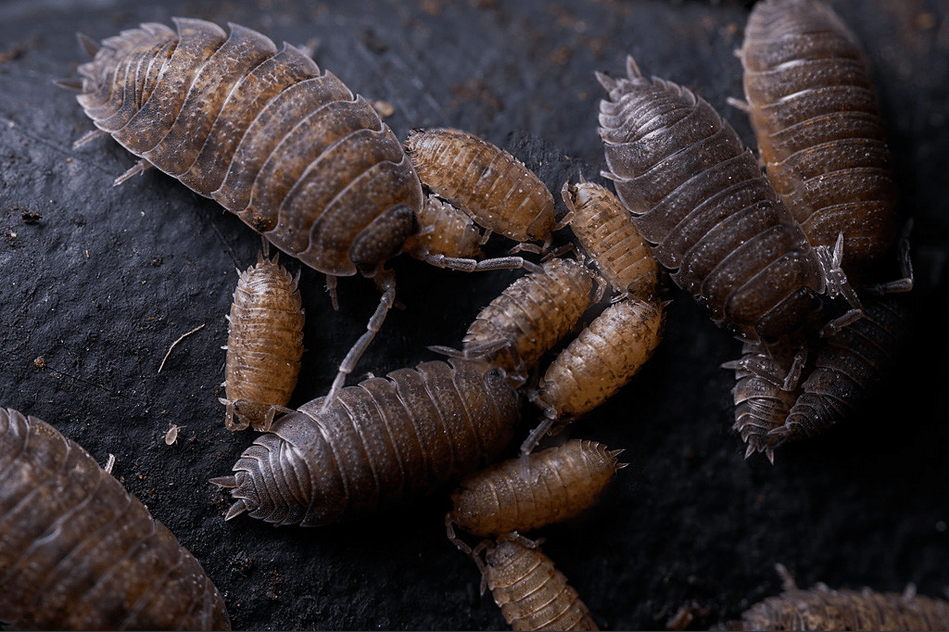
Above photo by Brian Valentine
Another adaptation is breathing via their gills which are located on their hind legs and are always covered with a thin layer of water. As a result they have to live in moist, damp environments. They also prefer to live in groups!
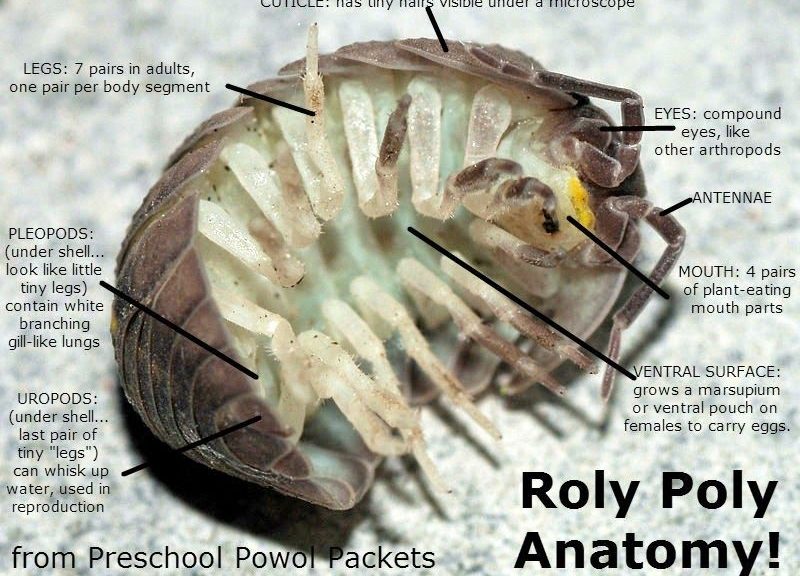
Image source
They eat decaying leaves, fungus, mold, and even the droppings of other animals. They help to break down vegetation and organic matter and play an important role in the nutrient cycle!
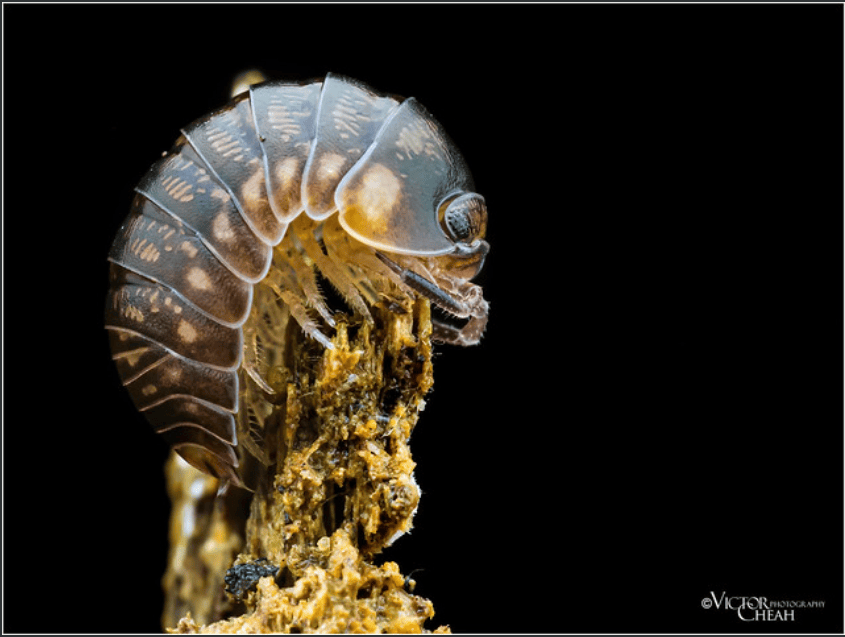
Above photo by Siew Chuan Cheah
They need to shed their exoskeleton as they grow, and this molt takes place in two stages. Firstly, the back half is lost, then about 2-3 days later, the front half sheds. Most other athropods shed their cuticles in one go

Above photo by Max Thompson
Woodlice can tolerate contaminated soil, unlike most other creatures!
....they can crystallise heavy metal ions midgut like copper, zinc, cadmium, arsenic and lead. This cleans up soil and purifies contaminated water. source
Aren't they fab?
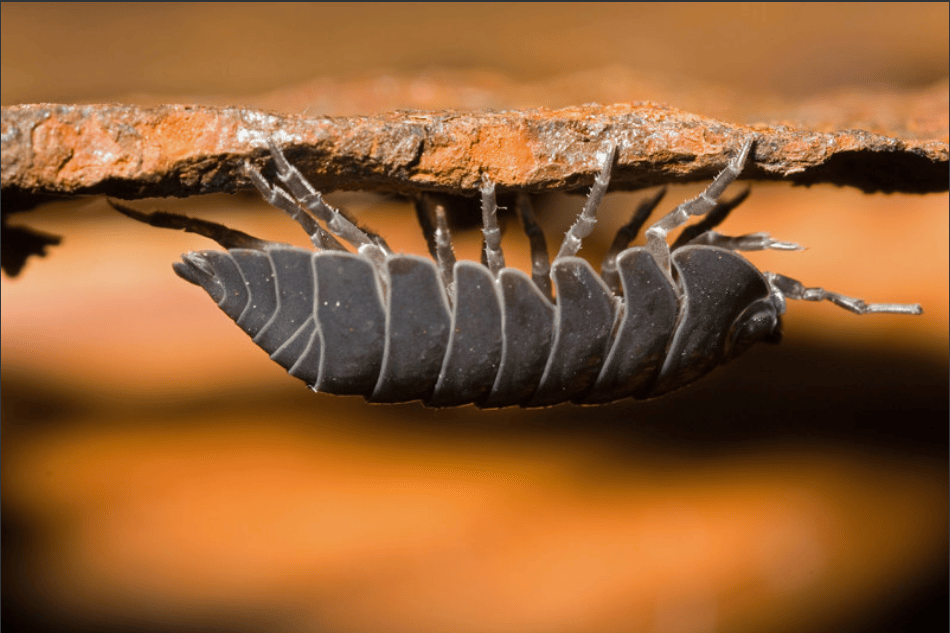
Above photo by David Graham
All information from wikipedia here and here unless stated otherwise
As always, I'm not an expert, I just like sharing fun things....also this is my first post with my new mander account....woooo!
edit- 'one pair of legs'
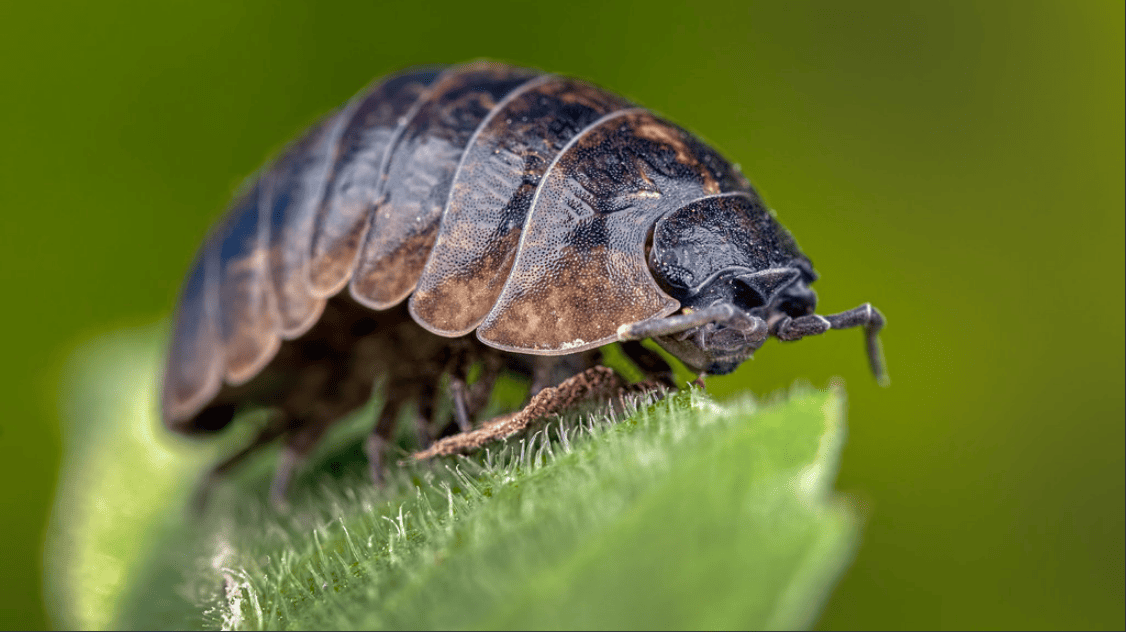
cross-posted from: https://lemmy.ml/post/12435180
NB This is a post I did on awwnverts and decided to add it here. I've included some extra photos of ol' Eunice, as I wanted to show how beautifully iridescent it is, as well as some really nice (glamorous) head shots!
Post image 'Bobbit-Worm' by Hendra Tan
Their name comes from the John and Lorena Bobbit Case
They live tropical and subtropic bodies of water in the Indo-Pacific. They've been discovered in Bali, New Guinea, the Philippines, Australia, Fiji, and Indonesia!
They can reproduce asexually via segmentation!

Photo by budak
They can live between 3-5 years and grow on average 3 feet long, although one was discovered at 10 feet long!
Photo by Ken Traub
The fossil record shows they've been around for 20 million years!
They like to build mucus lined burrows on the sea floor from where they ambush their prey!
Photo by eunice khoo
Despite having a pair of small eyes they use their antennae to detect prey as they are virtually blind!
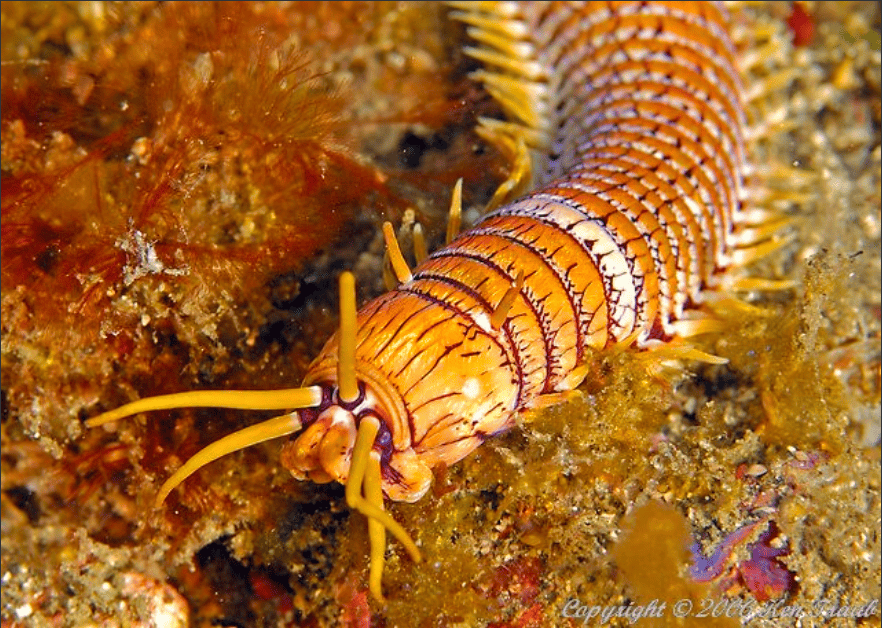
Photo by Ken Traub
Peters' Monocle Bream tropical fish have been observed 'mobbing' Bobbit Worms by directing sharp jets of water at them in order to deter their attacks!
Bobbit Worms can decimate aquariums. They can arrive as small worms hidden in rocks and corals and can remain undetected for quite some time. Don Arndts heroic battle against a Bobbit Worm is the stuff of legends. His foe was a wily adversary despite the many attempts to poison and kill it, including glue and crushed glass hidden in baited shrimp! TLDR version here
Their jaws are wider than their bodies are retractable and open like scissors!
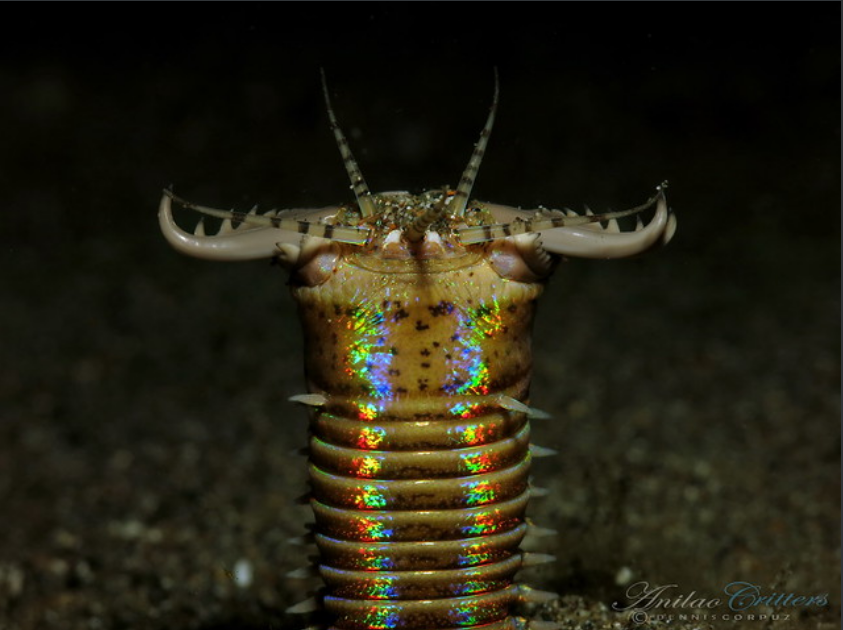
Photo by Anilao~Critters
Their bodies are covered in tiny bristles which grip, and help it to explode out of it's burrow while hunting!
Mr DeMille, I'm ready for my close up...
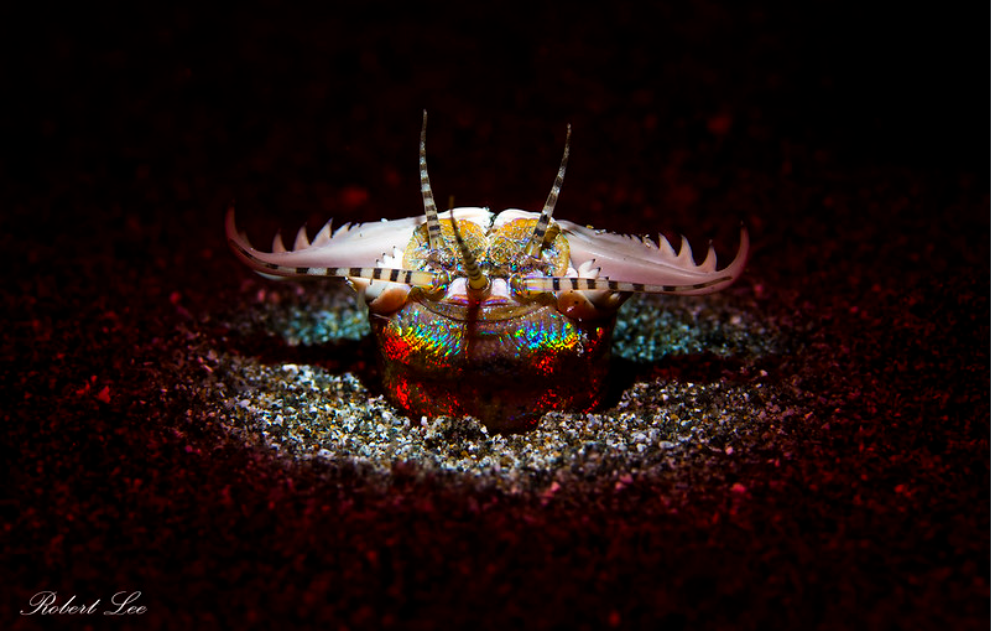
Photo by Rob_Lee Photography
Now give the little fella a kiss!
(photo by Pauline Walsh Jacobsen)
edit- most info from here and I forgot to credit the last image
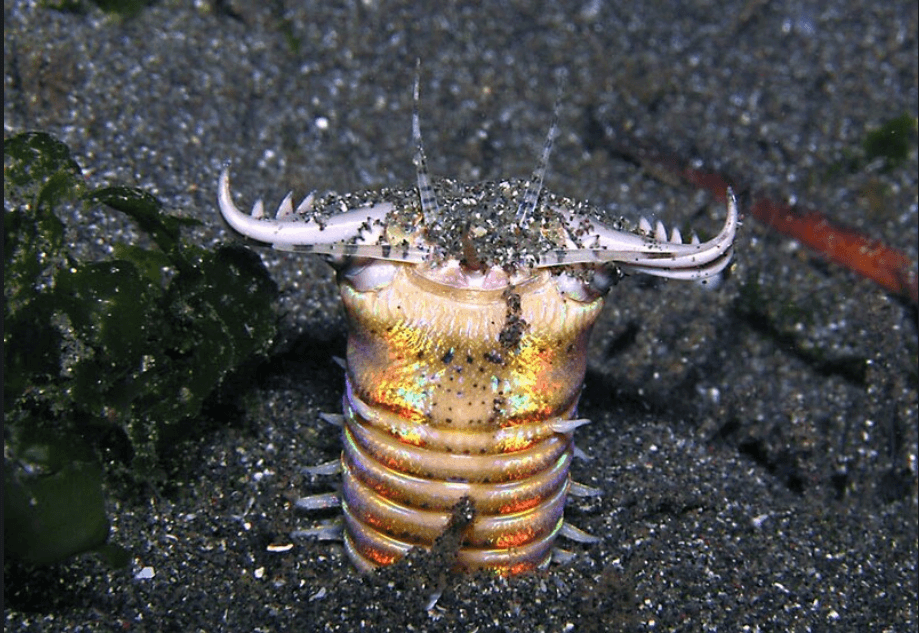
Title photo- life reconstruction of Aysheaia pedunculata
Travel back in time to the Cambrian Era, a period famous for the diversity of its life forms!
Lasting approximately 53.4 million years from the end of the preceding Ediacaran period 538.8 million years ago (mya) to the beginning of the Ordovician period 485.4 mya. It is a period where the atmosphere had elevated concentrations of oxygen, and the global temperature increased-creating a temperate world
Geological timescale from here
Scientists believe that the higher oxygen levels, and warmer climate contributed to the incredible diversity of life that occurred in the oceans.
However, on land it was mostly barren...complex lifeforms were non-existant and would have been restricted to mollusks and athropods emerging from the water to feed on micobes in slimy biofilms
The Cambrian is unique as it had unusually high deposits of lagerstätte sedimentary deposits, these sites offer exceptional preservation of 'soft' organism parts, as well as their harder shells which means that the study and understanding of the fossilized life forms surpasses some of later periods
Which brings us to Aysheaia!
It is an extinct genus of soft-bodied lobopodian, known from the Middle Cambrian Burgess Shale of British Columbia, Canada source
Described as looking like a 'bloated caterpillar' with spines. It was a segmented worm like animal 1 to 6 cm in length and about 5 mm wide
Comprised of 10 body segments with each segment having a pair of spiked annulate legs (consisting of rings or ringlike segments). It did not have a separate head, its mouth occupied the front of the body along with 6 finger like projections, and 2 grasping limbs on it's 'head'.
Diagrammatic reconstruction of Aysheaia pedunculata
Reconstruction of A. pedunculata
It was similar to modern terrestrial Onychophora (velvet worms). However, it differs due to a lack of jaws and antennae, and possible lack of visual organs, and the terminal mouth...
Above, Photo of Velvet Worm (Euperipatoides sp.) by Stephen Zozaya
Aysheaia is believed to have grazed on prehistoric sponges gripping onto them with it's many claws. The shape of it's mouth suggests that it was a predator. It probably used the paired structures on it's head to grasp hold of its prey, and then pass it to the finger like projections around its mouth
And now for some fossils!
Above, Lobopodian Aysheaia pedunculata Walcott, 1911, USNM 365608 from the Stephen Formation (Cambrian Series 3, Stage 5), British Columbia, Canada here
Above, Aysheaia pedunculata (ROM 61108). Complete specimen preserved laterally showing limbs and gut trace. Specimen length = 20 mm here
Above, Aysheaia, a worm-like animal with annulated legs, from the Burgess Shale, Canada here
Also this really awesome diorama of life under the Cambrian sea
Above, Burgess Shale Biota (L-R) Aysheaia, annelid worms, Olenoides trilobite, Marrella here
Well I hope you enjoyed this post (hopefully the first of many) of ancient invertebrates, and as usual my disclaimer that I'm not an expert, I just like sharing fun things!
All information via wikipedia here and here, and not wikipedia from here and here
edit, formatting
edit 2- Done the thing that makes the images pop out in order to link this post with one on Velvet Worms...
....and a big 'Hello!' to you, if you've just read this post after following the link 😊
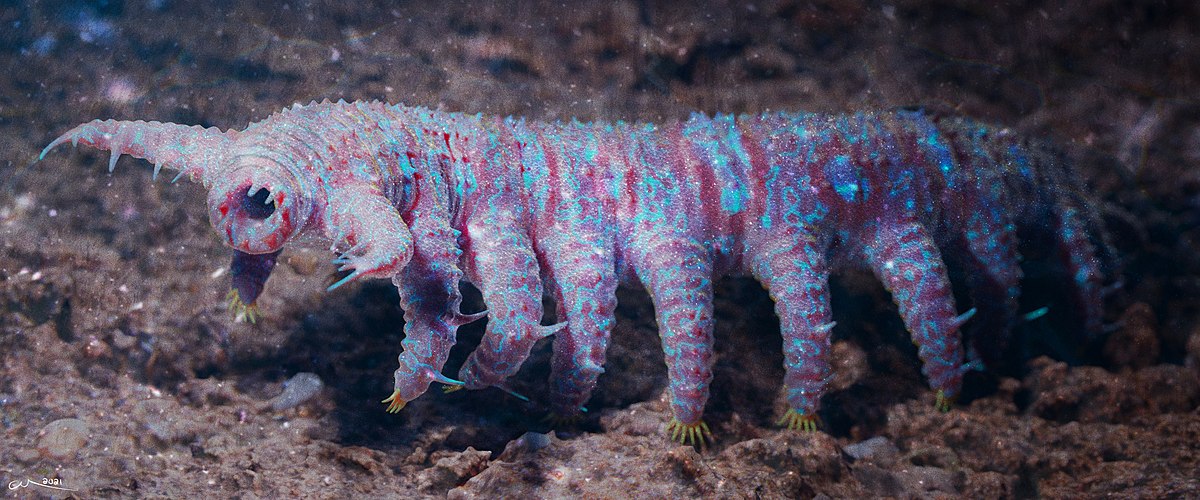
Title photo by Kristen Rudd
There are over 7000 species of worm, of which 150 are widely distributed around the world!
Their bodies are made of many ridged segments covered in tiny bristle called 'setae', which help them grip the substrate allowing them to move forwards and backwards!

Photo by John Hallmén
They eat organic plant matter, fungi and other microorganisms!
Earth worms breathe through their skin, can breathe underwater and survive being submerged for quite some time!
They secrete mucus which helps them move through the soil and by contracting and relaxing different muscles, which alternates shortening and lengthening their bodies!

Photo by Aisling
Earthworms are mostly hermaphrodites (having both male and female sex organs), although recently a (nematode) worm was discovered that had 3 sexes, 1 part male, 1 part female, and 1 part hermaphrodite (it also lives in water 4 times saltier than the ocean and is immune to arsenic!)
One study found that worm sex can last between 69-200 minutes!
Both worms will get pregnant during sex, and each worm will use both their sex organs at the same time!

Photo by Reds.

Photo by Bob
Post exchange, each worm forms a collar-like clitellum around its body. This clitellum, filled with eggs and sperm, forms a cocoon when it’s pulled off. Inside the cocoon, fertilization occurs, resulting in hatchlings. via Bob
Each earthworm can produce up to 1000 baby worms every 6 months!
They are also capable of parthenogenesis, where they can reproduce asexually without the need for fertilisation
Earthworms will swallow tiny stones which they keep in their gizzard, these grind up vegetation and other organic matter to help digestion!
They have a closed circulatory system (like humans) which has 5 pairs of aortic arches which work together like 10 hearts to circulate blood- pushing it in one direction, then pulling in the other. (Most invertebrates have a simple pumping of fluids around an open system, which washes inside the body with blood extracting and exchanging nutrients and waste)

Earthworm Dissection by threeflowersphotography
Earthworms are Soil Engineers, their burrowing mixes soil, aerates substrate and converts complex organic matter into earthworm poo, which is then used by plants. They are critical to our growth of food and trees, without them soil density would increase, reducing the ability of roots to take up water and breathe!

Photo by John Glover
Earthworms have also been observed exhibiting social behaviour by forming herds and making 'group decisions' by using touch to influence each other!
....[They] tested how the worms affected each other's behaviour, investigating whether the worms use either chemical signals or touch to decide which chamber to move to....[Results] indicated that the worms did not leave a chemical trail behind them that communicated their direction of travel.... ......suggesting that they used touch to communicate where they were going. Source
Now give our worm friend a kiss!

Photo by Dave Buckley
All info from here and here, unless otherwise stated
Disclaimer! I'm not an expert, I just like learning and sharing fun things...any mistakes, leave a comment and I'll edit, Cheers!
edit, added (nematode) for clarification

Title photo by LS Perks
Native to Australia (where else?) it can also be found as an invasive species in New Zealand. It feeds on Eucalyptus species and can become problematic, striping the leaves and damaging the trees hence it's actual name The Gum Leaf Skeletoniser
As the caterpillar grows it sheds it's exoskeleton, during each molt the head portion of the previous exoskeleton stays attached to it's body resulting in a mini tower of empty heads
“The molted head capsules start stacking early but they are not always visible, as the smaller ones get dislodged over time,” Hochuli said. “It’s not uncommon to see caterpillars with at least five old heads stacked on top of the one they are currently using.” Source
The heads can reach up to 12mm tall, and look rather dandy!
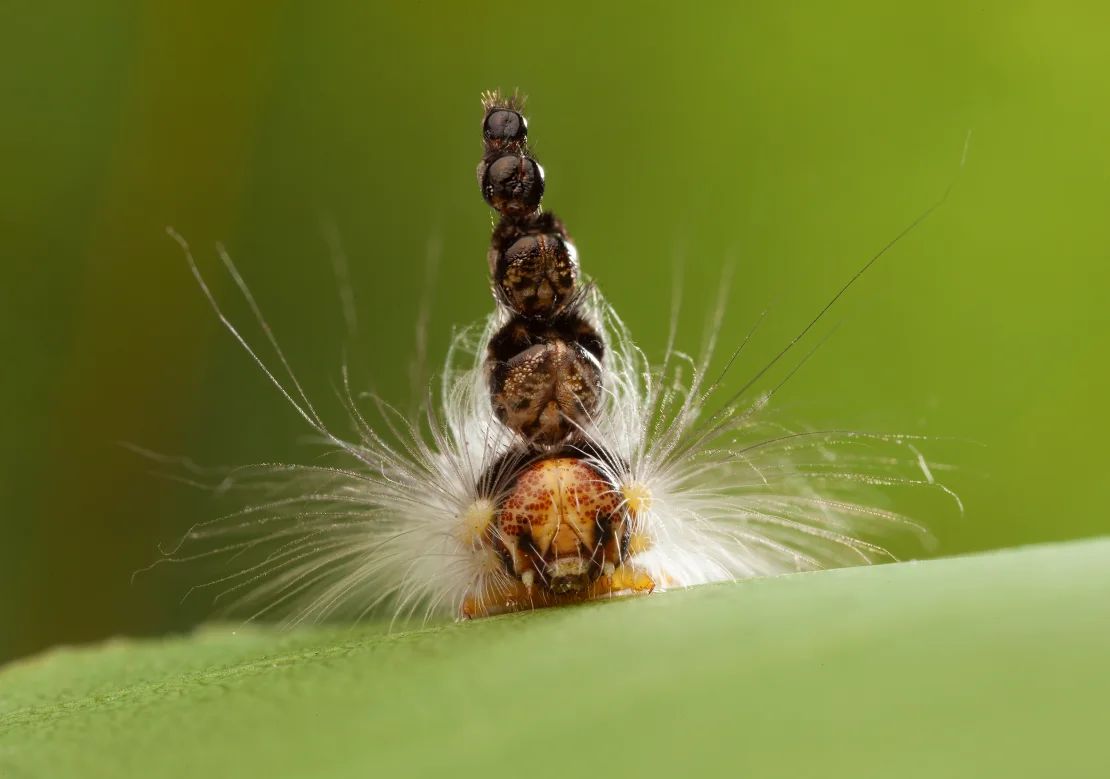
Photo by Alan Henderson/Minibeast Wildlife
The several reasons for this, one is to look bigger and more intimidating to predators, another is to create a false target for a predator, and another is that the caterpillar uses the head piece as a weapon or shield to fend off insects with needle like mouth parts such as Assassin Bugs
....researchers removed the head stacks from some caterpillars, left them on others, and kept tabs on their survival once they were back in the field. Caterpillars who kept their extra heads were much more likely to survive in the field....Source

Photo by John Tann
Unfortunately for The Mad Hatterpillar it's list of predators is long and relentless.... it has also evolved stinging hairs to complement it's head gear, and will writhe around to evade being grabbed, and if that isn't enough it will vomit out it's guts....
“They’ll just spew out a whole bit of yucky green liquid that probably smells and tastes awful,” Henderson said. “And if they shove that in the face of the predator, it can turn them off.” Source

Photo by Betty AN
Once the Mad Hatterpillar is finished eating all the Eucalyptus it can, it pupates into a small brown, unremarkable moth with markings that help it camouflage on the trunks of it's food source

Photo by Victor Fazio
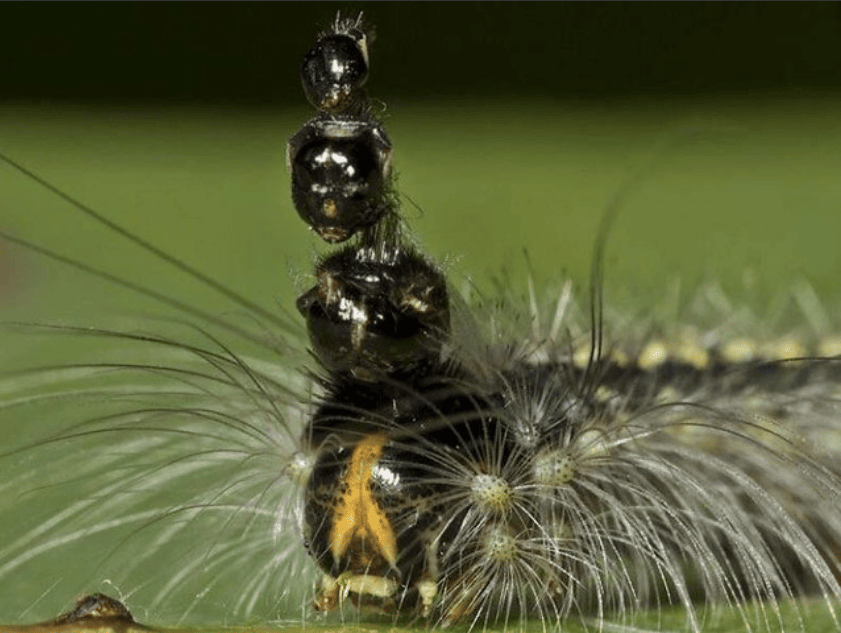
Title photo by Thomas J Astle (Possibly Zoosphaerium neptunus, Madagascar)
Giant Pill Millipedes (Sphaerotheriida) are found in Southern Africa, Madagascar, South and Southeast Asia, Australia and New Zealand. They like moist habitats in leaf litter on forest floors
They can roll into a ball if disturbed, smaller ones can be the size of a cherry, slightly larger ones can be golf ball. The largest which come from Madagasgar can be the size of an orange!
.....crunchy on the outside with a soft chewy centre....
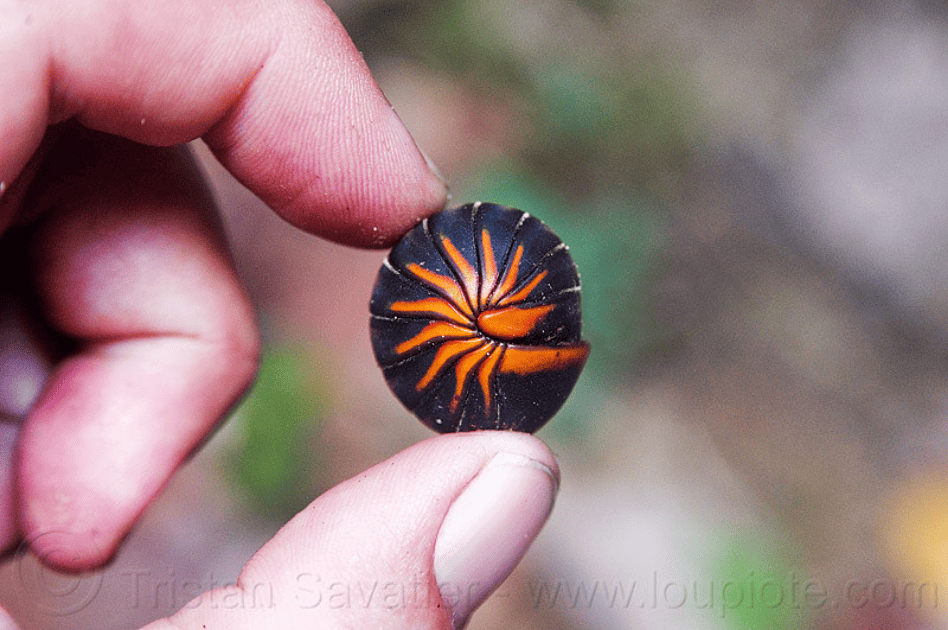
Borneo Giant Millipede, Photo by Tristan Savatier
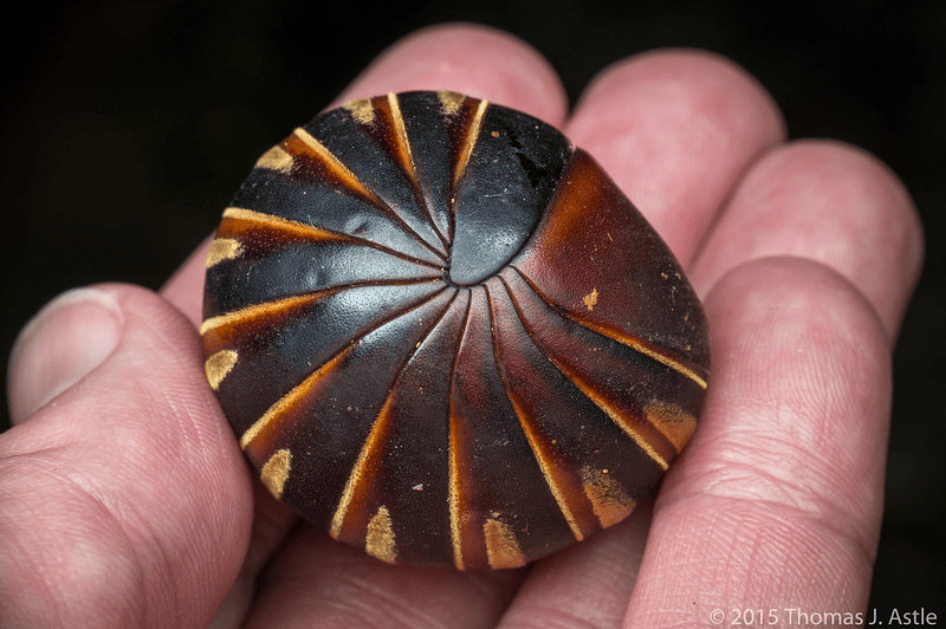
Sabah, Borneo, Photo by Thomas J Astle
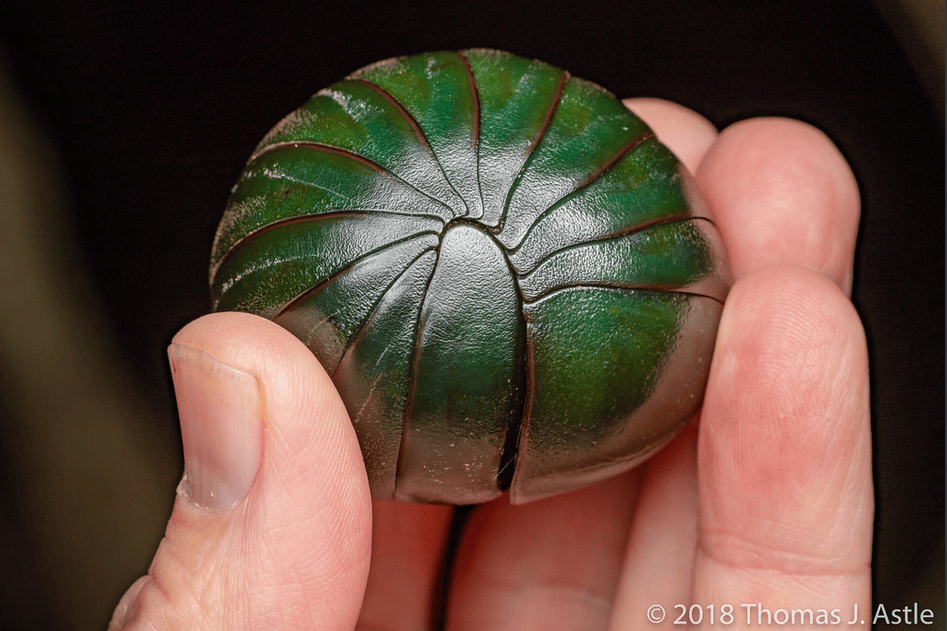
Possibly Zoosphaerium neptunus, Madagascar. Photo by Thomas J Astle
The Giant Millipedes first and last dorsal plate align perfectly with no gap, making a tightly sealed ball which most predators can't open, however there are some including snails in South Africa which specialise in feeding on them. Also Meerkats and birds will hunt and eat them!
They are ground dwelling detritivores, and feed on dead organic matter, such as leaves and wood on the forest floor. They play an important role in decomposition helping to break down organic matter back into the soil!
A few Giant Millipedes can produce sound!
Sphaeromimus pill-millipedes live in the rainforests of southeastern Madagascar.....Males have a structure on their anterior telopod, known as the harp, which has several ribs and is able to produce sounds. This stridulation organ is still not well understood, but may play a role during courtship. Source
The name for them in the local language [in Madagasgar] is 'tainkintana' which means 'star droppings'!
Their antennae are very dexterous and mobile, and resemble elephant trunks as they probe their environment!

Sabah, Borneo, photo by Thomas J Astle
Their sex lives have 4 different phases....
The first phase is when a male detects a female, and orientates itself by positioning its anal shield towards the potential partner. Second, once the male is in contact with the female it starts to make stridulation sounds and vibrations. If the female recognises the male and is receptive, she will open up from her rolled-up position, or not roll up, and the male will then move below the female and grab her front legs with his telopods
The male then ejects sperm from his penises (he has one small penis at the base of each of the first pair of legs on the second segment), and transfers the sperm backwards along his legs and into the female opening which is on her second pair of legs. The two millipedes will then separate. After that, the female lays her eggs in the soil and covers them with a mud layer for protection. The eggs hatch into very small, pale pill-millipedes. Source
They are slow movers and are able to burrow into the soil and leaf litter. They also come in a nice variety of colours and patterning!
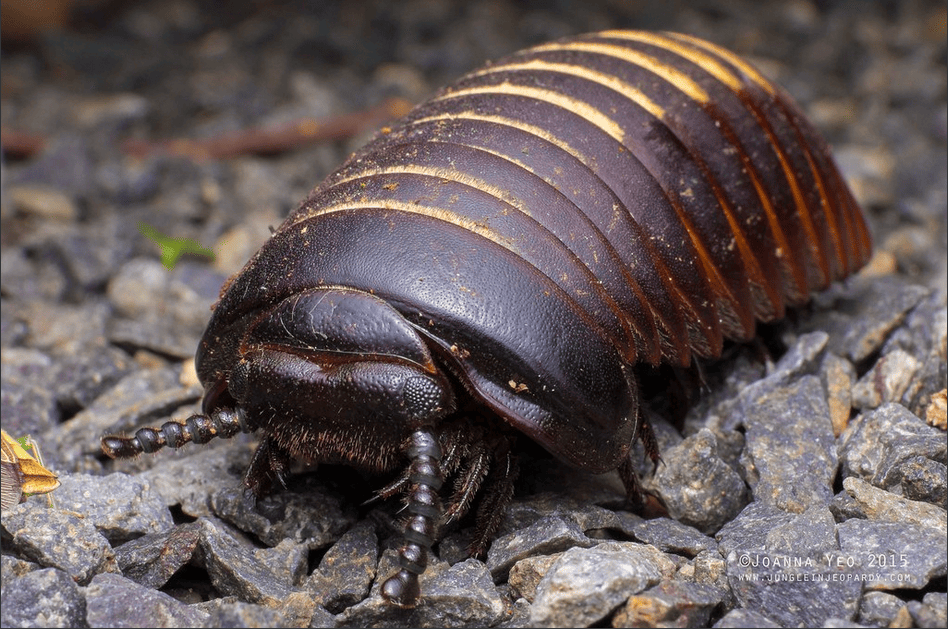
Photo by KancheongSpider
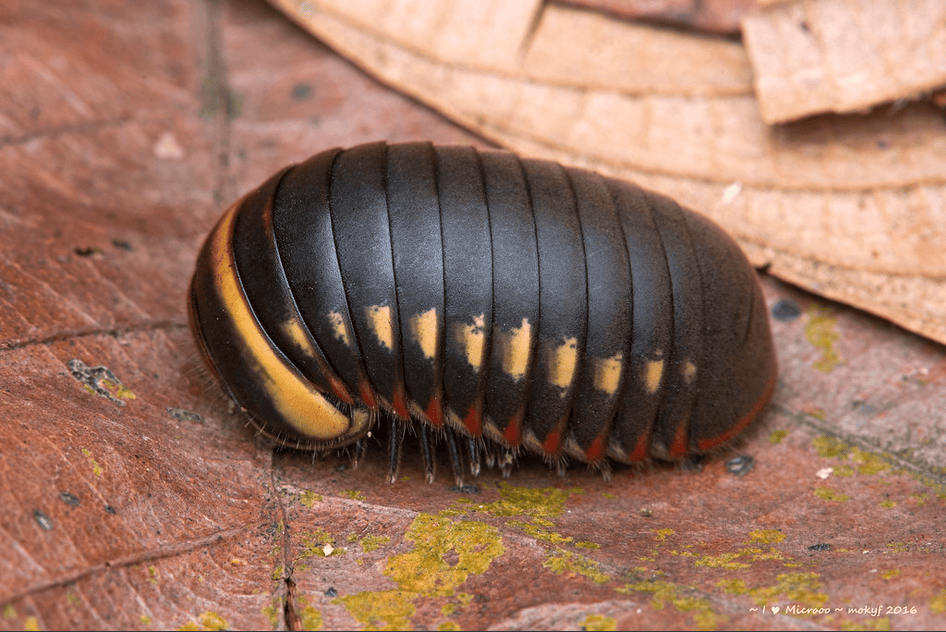
Photo by Mok Youn Fai
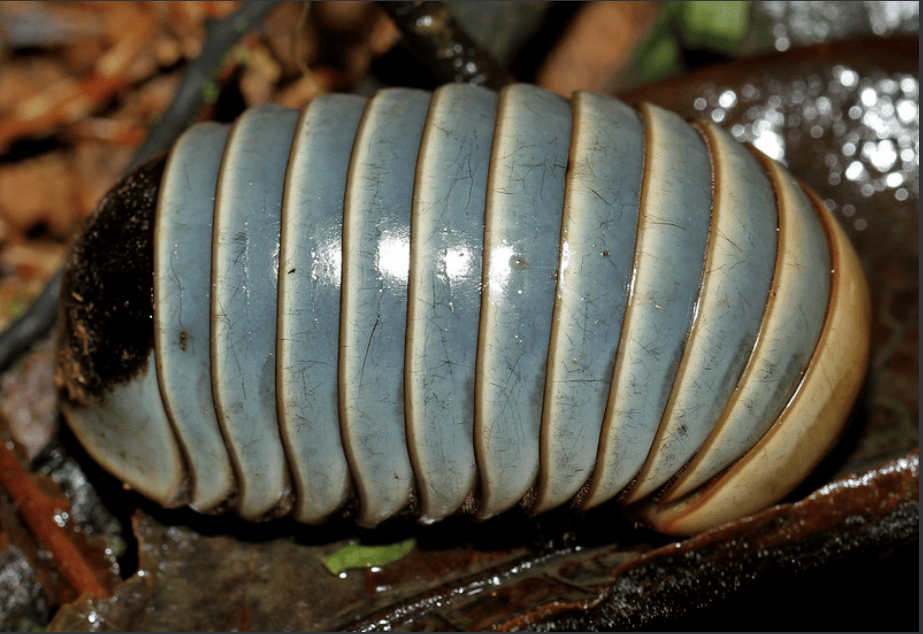
Agumbe Rainforest Research Station, Karnataka, India, photo by cowyeow
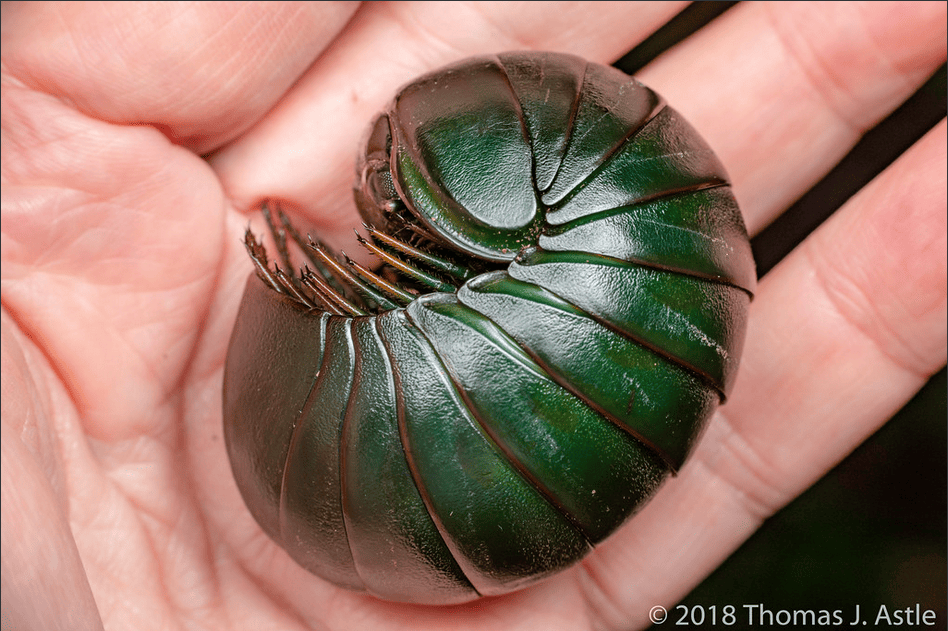
Possibly Zoosphaerium neptunus), Madagascar, photo by Thomas J Astle
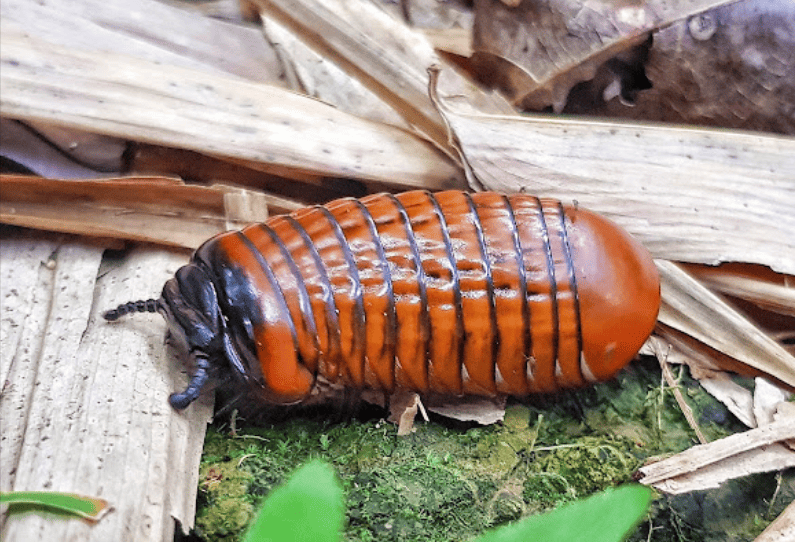
Bothrobelum rugosum, Bau, Sarawak, Malaysia, Photo by bob5
Adult females have 21 leg pairs (42 in total), while males have an additional 2 leg pairs, which are probably used to grasp onto the females during mating!

Zoosphaerium neptunus, photo by Nicky Bay
.....draw me like one of your French girls.......
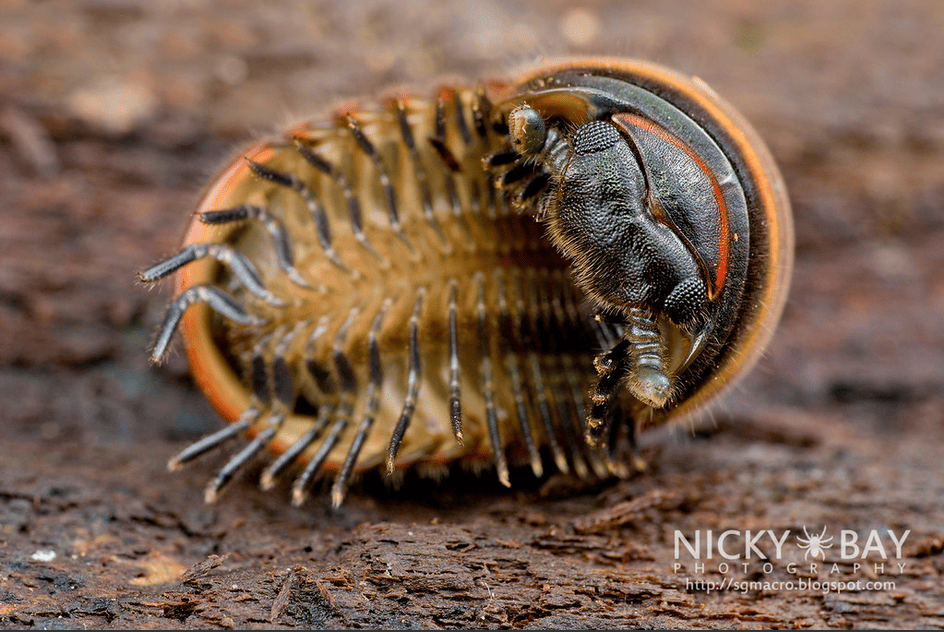
Zephroniidae, photo by Nicky Bay
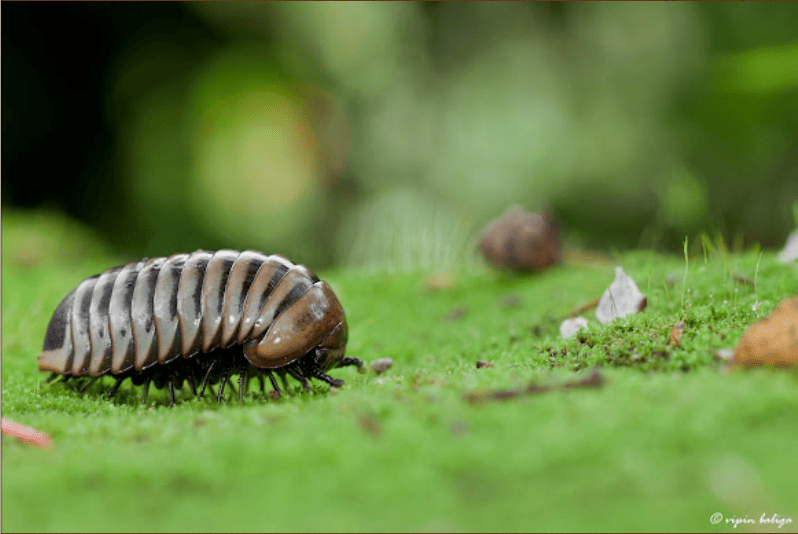
Sphaerotheriida, Karnataka, India, photo by vipin.baliga
All info via wikipedia and Scientific American unless otherwise stated
Also I'm not an expert, I just like sharing fun things and critters, any errors let me know in the comments and I'll edit my post, cheers


